BOLD TENDENCIES 2020
Sol Bailey-Barker
Jeremy Deller
Jack Evans
Nathaniel Faulkner
Lucy Gregory
Jenny Holzer
Rene Matić
Lilian Nejatpour
Davinia-Ann Robinson
Rafał Zajko
IGTV Programme Tour with our Art Trainees
Photo: Damian Griffiths
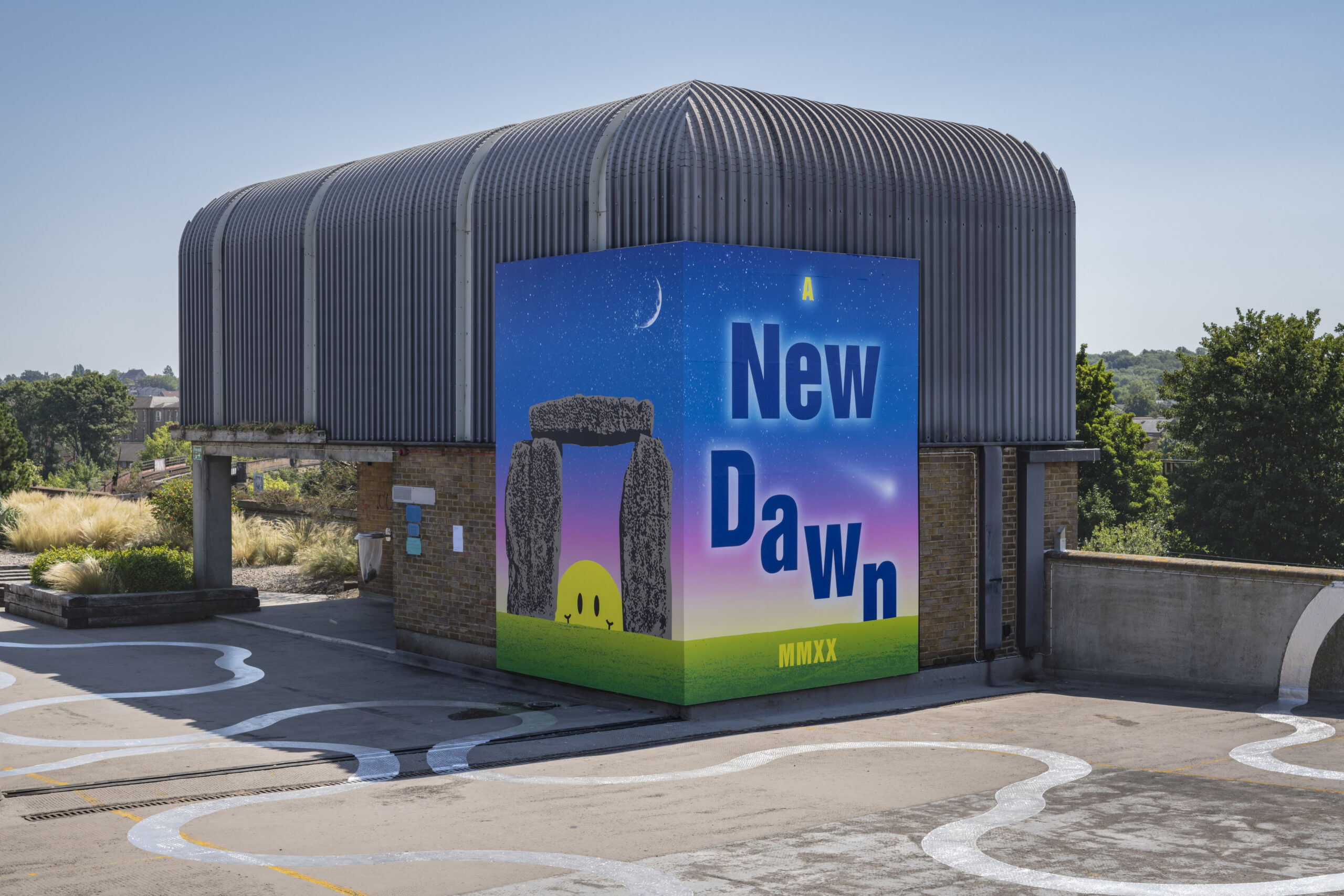
Sol Bailey-Barker
Jeremy Deller
Jack Evans
Nathaniel Faulkner
Lucy Gregory
Jenny Holzer
Rene Matić
Lilian Nejatpour
Davinia-Ann Robinson
Rafał Zajko
IGTV Programme Tour with our Art Trainees
Photo: Damian Griffiths
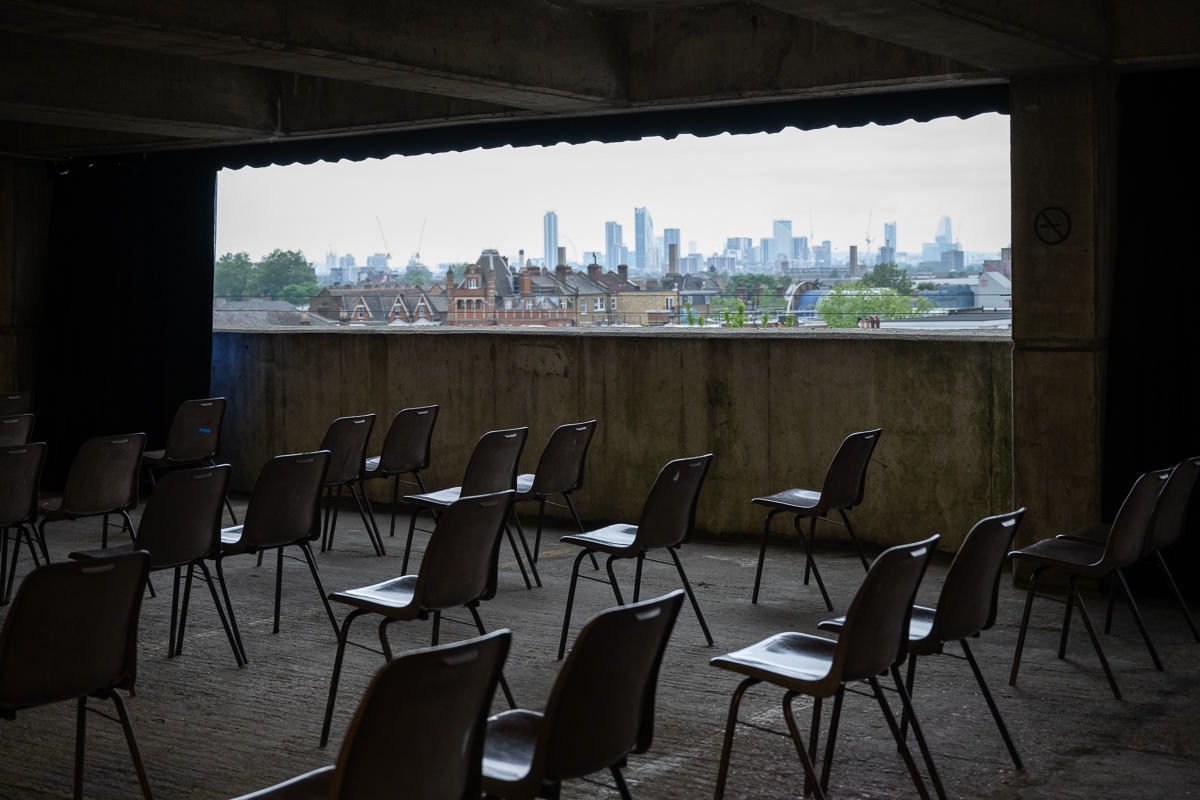
Sheku & Isata Kanneh-Mason — 08/8
Samson Tsoy & Pavel Kolesnikov — 15/8
James McVinnie — 05/9
Es Devlin, Fraser T Smith, Carlo Rovelli — 09/9
Brian Dillon, Katharina Volckmer, Frank Wynne — 10/9
Isata Kanneh-Mason — 18/9
Samson Tsoy — 19/9
Pavel Kolesnikov, Elina Buksha, Aurelien Pascal — 19/9
Photo: Damian Griffiths
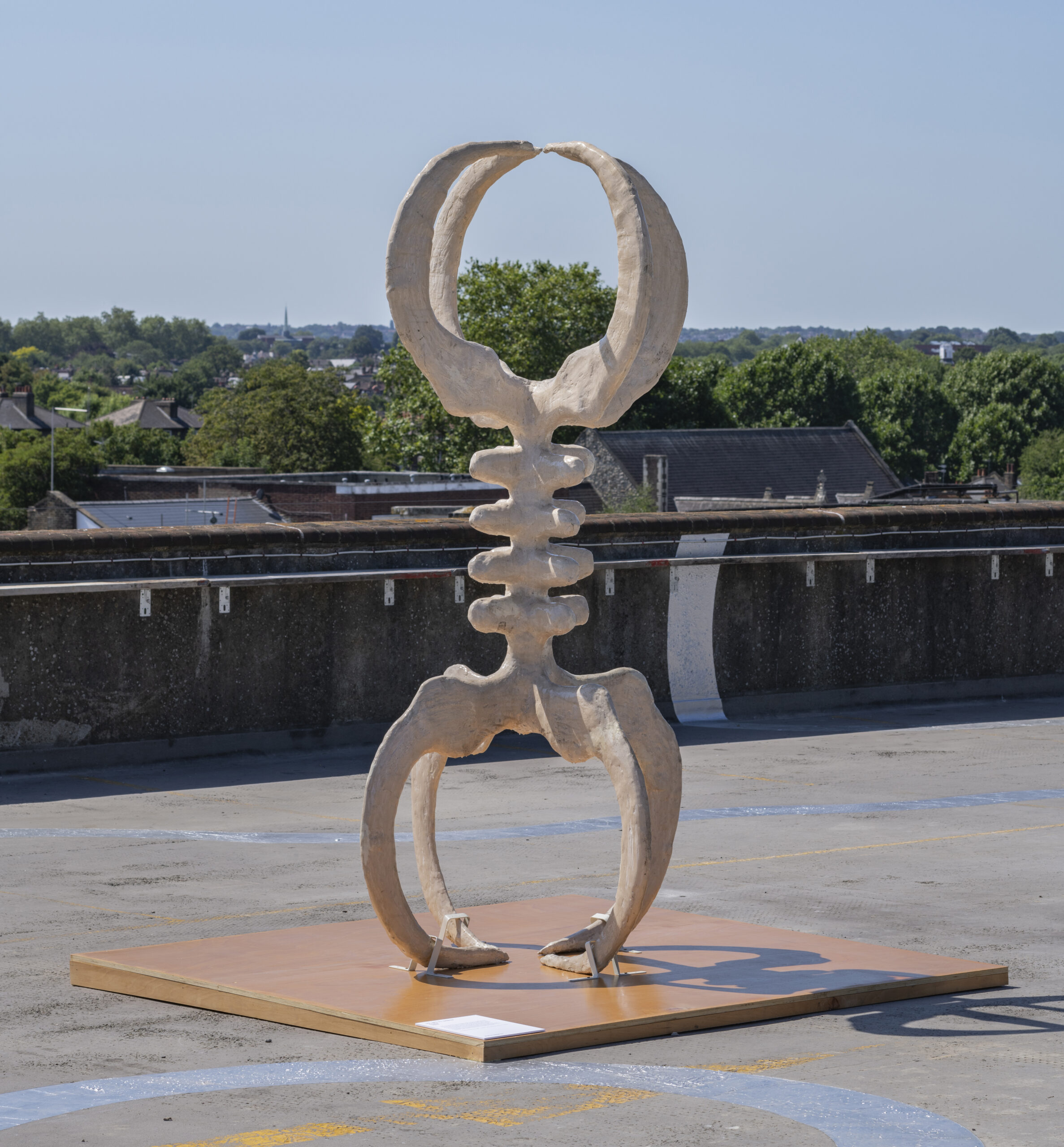
Vajra, 2020
‘Vajra’ (The Weapon of the Gods) means ‘divine enlightenment’ or ‘inspiration’ in Sanskrit. Depictions of deities carrying these sacred weapons are found throughout the ancient world. Here the Vajra is transformed into an imagined animal spine, playing with the language of reconstructive archeology and particle physics.
The Vajra may be a creature of the ancient world or a projection of a future entity brought to life through new technologies. Its form as much references depictions in ancient iconography as it does those found in contemporary technology, such as Lazar Weapon Systems or the Hadron Collider.
Photo: Damian Griffiths

River, Roads & Fire, 2020
The epic of Gilgamesh (2000 BC) is the oldest story ever told. It contains the first record of human impact on the environment. The Sumerian tale describes vast tracts of cedar forests in present day Southern Iraq. According to the story, Gilgamesh defies the Gods by cutting down the forest, and in return, the Gods curse the land with fire and drought.
River, Roads & Fire is made of two charred trunks of cedar wood enveloped in rubber. The two objects speak to the widespread desertification of land in ancient Sumeria—now seen as the likely result of deliberate deforestation.
By 2100 BC, soil erosion and salt composites in the area had devastated agriculture, forcing communities to move north to Babylon and Assyria. Some of the first laws decreed to protect forests were established in the Sumerian city-state ‘Ur’ in ancient Mesopotamia.
Photo: Damian Griffiths
Sol Bailey-Barker is a multi-disciplinary artist working primarily with sculpture, sound and performance. Bailey-Barker is informed by the development of technologies that were for millennia seen as shamanic for their transformative power upon the landscape and their influence over life and death.
His work reconnects technological development and its ancient spiritual origins. Drawing on the sound of rhythmic machinery, deep space and sacred bells, Bailey-Barker’s sculptures often double as sonic ritual instruments.
Sol Bailey-Barker (b. 1987, London UK) lives and works in London.

A New Dawn MMXX, 2020
Photo: Damian Griffiths
Jeremy Deller’s multi-faceted practice incorporates forms of social investigation and archival research, often celebrating British popular and vernacular culture. He represented Britain in the Venice Biennale in 2013 and won the Turner Prize in 2004. In 2016 Deller collaborated with Iggy Pop on a life drawing class. In 2017 he participated in Skulptur Projekte Münster.
His recent work includes Putin’s Happy, filmed in and around Parliament Square, London between January and March 2019—concluding with footage of the Brexit Betrayal March on March 29th; the film, Everybody in the Place: An Incomplete History of Britain 1984-1992, a re-evaluation of acid house in relation to the social and political landscape of 1980s Britain, and we’re here because we’re here, a UK-wide event commissioned by 14-18 NOW for the centenary of the Battle of the Somme in 2016. Deller is represented by The Modern Institute, Glasgow; Art Concept, Paris and Gavin Brown’s enterprise, New York.
Jeremy Deller (b. 1966, London UK) lives and works in London.

Take What You Can, Give Nothing Back, 2020
Take What You Can, Give Nothing Back is dedicated to the small scale cultural piracy in which we all partake in some form or another. It is equally inspired by the landscaping of Disneyland, the Buontalenti Grotto in Florence and a generic ‘Three Graces’ garden bird bath.
The fountain’s base imitates a limestone formation which peaks in a two-tiered crucible, evoking a beautiful stone carving which has succumbed to a long passing of time. The leaf blocks nestled below its first tier are modern and manufactured. The Caryatid ‘Three Graces’ are a scaled replica of those found in the Erechtheion in Athens.
Of the six statues that stood united for 2500 years, one was eventually removed by Lord Elgin in an act of cultural piracy. Legend has it the other five could be heard weeping in the night, which can now be heard in the gentle cascade of water flowing over their forms.
Photo: Damian Griffiths
Jack Evans is a visual artist, film maker and sculptor. His work is interested in ideas of aspiration and cultural dissemination, drawing motifs from the aesthetic ideas of ‘luxury’ and the societies which reinforce it.
His work often uses common building materials alongside bespoke processes to simulate and distort the decorative decisions we make in our homes and gardens.
Through recreation and imitation, his work draws heavily from classical civilisations through to the more obscure symbols of aspiration revived from his Nineties childhood in the Midlands, familial trips to B&Q, and package holidays to the Mediterranean.
Jack Evans (b. 1992, Mansfield UK) lives and works in London.
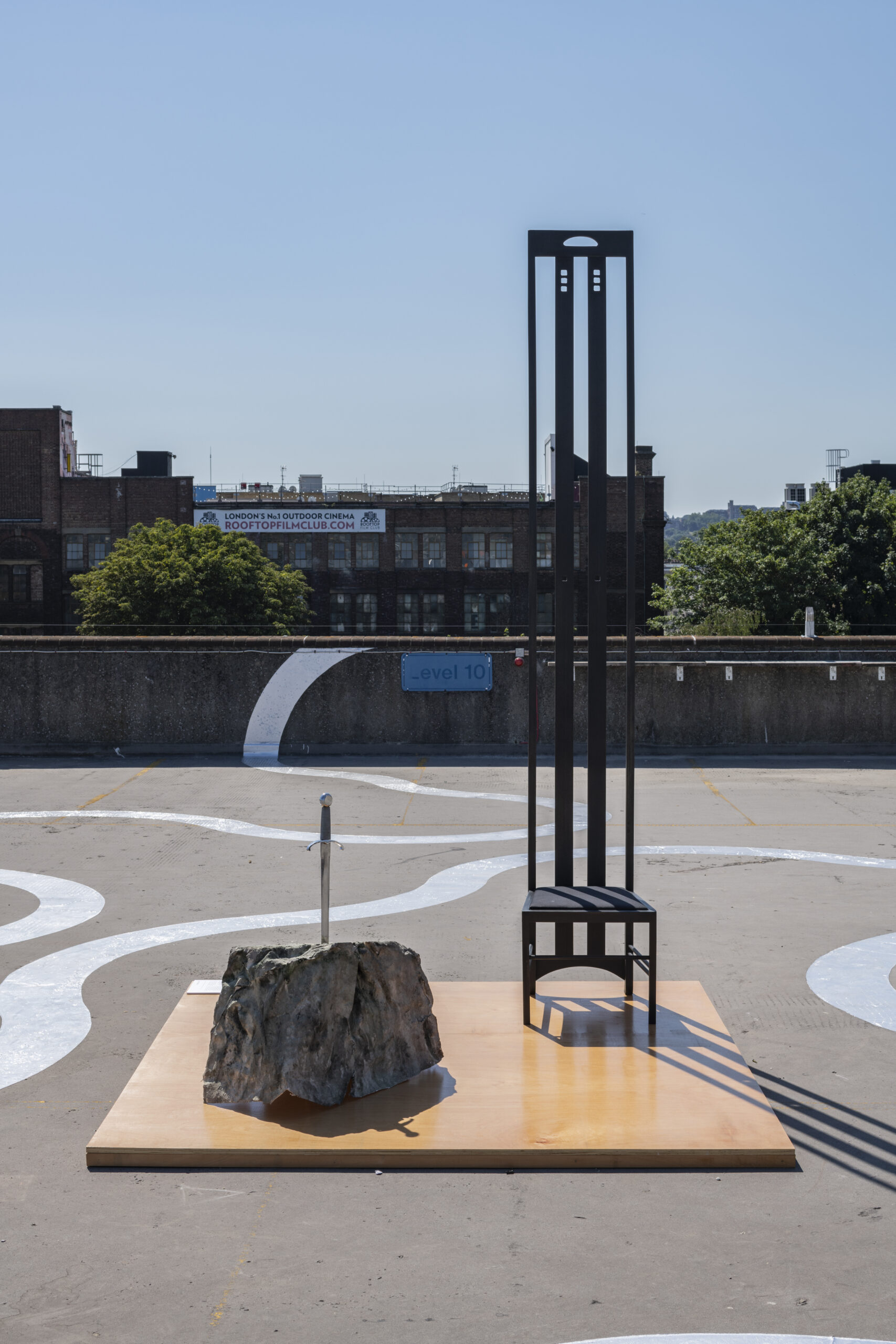
The Throne Of The Third Heaven Of The Nations’ Millennium General Assembly, 2018
The Throne… is a reproduction and adaptation of the high-back chair designed by Scottish architect Charles Rennie Mackintosh, and produced in 1901 for the Ingram Street Tea Rooms in Glasgow. The artist has doubled the height of the original design to 3 metres, stretching the proportions whilst retaining the sculpted back spokes to make absurd an already exaggerated design. The iconic chair’s curious new character, combined with its original function—the ‘high tea party’ of Edwardian Glasgow—sends us in the direction of the madcap absurdity of Alice in Wonderland or the surreal energy of Fantasia.
The work’s title is inspired by a sculpture of the same name constructed by American caretaker James Hampton. Over the course of 14 years between 1950 – 1964, Hampton created an equally absurd, ornate work in his garage from scavenged and salvaged scraps – embellished with light bulbs, scrap wood and tinfoil, a homemade throne of the gods. It was the only thing Hampton ever made and is housed in The Smithsonian American Art Museum, Washington.
Once in a Lifetime, 2020
The sword in the stone is an iconic symbol of the myth of King Arthur: the boy king who would solicit the legendary sword Excalibur and claim the crown of England. Here, the sword in the stone is a hollow fibreglass boulder and blunted weapon. The work is stage magic: an illusion that laughs whilst it entices. It offers a virtual experience of arrested fantasies: a form of myth for the consumer age.
Photo: Damian Griffiths
Nathaniel Faulkner combines archetypal motifs and imagery with references to popular culture and recent events. His work draws from both ‘high’ and ‘low’ culture and is interested in the moment of their resulting clash or amalgamation.
References extend from ancient civilisations to science fiction, film and art history. Faulkner’s approach to history is eclectic, celebrating anachronism and ‘alternative fact’. The resulting work combines real and fictitious worlds, uncanny and elusive.
Nathaniel Faulkner (b. 1995, Chippenham UK) lives and works in London.
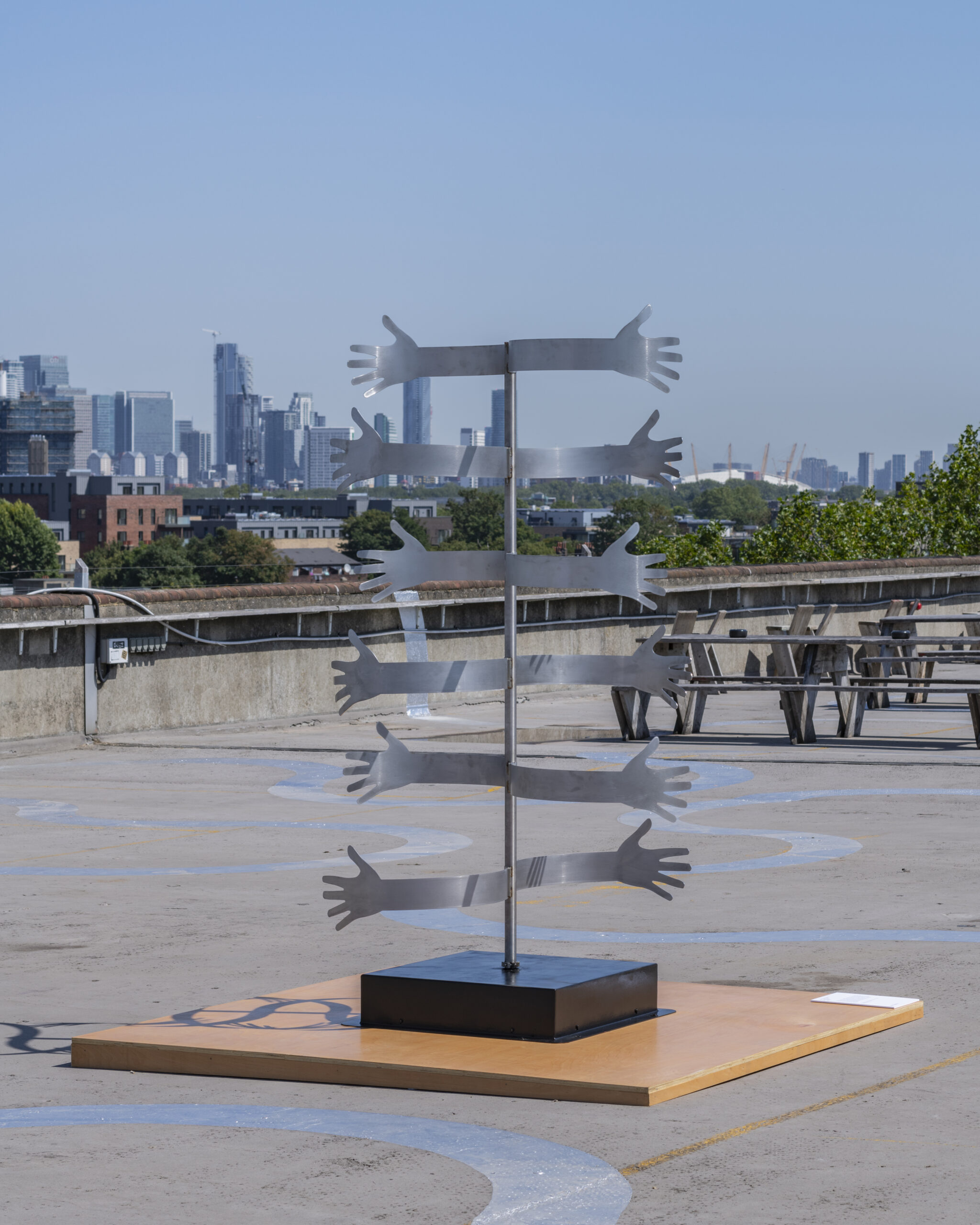
Embrace, 2020
Embrace is a kinetic sculpture composed of six revolving cartoon arms spinning around a central axle. The work is a reconstruction of table-top paper collages made during lockdown, evoking touch in times of increased physical distance.
The work’s theatricality is conferred with comic animation – using industrial processes, metal sheets are bent and folded to employ the same logic as the visual and rotary delights of a fairground carousel ride.
The optical and mechanical reprise of Embrace is satirical—the revolving hands of arrested intimacy arousing a newfound optimism for the future.
Photo: Damian Griffiths
Lucy Gregory is an artist working in sculpture, photography and drawing. In her work she creates immersive, large-scale kinetic systems of objects and environments that play with the themes of agency and materiality.
Fractured sets or propers are activated in bizarre and comic realsation.
Through her use of theatricality and flatness, her works often engage audience participation to activate surreal mechanisms that draw on bodies as flexible and unstable; undercurrent with tones of violent, slapstick humour.
Lucy Gregory (b. 1994, Amersham UK) lives and works in Buckinghamshire and London.
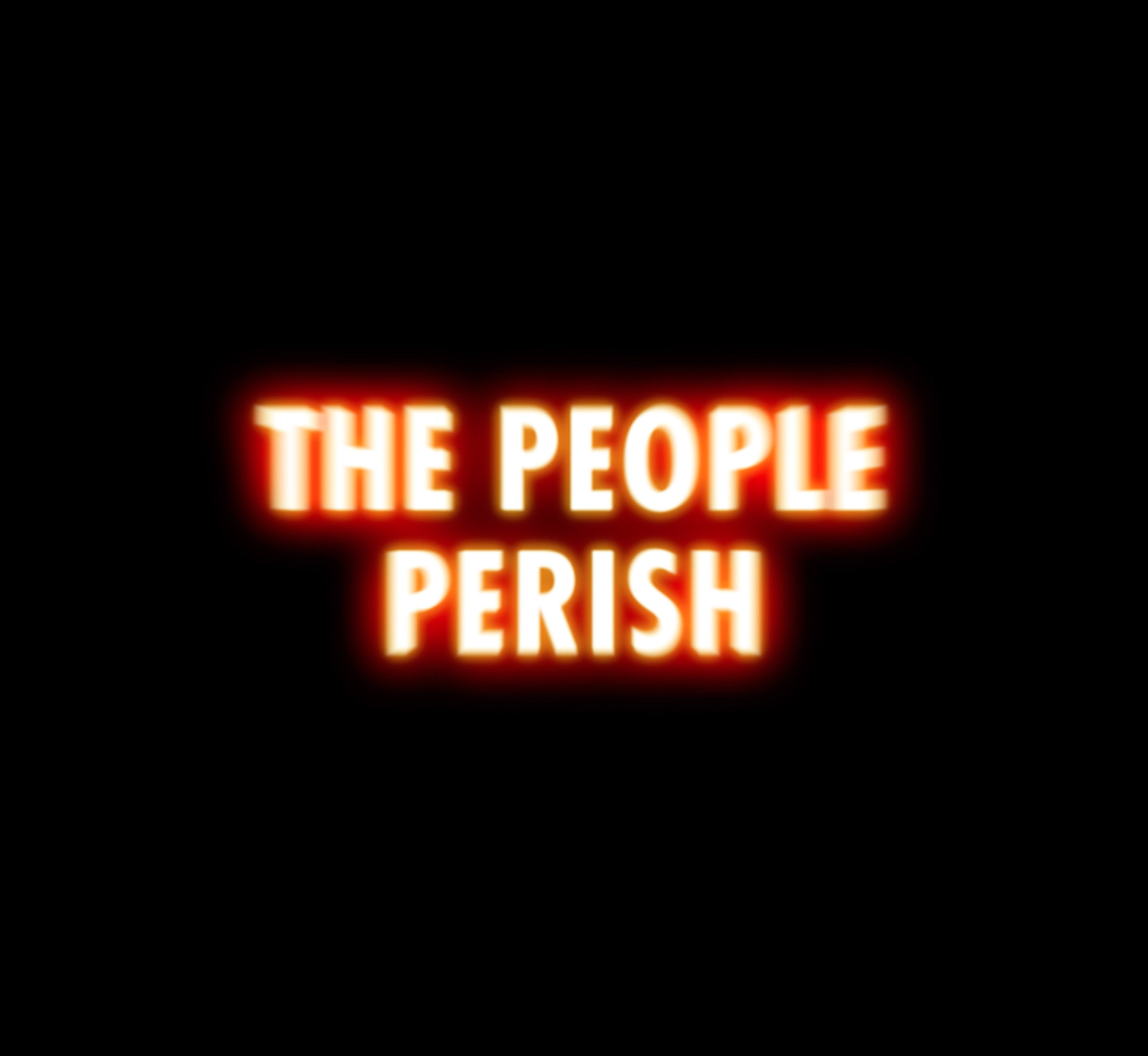
EXPOSE, 2020
Conceived in May 2020 amid the Covid-19 pandemic, EXPOSE is a reaction and response to the approach by the United States Government to the ongoing public health emergency.
Originally created for Instagram, the work was then adapted to LED trucks that toured the streets of Washington, DC and New York in May – a series of veracious and isolated words glowing red and pulsing toward the screen – RANT, RAGE, BLOVIATE, SCORN. Words strung together offer phrases – THE PEOPLE PERISH.
EXPOSE spotlights the President’s cavalier and incendiary attitude to the crisis and the mishandlings of the American government. As the world watches a crucial period in American history unfold, Holzer’s work incites us all to examine our beliefs and speak with vivid truth to unscrupulous power.
Animation: Paul Kamuf
For more than forty years Jenny Holzer has presented her astringent ideas, arguments, and sorrows in public places and international exhibitions – she represented the USA and won the Golden Lion for her presentation at the Venice Biennale in 1990.
Her medium, whether formulated as a T-shirt, a plaque, or an electronic sign, is text. Starting in the 1970s with a series of posters and continuing through her recent light projections on landscape and architecture, her practice has rivaled ignorance and violence with humor, kindness, and courage.
Jenny Holzer (b. 1950, Ohio US) lives and works in New York.

no more quick, quick, slow, 2020
no more quick, quick, slow is a call to action. It is a charitable gesture: to do,dance better. Inspired by a quote in Lucy Bland’s book Britain’s ‘Brown Babies’ (2019) that reads, “We English girls took to it like ducks to water. No more quick, quick, slow for us. This was living.”
The Lucy Bland quote references meeting, loving and dancing with black men, specifically black G.I.s – the messy dance of de-colonisation. Matić’s new work centres itself amidst interracial love and relationships.
It speaks to a moment where police brutality and the murder of Black peoples circulates on social media with agonising frequency. Through creativity, Matić creates a world for themselves so they do not have to die in those of others, but dancing alone cannot protect them. If only you would join in, you could take to it too.
Photo: Damian Griffiths
Rene Matić’s work explores the immeasurable dimensions of Blackness through the lens of their own personal experiences as a queer, Black womxn living in the diaspora. Working across painting, sculpture, film, photography and textile, Matić aims to expose, combat and question the power relations that pervade society.
Recent work has explored the Skinhead movement, its founding as a multicultural marriage between West Indian and white working class culture and its subsequent co-option by far right white supremacists.
Rene Matić (b. 1997, Peterborough UK) lives and works in London.
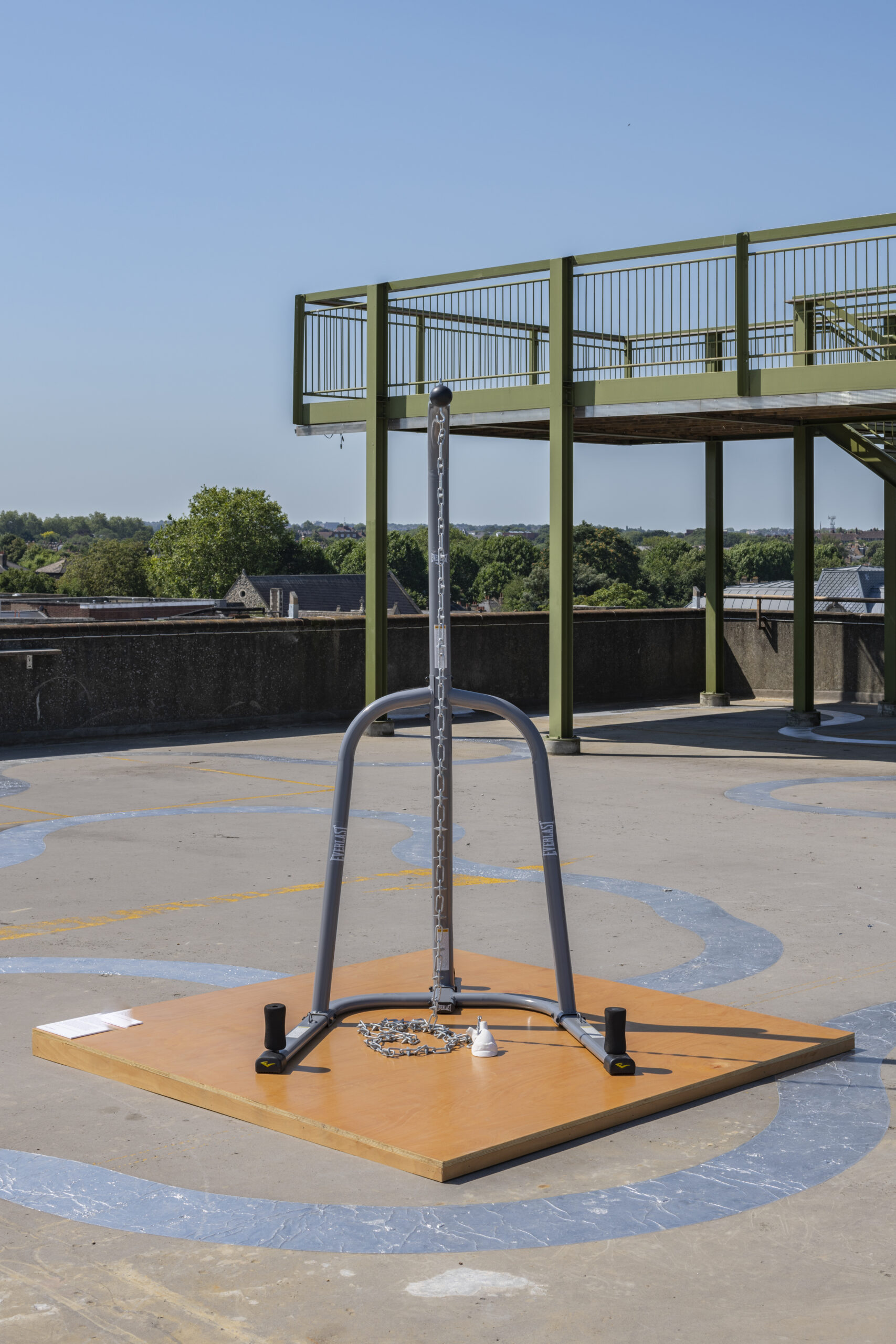
Hoist, 2020
Taking inspiration from the French libertine novel, Le Sopha: A Moral Tale (1742) by Claude Crébillon, Hoist explores the intersection of anthropomorphism and erotica. In Le Sopha, a voyeuristic courtier—the narrator—is condemned to inhabit the form of a sofa until two virgin lovers have consummated their passion whilst sitting on him.
Throughout the novel, the sofa recounts episodes of salacious activity he witnesses, ridiculing the hypocrisy of virtue, respectability and devotion he observes in 18th century France.
Crébillon’s combination of voyeurism and satirical impulse is reflected in the now torturous and harsh figure of the hoist. A half-filled Evian bottle with two necks made from Venetian plaster is hung by a limp galvanised chain and fish hook.
The body is pierced by the exertion of the equipment’s armature but remains unable to rise, vulnerable and exposed. The libidinal energy of the sofa or chaise lounge is substituted for the obsessive character of fitness, discipline and corporate self-help.
Photo: Damian Griffiths
Lilian Nejatpour is a British Iranian artist who works with sculptural forms, sound structures and performance. Her work investigates displacement and duality through a range of influences, such as ceremonial practices in Southern Iran or her northern background in bassline music in Bradford.
Lilian Nejatpour (b. 1994, Bradford UK) lives and works in London.
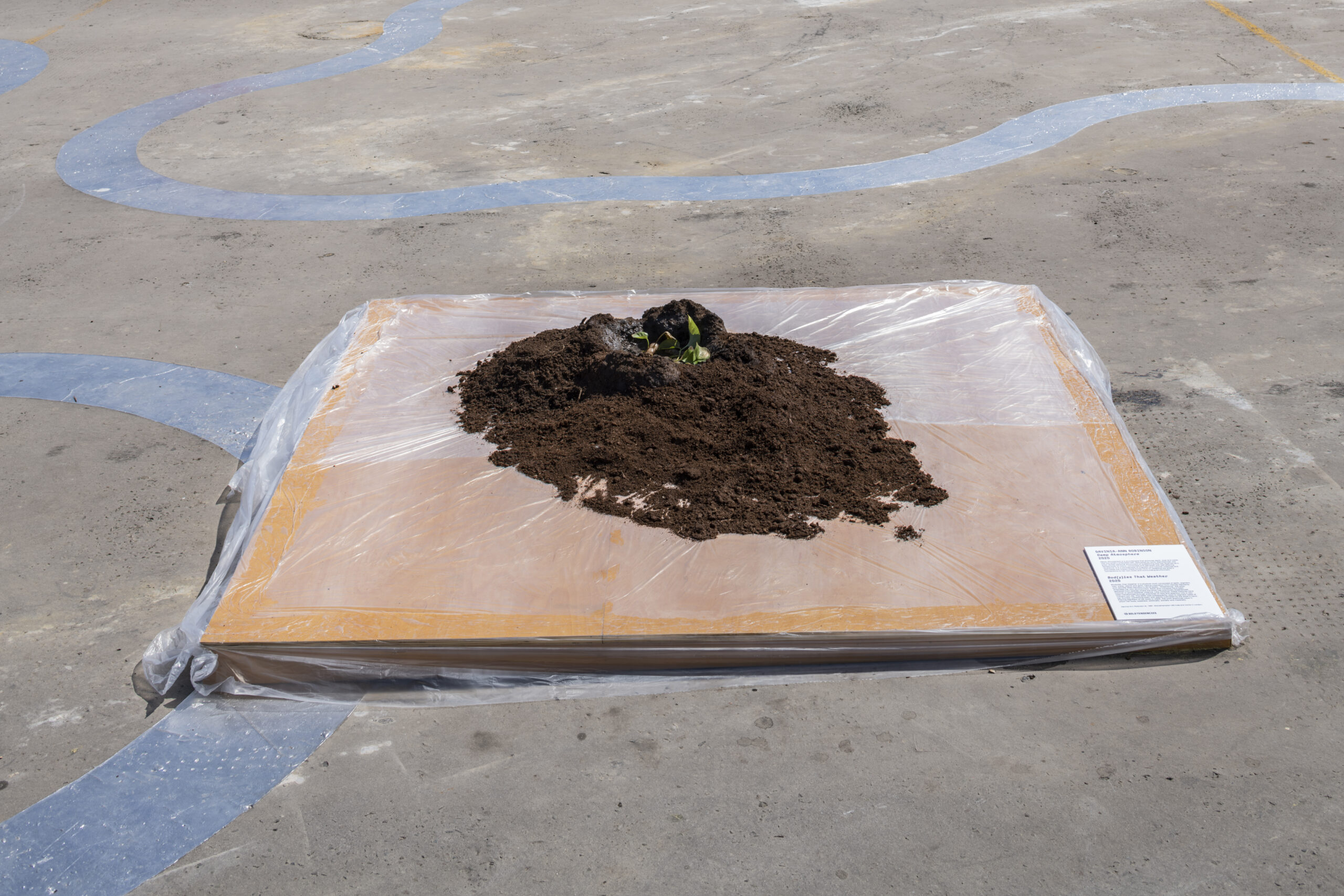
Bod(y)ies That Weather, 2020
Bod(y)ies That Weather is a physical work composed of earth, pigment, wax, water, plants and gold. Taking inspiration from Astrida Neimanis and Jennifer Mae Hamilton’s 2018 essay, ‘Weathering’, here the artist embodies her own environment. Earth and compost have been gathered from spaces where the artist has previously experienced colonial or socio-political violence.
Like compost, these histories have been transformed through practices of care and attention into a new nutrient-rich life. The earth was subsequently used to pigment casts of her thumbs, combining them with plants cultivated by the artist’s hand. Placing signifiers of her body in water, the work examines ways in which her body weathers: politically, socially and materially.
Photo: Damian Griffiths
Damp Atmosphere, 2020
Damp Atmosphere is a soundscape that entwines earth, dust and water with the artist’s embodied self. Splintered by sonic disturbances, the artist recites personal encounters of questioning she has received as a female body of colour, composed and delivered with self-effacing reverence. It is a soundscape of linguistic and colonial violences and articulates the impact these forces have on disabling the artist’s connections to her own body and surrounding environment.
Davinia-Ann Robinson explores the politics of colonial emotions and how these affect Bodies of Colour who reside within colonial spaces. She is interested in the implications of these emotions and the sensations they create in between the layers of one’s skin and the experiences of living within the societal peripheries.
Robinson is interested in how these emotions distort readings and connections to one’s physical and metaphorical body, connections between individual bodies and connections to one’s environment. Robinson is also the founding member of Narration Group, a collective of Women and Non-Binary people of colour who meet fortnightly at the South London Gallery to discuss, dissect and reclaim their narratives.
Davinia-Ann Robinson (b. 1987, Wolverhampton UK) lives and works in London.
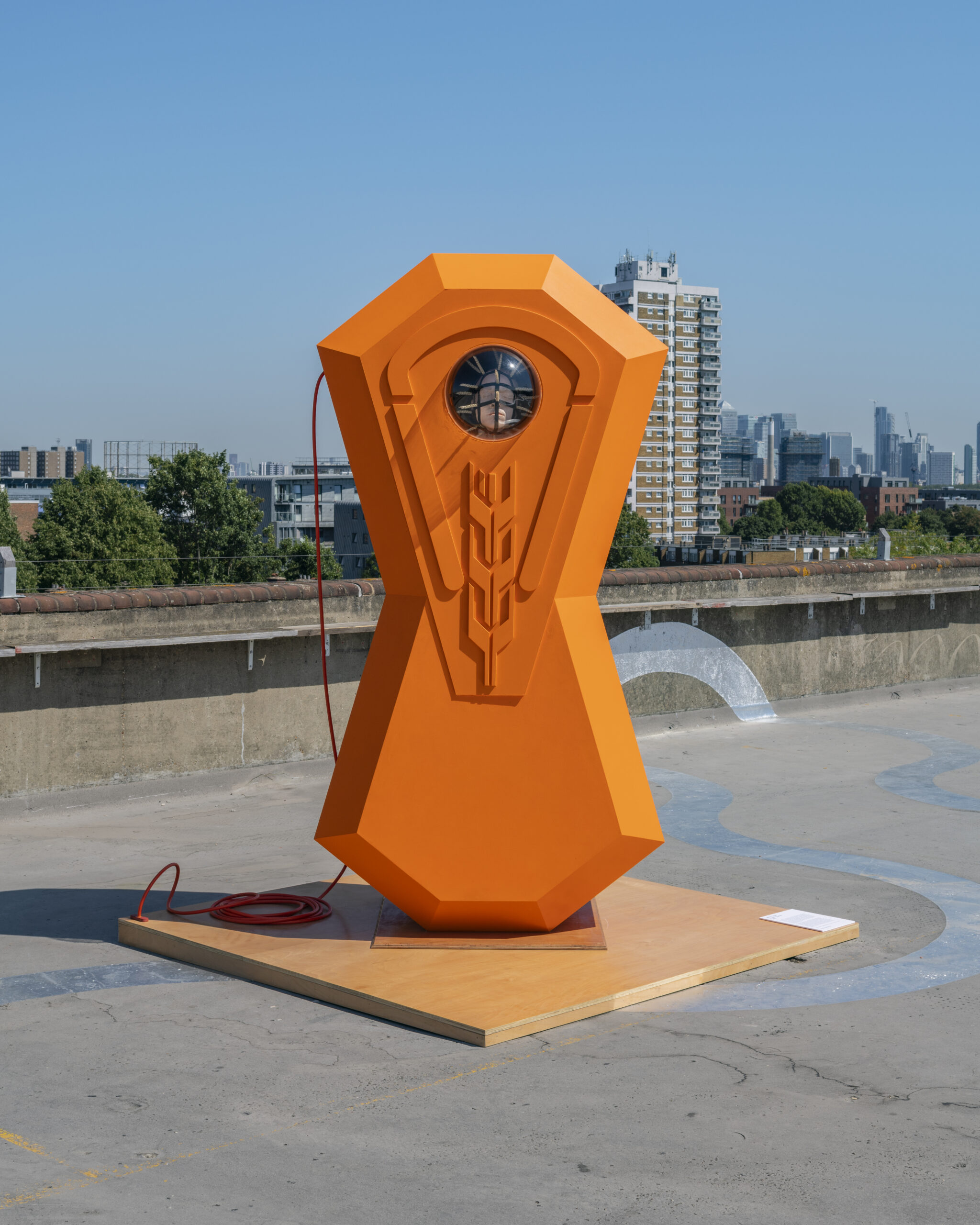
Amber Chamber, 2020
Amber Chamber looks to the artist’s upbringing in north-eastern Poland—a regional area with strong Catholic and agricultural history. Chochoł (pronounced Hohou)—roughly translated as ‘sheaf’—is a Polish word describing the straw covering prepared for the autumn and winter seasons in order to protect shrubs and rose bushes. Villagers would personify chochoł in human form to endow it with strength and vitality, giving birth to an elemental spirit of the same name in Slavic folk demonology. A spirit protecting the household, caring but also jealous, mischievous if irritated.
For Amber Chamber, the artist has embodied the spirit of chochoł—preserved in an upright ventilated sarcophagus, cryogenically frozen for travel to a new frontier. Amber—known in Poland as ‘The Gold of the North’—is abundant in northeastern regions of the Baltics. It is said to form an umbilical cord to archaic and ancient cultures. It is equally said to preserve life and provide healing for those it touches. Installed in his chamber, this figure represents both decay and rebirth: the slow procession of winter followed by the restoration of spring – oscillating from archaism to futurism.
Photo: Damian Griffiths
Rafał Zajko is an artist working in sculpture, performance and costume. His work deals with themes of monuments, socialist public sculpture and the relationship between body, technology and folklore. Zajko was born in the Polish People’s Republic a year before the collapse of the Berlin Wall.
Rafał Zajko (b. 1988, Białystok PL) lives and works in London.
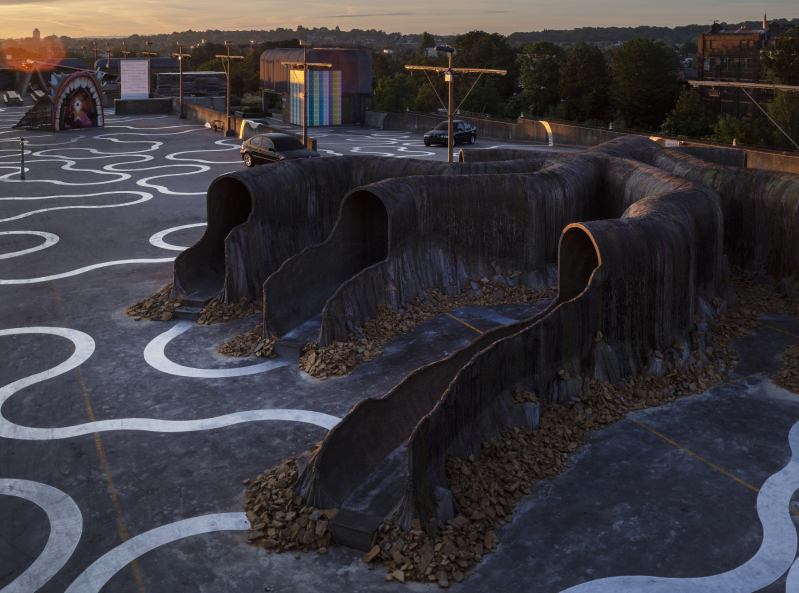
Liz Glynn, Unearthed Underground
Matt Copson, Agape (Infernal Cityscape)
Konrad Smoleński, B
Momtaza Mehri, Toward a Quantifiable Measure of Longing
Jenny Holzer, Inflammatory Wall
Lawrence Lek, FTSE (Farsight Stock Exchange)
Photo: Oskar Proctor
Whether we consider past, future or present, fiction has a critical role. It provides ways of knowing, understanding and questioning ourselves and our histories; of analysing our cultures and dreaming of new futures. Fiction is the catalyst for its contestation, and counterpart to prevailing notions of fact, truth and perception.
In the last decade our reality has permuted. It is more common now to ask, ‘Is this real or not?’ rather than, ‘Is this right or not?’ Truth, reality and fiction are at the fore of our cultural landscape and it would seem that fiction at times outperforms reality. Used to beguile, confuse and alienate, fiction is also form of hyperstition: conjuring into existence whole new worlds through the process of its own narration.
Siphoning from unearthed sewer networks to global FinTech skyscrapers, gothic carnival facades to suspicious and auditory happenings, our six new commissions together create a wealth of speculative visions that haunt and excite our imagination, representing the diverse and tumultuous landscape of our media, politics, social environments and culture: here the confluence of appearance, fiction and reality is all to play for.

Lawrence Lek, FTSE (Farsight Stock Exchange), 2019
FTSE (Farsight Stock Exchange) is a multimedia installation that imagines the architecture of decentralised financial services in an emerging age of smart cities. Set in a future London, the project revolves around Farsight Corporation: a fictional Anglo-Chinese technology company who acquire the Bold Tendencies car park site and repurpose the building for their inaugural real-estate bid.
Visualised through a fully interactive video game, Farsight propose FTSE, a prototype FinTech accelerator, housed within a pound (£) shaped skyscraper that soars a thousand feet into the air. Constructed on top of the existing car park, the tower contains algorithmic trading floors, FinTech incubators, server farms, penthouse lounges and smart-tech art galleries. Installed at the entrance to Bold Tendencies, visitors are invited to explore for themselves the digital world of Farsight Stock Exchange.
Lawrence Lek (b. 1982, Frankfurt) lives and works in London.
Photo: Damian Griffiths
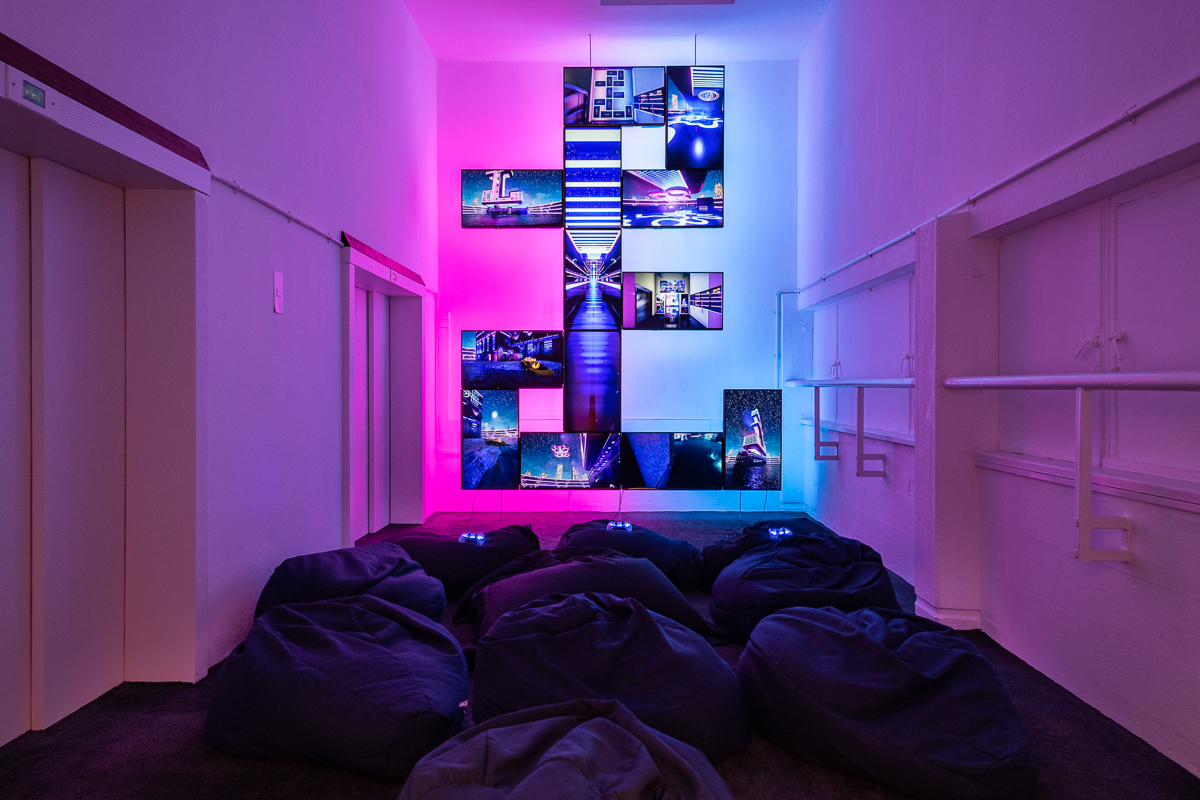
Lawrence Lek
FTSE Farsight Stock Exchange, 2019
Photo: Damian Griffiths

Liz Glynn, Unearthed Underground, 2019
A sprawling network of tunnels across the car park roof, Unearthed Underground takes its reference and form from the original London sewer system designed by Joseph Bazalgette in 1865. As a teenage punk in the 1990s, Liz Glynn watched as indie and punk were subsumed by the market and now questions whether an “underground” is still possible in today’s global environment.
Equally inspired by the writing of Dostoyevsky, Victor Hugo and C.S. Lewis – where the underground represents a darker, fantastic and utopian space – Liz Glynn is equally concerned with historical cases of those members of society operating literally and figuratively in the shadows below ground. Liz Glynn likens the act of uprooting the sewer to the current political climate, where the social discomforts hiding beneath a society can no longer be ignored.
Liz Glynn (b. 1981, Boston) lives and works in Los Angeles.
Photo: Oskar Proctor
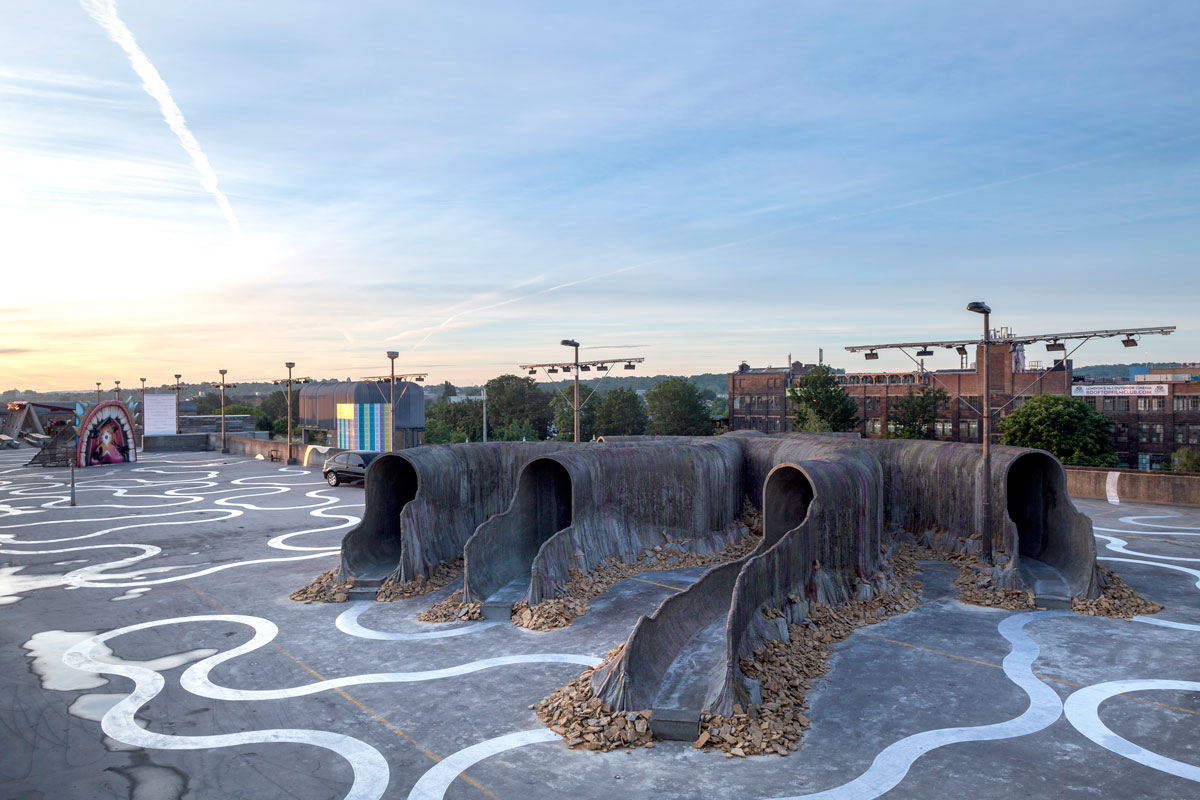
Liz Glynn
Unearthed Underground, 2019
Photo: Liz Glynn

Konrad Smoleński, B, 2019
B takes the form of three abandoned black vehicles. These cars (of a type commonly associated with organised crime) are locked with tinted windows, no license plates and with a very low frequency audio track played periodically at high volume inside. The sound can be heard outside the car transmitted through vibrations in the vehicle body: a series of low frequency drones that build an atmosphere of suspicion and confusion.
Konrad Smoleński offers us an experience of the dissonant world that came to embody Poland and other post-Soviet countries during their difficult transition to free market capitalism in the early 1990s. During this period, a dramatic increase in private enterprise coupled with the decreased power of state police led to a flourishing of organised crime across Poland, The Balkans and the Russian Federation. These cars have since come to embody a universal feeling of perpetual social unrest and illusion, and point to alternative forms of power and control that exist beyond our visible perception.
Konrad Smoleński (b. 1977, Poland) lives and works in Warsaw & Bern.
Photo: Oskar Proctor

Konrad Smoleński
B, 2019
Photo: Oskar Proctor

Matt Copson, Agape (Infernal Cityscape), 2019
Drawing from Medieval legend and British popular culture, Agape (Infernal Cityscape) presents a large-scale airbrushed fairground facade. Framed by a hellish mouth with broken teeth and cracked lips, the facade’s melodramatic forms and gothic design emulates the furore and festivities of carnival – a place of temporary liberation from prevailing truths and established order.
Cast with a central viewing hole, Matt Copson’s sculpture frames and is framed by the city. It stands for a fantastical space: a peculiar civic environment that exists beyond the status quo, a place where new forms of identity and collective joy are encouraged and take place. That said, mirroring the carnivalesque excess of the city and its frequent lapses into disorder and chaos, the murder of crows that populate this mouth are a cautionary omen.
Matt Copson (b. 1992, Oxford) lives and works in London.
Photo: Oskar Proctor
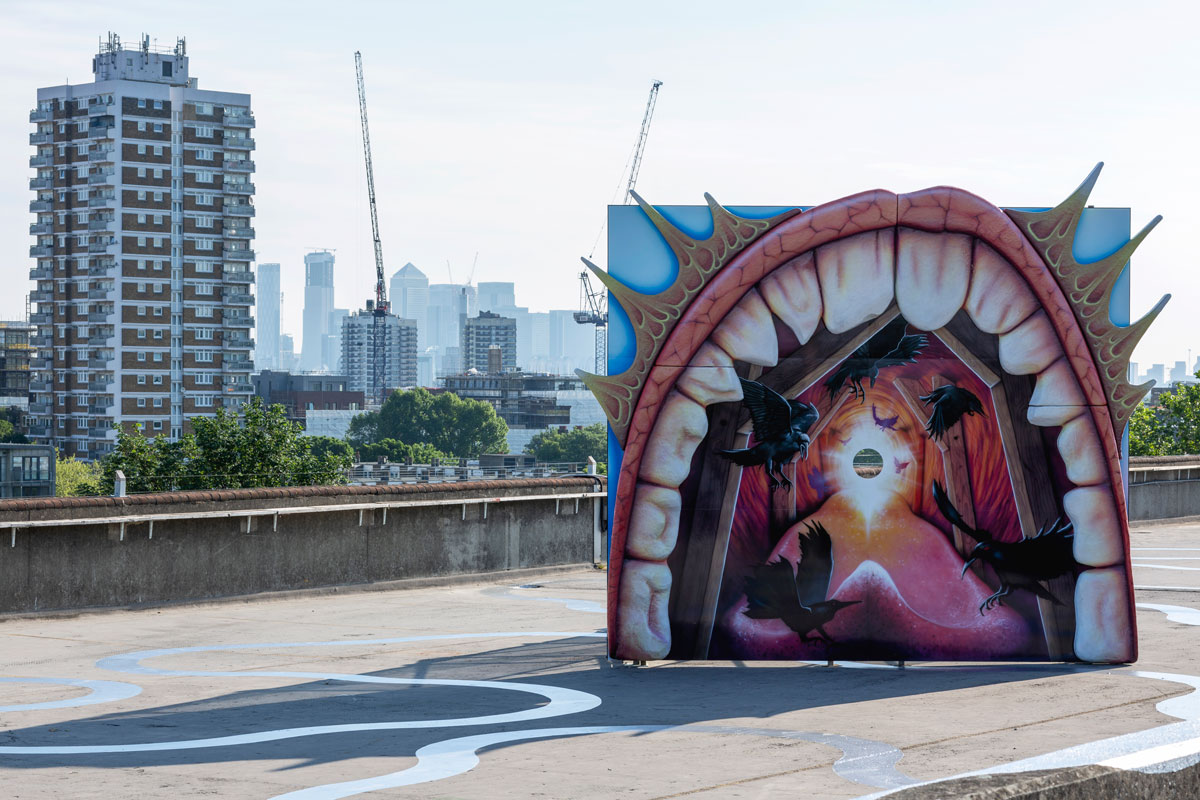
Matt Copson
Agape (Infernal Cityscape), 2019
Photo: Oskar Proctor

Momtaza Mehri, Towards a Quantifiable Measure of Longing, 2019
This new work by Momtaza Mehri (Young People’s Laureate for London 2018-2019) is animated by the honored tradition of the anti-manifesto. It embraces the potential of uncertainty in an age increasingly infatuated with absolutes. How you read or encounter the poem is your choice and your responsibility.
Poetry can destabilize the fiction of borders, national myths, the meritocratic fantasies of the capital-L Literature industry, citizenship as conditional legibility and all other inheritances we collectively write into imagination and law. Like reading a fairy tale backwards, the poem can be approached in many ways, from many directions and vantage points. It welcomes disaggregation and discontinuity. It begins with FREEDOM and ends with REFUSAL, attempting to carve out its own borderless republic somewhere in between.
Momtaza Mehri (b. 1994, London) lives and works in London.
Photo: Oskar Proctor
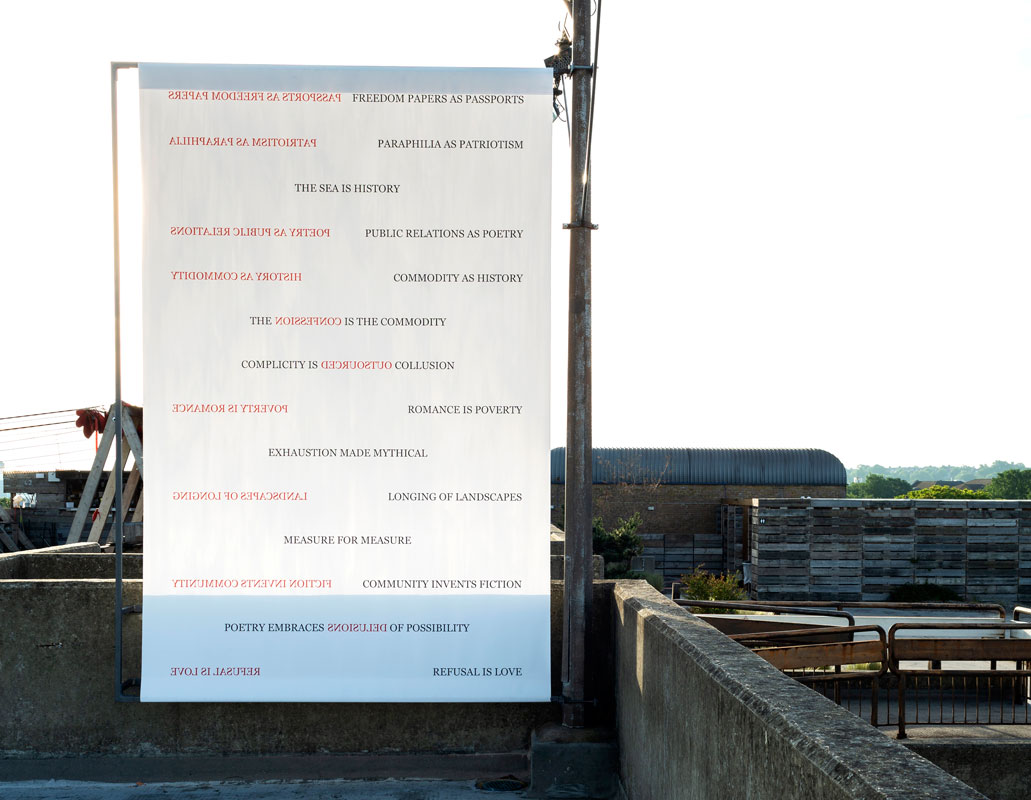
Momtaza Mehri
Towards a Quantifiable Measure of Longing, 2019
Photo: Oskar Proctor

Jenny Holzer, Inflammatory Essays, 2019
Jenny Holzer wrote her Inflammatory Essays between 1979 – 1982 during her time as a student on the Whitney Museum’s Independent Study Program. They present provocative statements inspired by the texts of political theorists, religious fanatics and impassioned folk literature and include words from Emma Goldman, Chairman Mao, Valerie Solanas and Che Guevara.
Each essay contains exactly 100 words in twenty lines, and uses this rigid format to explore a range of extreme ideas, setting fanatical statements against the certainties of common opinion. Originally conceived in an era of acute ideological debate, today these essays stand more powerful and relevant than ever. In an age where slogans define politics and social opinion is condensed to a limit of 280 characters, our exchange of words has never been more astringent and inflammatory than before.
Jenny Holzer (b. 1950, Ohio) lives and works in New York.
Photo: Oskar Proctor
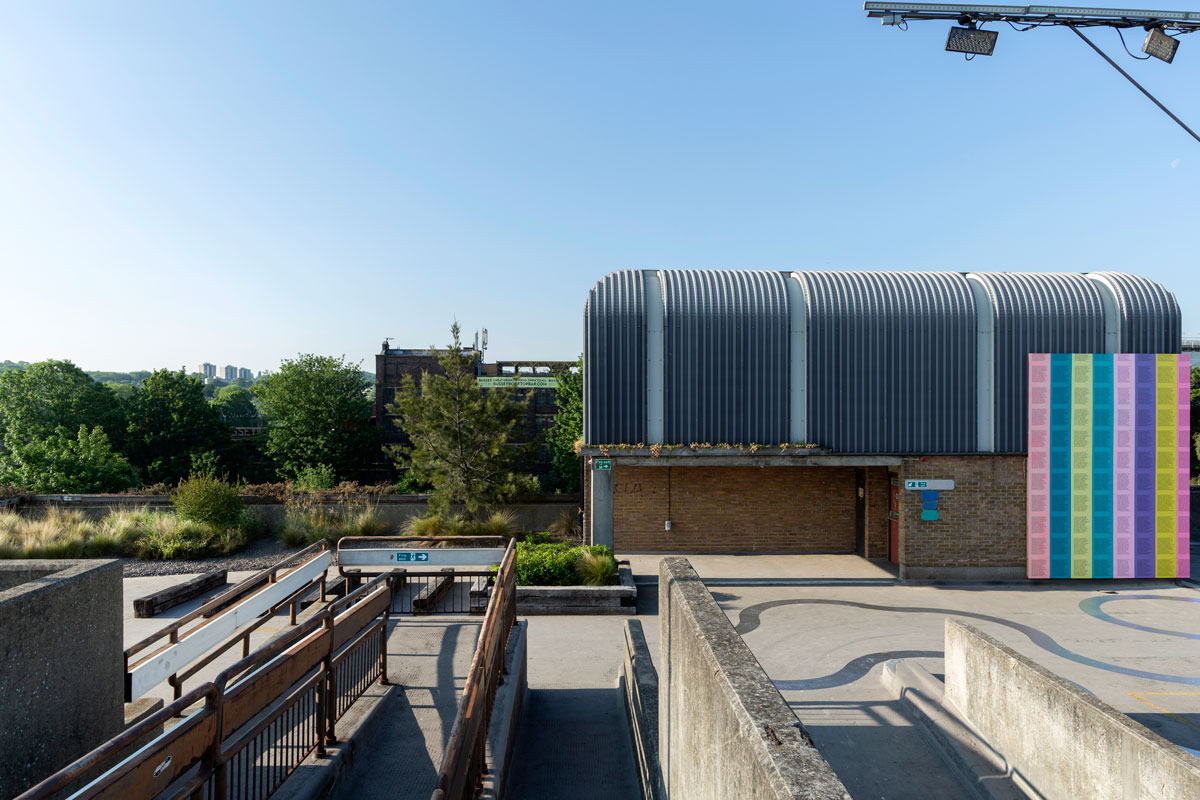
Jenny Holzer
Inflammatory Essays, 2019
Photo: Oskar Proctor
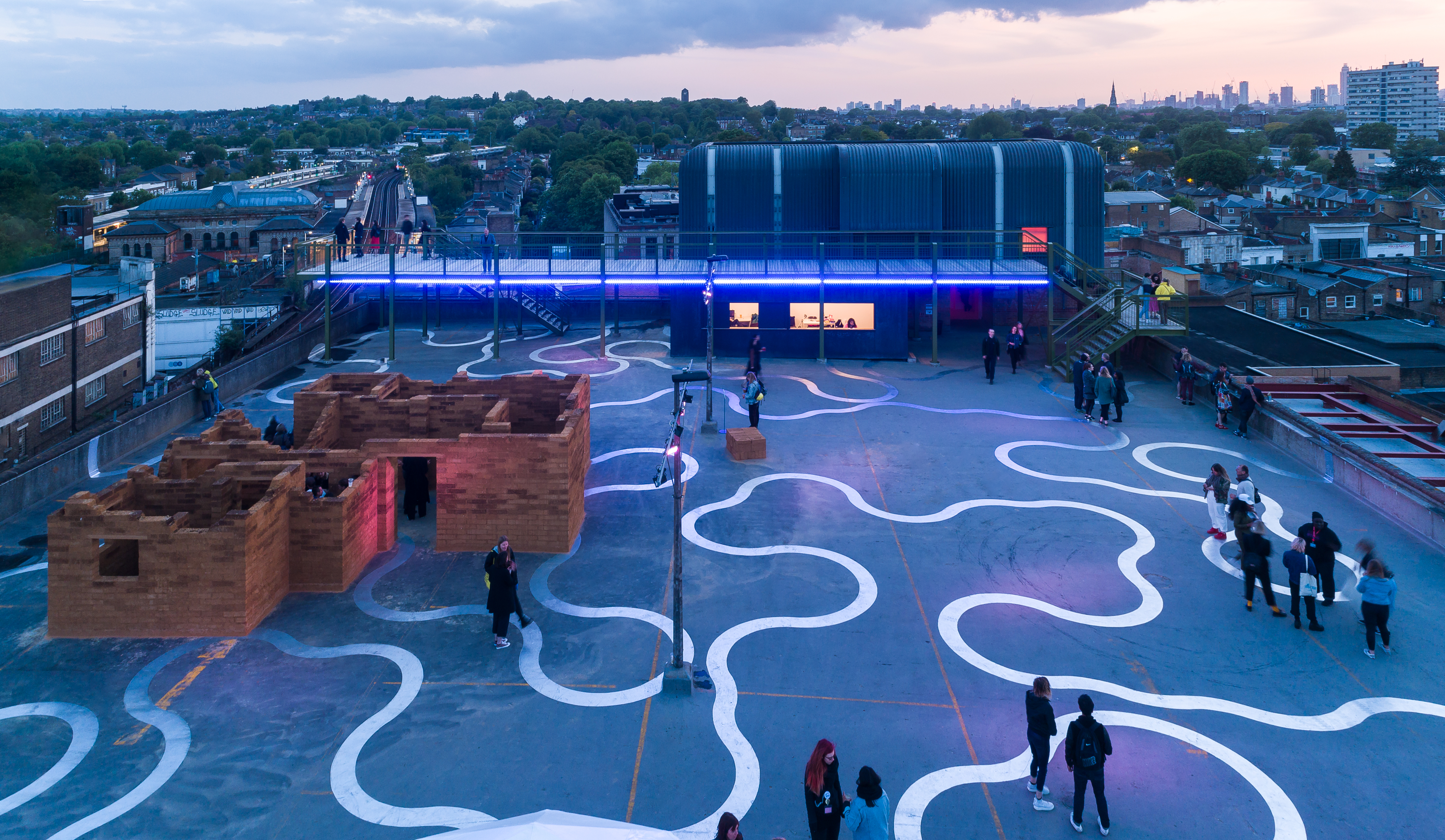
Johann Arens, Immobilisations
Siân Lyn Hutchings, The Dominant Eye
Irina Kirchuk, CLOUDBURST
Lawrence Lek, Farsight Corporation
Arjuna Neuman, Liquid Violet
João Vasco Paiva, Home 2.0
Sterling Ruby, BLACK STOVE 3
Emilija Škarnulytė, Mirror Matter
Jenna Sutela, Neither a Thing, nor an Organism
Richard Wentworth, Coppice
Photo: Peter Landers
Over the last few decades the subject of Ecology has become an increasingly urgent issue.
Ecology is not a solitary investigation into the natural world or the way that organisms and environments react inside it. It is a lens for analysing all that takes place on Earth and beyond, be it cultural or natural; language or weather: objects, subjects, processes, networks.
In a world where Peruvian ice cores are stuffed with lead, corporations have more rights than humans, and gut bacteria helps develop infant brains – a world of gene synthesisers, hybrid corn and frozen embryos – the question of Ecology is more important than ever.
Finding points of connection between bacteria, artificial intelligence and recycling; rural and urban, terrestrial and extra-terrestrial, Bold Tendencies presents the work of artists that traverse this new ecological terrain.
Each new commission approaches the question of Ecology in the contemporary world in its own terms. Whether the revolutionary sounds of Haitian music, the vernacular architecture of rammed earth, or the bespoke packaging of an international courier service, each artist considers the interplay of this ecological maze.
The new commissions shift from organic elements to algorithmic patterns, sonic wormholes to vibrant skylines, representing a diverse field of aesthetic and conceptual approach.
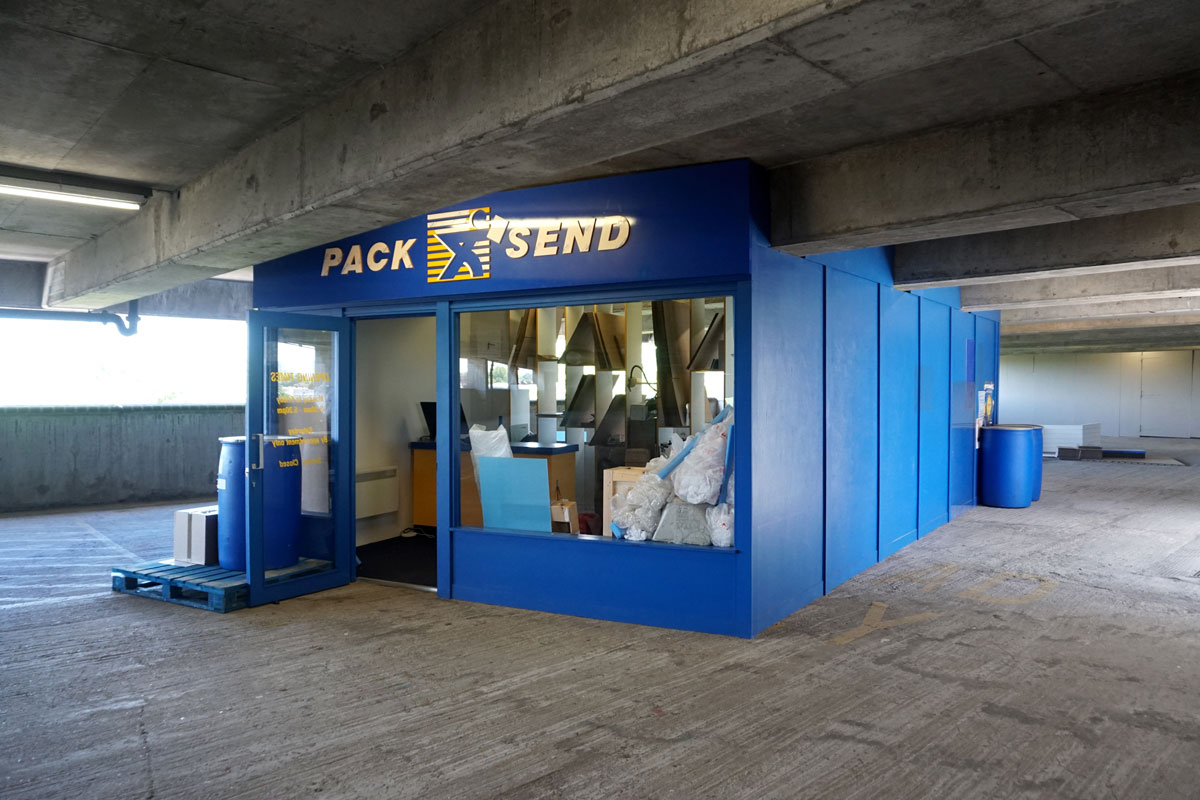
Johann Arens, Immobilisations, 2018
In this installation Johann Arens adopts the interior of a shipping specialist in Elephant and Castle including their packaging method Foam-In-Place. These bespoke foam moulds, used to create customised cradles for fragile objects in transit, form a new series of sculptures. The same method is applied in a medical context for patient immobilisation during a CT scan. Accordingly, the packed objects are sculptures derived from anthropomorphic training phantoms; medical dummies used to prepare for radiography and CT scanning.
In Partnership with Pack & Send
Photo: Johann Arens
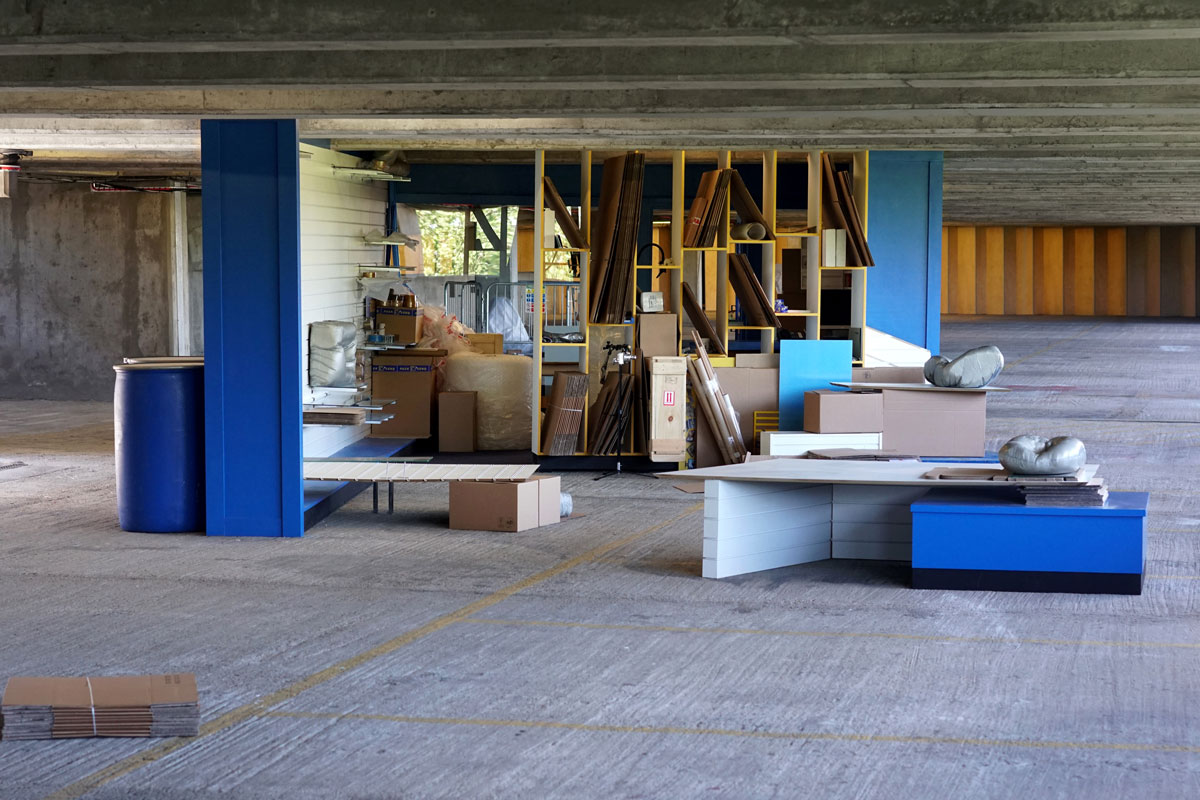
Johann Arens
Immobilisations, 2018
Photo: Johann Arens
Johann Arens (b. 1981, Aachen, Germany) currently lives and works in London. Using installation and video Johann Arens surveys the documentary properties of public interiors and their inherent social textures. By deliberately placing artworks atypically he redirects attention to places in the peripheral vision. His sculptures are found embedded in standardised work environments, educational frameworks, community centres, neighbourhood businesses and digital inclusion charities. These site-related interventions are enquiries into the multiple ways novel technologies device our communal life and shape civil behaviour. Recent exhibitions have included Findings on Palpation, P/////AKT, Amsterdam, Netherlands (2018 upcoming); digital_self, Irish Museum of Modern Art, Dublin, Ireland (2017); These Rotten Words, Chapter Art Centre, Cardiff, Wales (2017); Preis für Junge Kunst, NAK, Aachen, Germany (2016); You Ain’t Seen Nothin’ Yet, Beursschrouwburg, Brussels, Belgium (2016). Public commissions have included Motion Tracks, Kettle’s Yard, Cambridge, UK (2016); Platform 2016, Deptford X, London, UK (2016); and 100 Arches, Arnolfini and Art and the Public Realm Bristol, UK (2014). Johann recently completed residencies at SPACE, London (2017), Asia Culture Centre, Gwangju, South Korea (2016) and at the Rijksakademie, Amsterdam (2014/15).
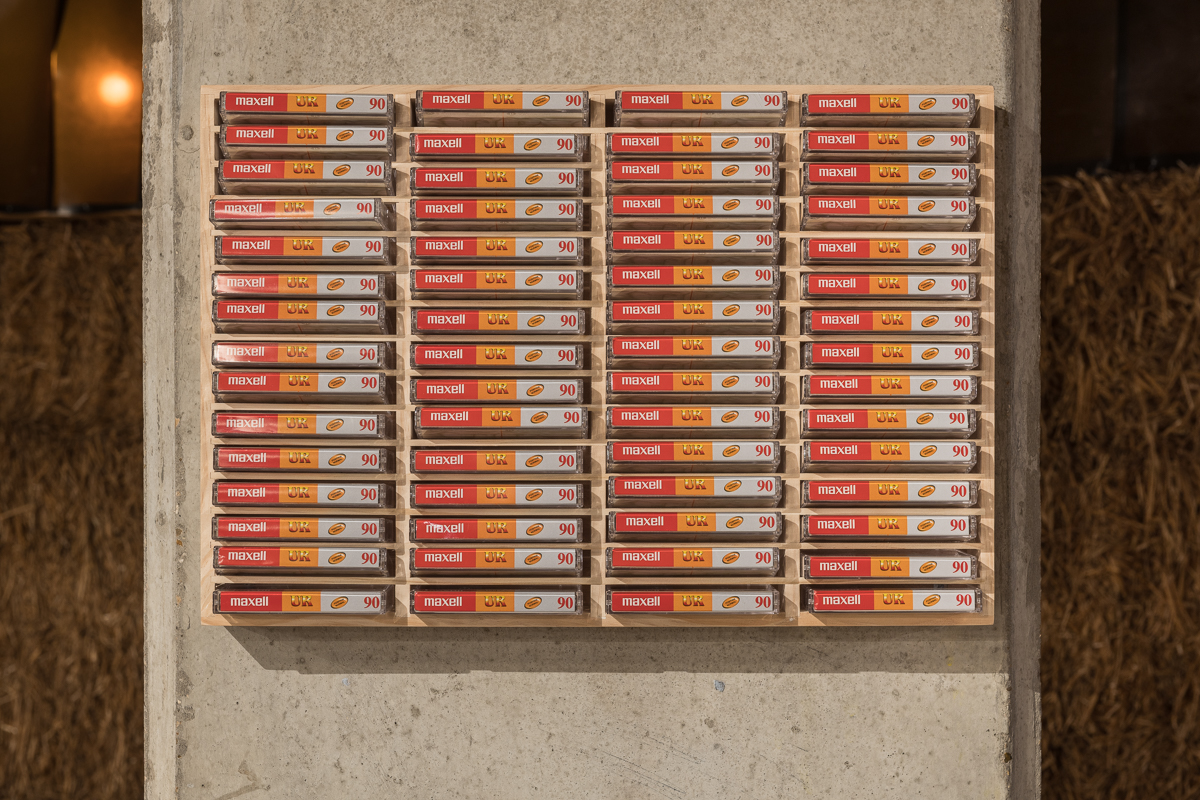
Siân Lyn Hutchings, The Dominant Eye, 2018
Responding to the overload of visual media currently dominating our contemporary senses, Siân as part of The Noematic Collective will develop a series of interconnected projects at Bold Tendencies that foreground the use of sonic interpretation. Through a series of live weekly broadcasts, a tailored programme of sonic workshops, the evolution of a sonic library on site, and a full performance and symposium at the end of the summer programme, The Noematic Collective will address the imbalances of audio-visual content dominant in contemporary art.
Listen to the podcasts on The Journal of Sonic Studies, here.
Photo: Damian Griffiths
Siân Lyn Hutchings (b. 1994) is an artist currently completing her Master of Fine Arts at Northumbria University. Siân’s practice is grounded in understanding environments through ‘active listening’. Her work approaches experience through an equality of the senses, working on sites as an aural architect. Through her work, Siân aims to highlight the importance of sonic understanding, acoustic ecologies, and how we can navigate experience through a multitude of senses beyond the West’s ocular-centric lens. Recent solo exhibitions include GB8NOE with The Noematic Collective, BALTIC, Newcastle (2018), Transmission in collaboration with Richard Waring, Sea Music Sculpture Anthony Caro, Poole, Dorset (2017); The composition of Sway, ArtSway, Sway, New Forest (2016); and 48 Bags of Sticks, Sound Installation, ArtSway, Sway, New Forest (2015). Group shows include Re:Sounding, Audiograft, Oxford (2018) andStrange Pursuit, Vane Gallery, Newcastle (2018). Siân has completed residencies at The Arts University Bournemouth and the Imagine 2020 lab, ArtsAdmin, Slovenia, in 2016. In the same year she won the Best Collective Award with her graduating year, Free Range Shows, The Old Truman Brewery.
The Noematic Collective founded by Sian Hutchings in 2016, are a collective who explore how we can understand place, environments and social impacts through sound. Currently the group consists of practicing artists, students and graduates from Arts University Bournemouth, Charles Pritchard, Georgie Ryan, Tobias Gumbrill, Oscar Lockey, Oliver Matich, Maddison Collymore and Sian Hutchings. They have exhibited in BALTIC Centre for Contemporary Art, The Drawing Studio, Arts University Bournemouth and have run sonic-based workshops at Goldsmiths University, Northumbria University and Arts University Bournemouth. The manifesto of the group is to increase the understanding and thoughtfulness of sound and the importance of sound where vision has been the dominant sense in western culture.
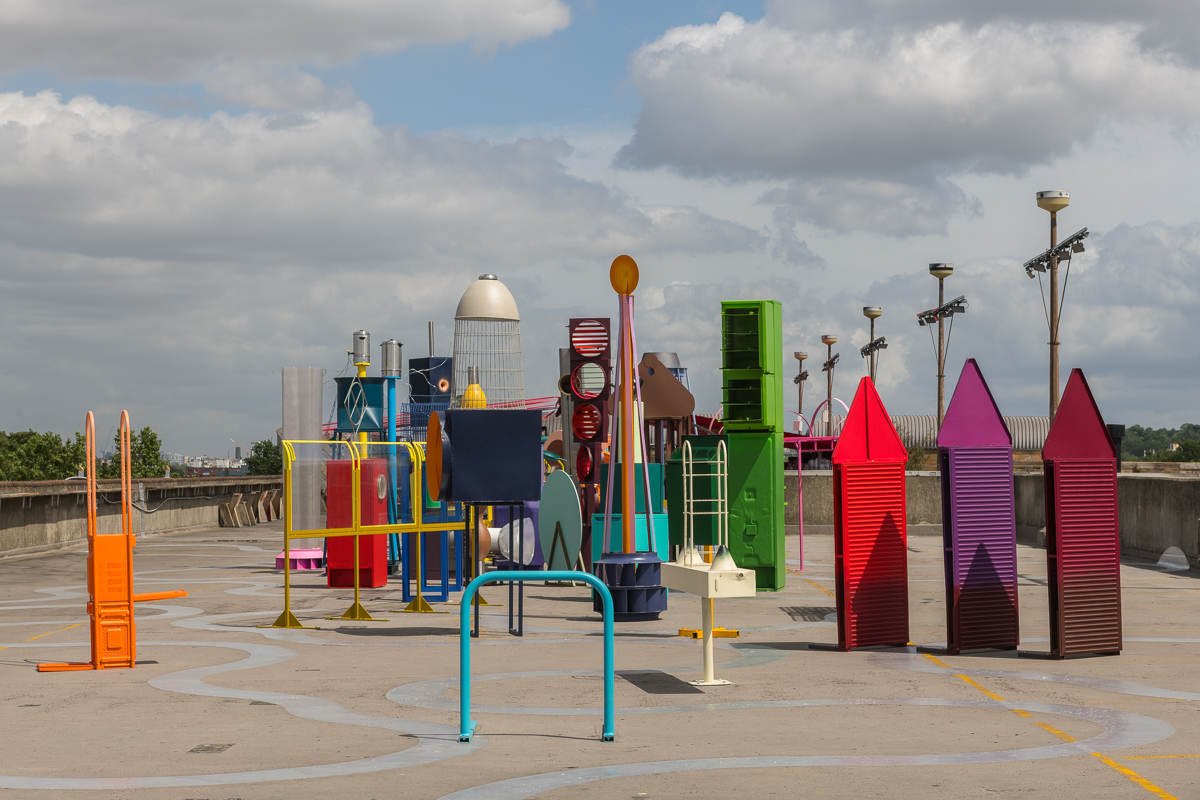
Irina Kirchuk, Cloudburst, 2018
Irina Kirchuk will continue to develop her idiosyncratic style of reconfiguring found objects with locally sourced materials. Irina will construct a dynamic assemblage echoing the fabric of London’s skyline. Each object will be individually reworked with vivid colours, surreal scales and altered dimensions, combining waste, recycling and appropriation with specific reference to the dichotomy that exists between inner and outer London; centre and suburb.
In Partnership with Montana Cans & CASS Art
Photo: Damian Griffiths

Irina Kirchuk
Cloudburst, 2018
Photo: Peter Landers
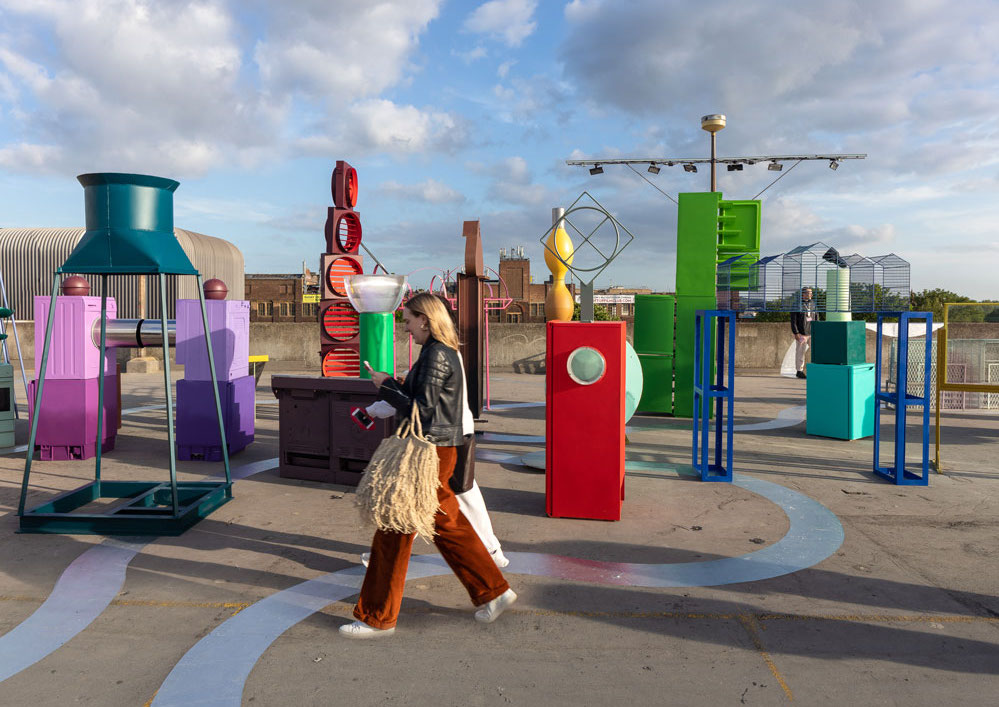
Irina Kirchuk
Cloudburst, 2018
Photo: Peter Landers
Irina Kirchuk (b. 1983, Buenos Aires, Argentina) is an artist based in Buenos Aires, Argentina, creating a vibrant and humorous practice through the interplay of material reappropration and artistic concept. Using found and destitute objects, Irina’s work comprises functionality with a novel sense of objecthood and aesthetic sensibility. Her unique visual language of Latin Arte Povera uses irony, form and urban ecologies to present a playful economy of the city and its life. Recent solo exhibitions include Liquidity trap, Zmud Project, Buenos Aires, Argentina (2017); Brochette, Irina Kirchuk & Dieter Roth, curated by Inés Huergo, Galerie Papillon, Paris, France (2017); Installation view, Slyzmud Gallery, Buenos Aires, Argentina (2015); La tripulación (The tripulation), Centro Cultural Recoleta, Buenos Aires, Argentina (2015); and Termo, Movil Center of Contemporary Art, curated by Alejandra Aguado and Solana Molina Viamonte, Buenos Aires, Argentina (2014). In 2011 Irina was part of La Biennale de Lyon and in 2016 completed two residences in France, one at the Centre Intramondes, La Rochelle, and the other at the Residences Internationales Aux Recollets, Paris.
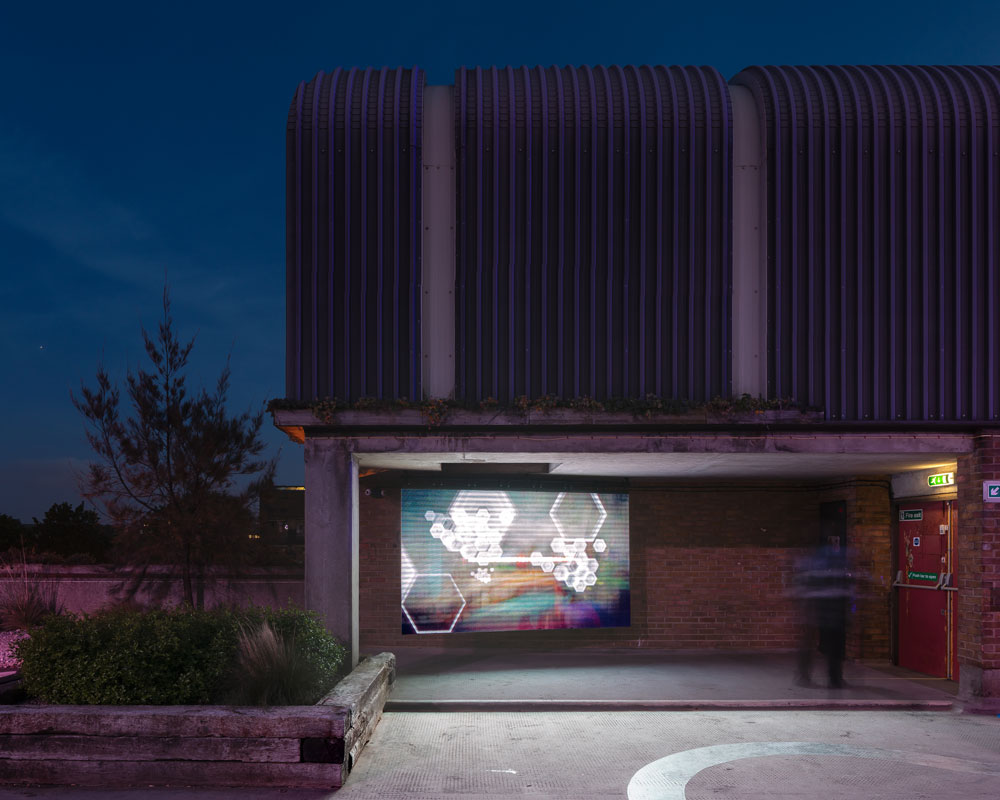
Lawrence Lek, Farsight Corporation, 2018-ongoing
Farsight Corporation continues Lawrence Lek’s exploration of computer visualisation and virtual reality as a means to explore the issues surrounding urbanism and AI. Often placing speculative scenarios within real places, his virtual worlds and films explore the impact of technology on society. Recent projects, including Geomancer and Play Station, also explore developments of artificial intelligence and automation.
Farsight Corporation blends Lawrence Lek’s artistic persona with his future-orientated, fiction-based art practice. Combining urban technologies with corporate branding, Lek acknowledges the increasing role of both in contemporary life, questioning the possibilities of a fully-automated future soon to come. The project with Bold Tendencies is part of a two-year commission, ‘Farsight Corporation’, a film and multimedia installation for Bold Tendencies 2019 which will look at the future of AI and ‘smart cities’.
In Partnership with LM Productions
Photo: Peter Landers
Lawrence Lek (b. 1982, Frankfurt, Germany) is an artist living and working in London. Lawrence is currently one of the leading multimedia artists exploring contemporary post-capitalist imaginations. Developing his unique brand of ‘Sino-Futurism’, Lek creates powerful simulations of future worlds where the relationship between labour, man and machine has drastically changed. Using gaming software, video and installation, Lek subtly shifts from utopia to ruin, history to fantasy, desire to lust. Lawrence studied at Trinity College, University of Cambridge, Architectural Association, London, and The Cooper Union, New York. Recent exhibitions include: Hyperpavilion, Venice Biennale (2017; The New Normal, UCCA, Beijing (2017); Glasgow International, Tramway, Glasgow (2016); SeMA Biennale Mediacity Seoul 2016, Seoul Museum of Art, Seoul (2016); Missed Connections, Julia Stoschek Collection, Düsseldorf (2016); Secret Surface, KW Institute for Contemporary Art, Berlin (2016); Software, Hard Problem, Cubitt Gallery, London (2015); and The Uncanny Valley, Wysing Arts Centre, Cambridge (2015). Lek has received the 2017 Jerwood/FVU Award, the 2015 Dazed Emerging Artist Award and the 2015 Tenderflix/Tenderpixel Artist Video Award, rapidly emerging onto the international scene.
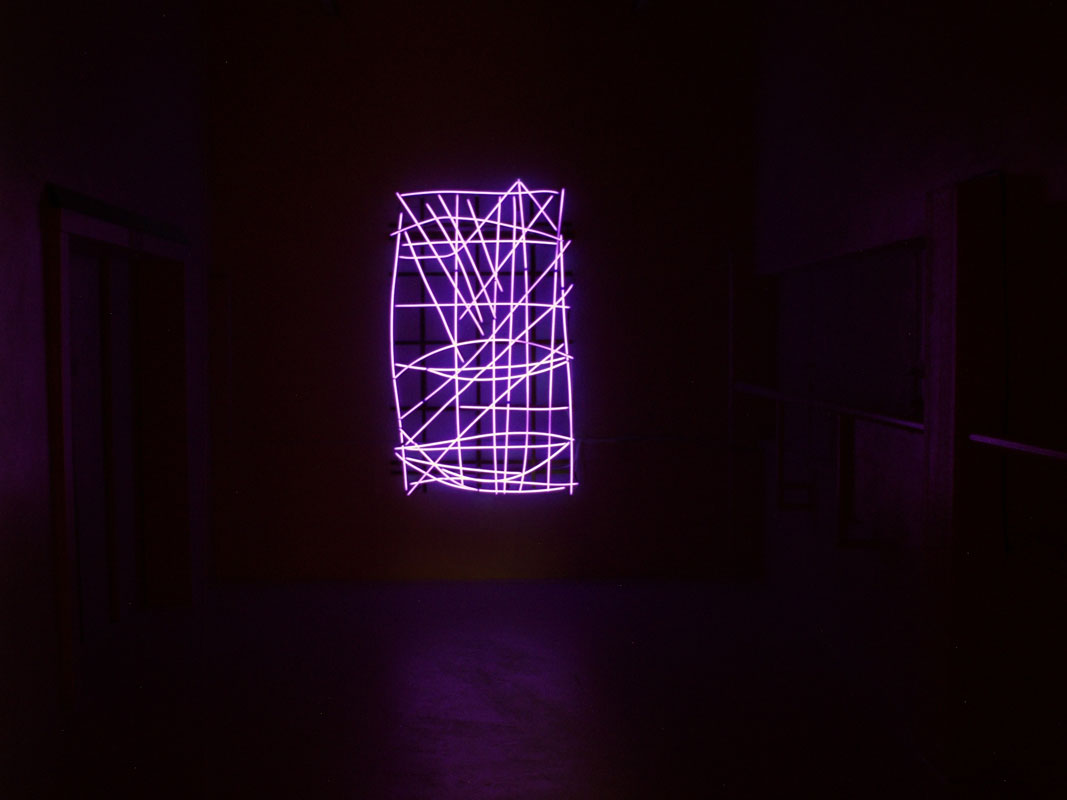
Arjuna Neuman, Liquid Violet, 2018
Highlighting modes of perception that exceed the logic of human rationality, Neuman’s new commission brings together several affective registers that provoke an ecological response in the viewer. A large blacklight sculpture, based on a nautical wave chart from the Marshall Islands, is set to a musical composition drawn from the history of the Haitian Revolution. Juxtaposing bioluminescence and somatic intuition with the political legacy of Black Universalism.
In Partnership with Neon Circus
Photo: Charlie Mills
Arjuna Neuman (b. 1984) lives and works in Berlin. Arjuna is a filmmaker, writer and artist that creates works reflecting the current crisis of anthropocentric cosmologies. Faced with an increasingly networked and digitised world, Arjuna’s practice utilises different epistemological frameworks to investigate a wide range of technological and cultural phenomena – from the logistics of the Transatlantic slave trade to the ecological fallout of American nuclear facilities. Arjuna has recently presented his work at the Whitechapel Gallery, London; Istanbul Modern, Turkey; MAAT and Docslisboa, Portugal; Sharjah Biennial 13, UAE; Contour 8, Belgium; Bergen Assembly, Norway; at NTU Centre for Contemporary Art, Singapore; the 56th Venice Biennale and SuperCommunity amongst others. As a writer he has published essays in Relief Press, Into the Pines Press, The Journal for New Writing, VIA Magazine, Concord, Art Voices, Flaunt, LEAP, Hearings and e-flux. In the last few years, Arjuna has completed residencies at the ZK/U, Berlin, Germany (2017); Utopiana, Geneva, Switzerland (2016); and has two upcoming residencies this year at the University of British Columbia, Canada, and the Bank Gallery, Shanghai, China.

João Vasco Paiva, Home 2.0, 2018
Drawing from ancient techniques found across different geographies, João Vasco Paiva presents a structure of walls in the style of a ruin, made from the vernacular practice of cob. The design of the layout, inspired by an abandoned location in southern Portugal and the structural form of labyrinths, references at once primitive forms of construction whilst exploring ideas of home, civilisation and contemporary social infrastructures.
In Partnership with Edouard Malingue Gallery(Hong Kong and Shanghai) and estudio b, London
Photo: João Vasco Paiva

João Vasco Paiva
Home 2.0, 2018
Photo: Peter Landers

João Vasco Paiva
Home 2.0, 2018
Photo: João Vasco Paiva
João Vasco Paiva (b. 1979, Coimbra, Portugal) is a Hong Kong, and Lisbon-based artist working at the intersection of materiality, identity and space. Through diverse visual semantics, João Vasco Paiva’s practice continually provokes questions of objectivity and place. Using visual and conceptual cues to urban infrastructure, social architectures and lost communities, his work reimagines social ecologies from shifting perspectives: the outsider, the historian or the algorithm. Recent solo exhibitions have included Green Island, Edouard Malingue Gallery, Hong Kong (2016); CARGO, Museu Nacional de Arte Contemporânea do Chiado, Lisbon (2016); Dormant Fabric, Counter Space, Zurich (2015); and Unlimited, Media Arts Asia Pacific, Brisbane (2015).
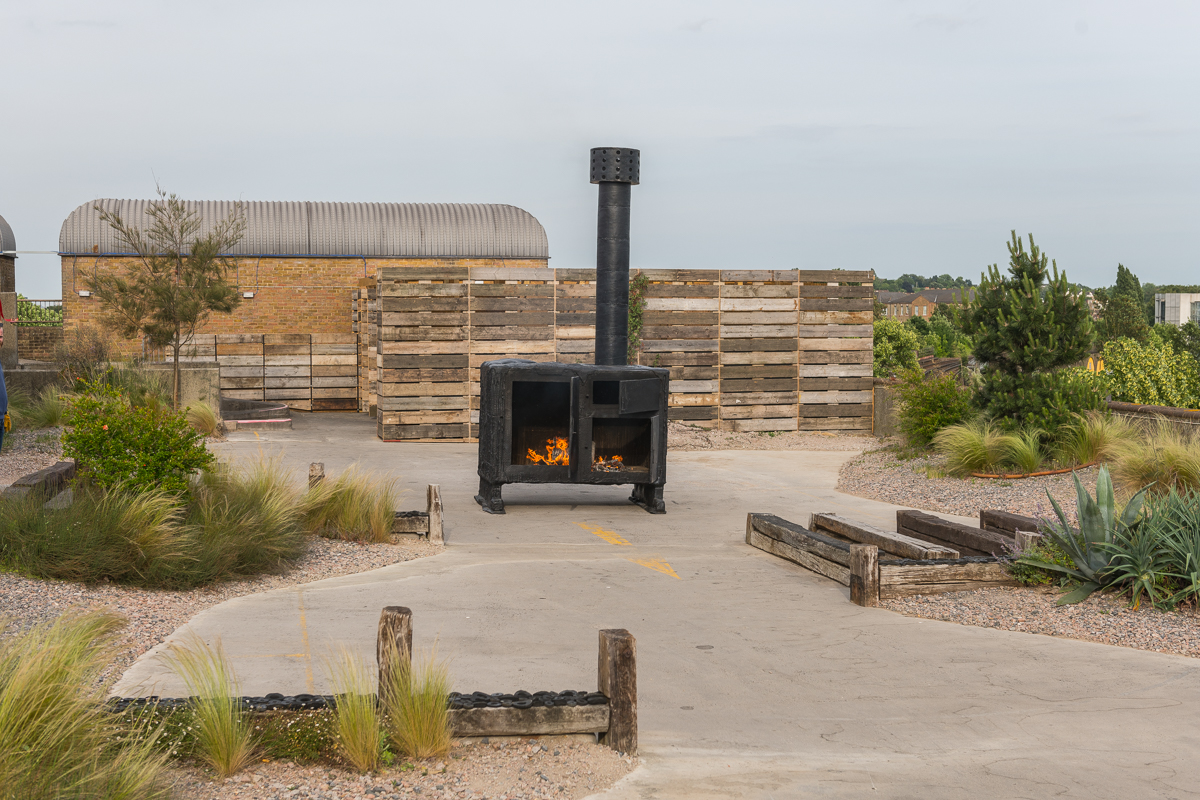
Sterling Ruby, BLACK STOVE 3, 2014
In 2012 Sterling Ruby began a series of large-scale works of functioning wood stoves, one of which will be shown and fired at Bold Tendencies. The stoves are a deft and stark representation of our ongoing plunder and mistreatment of the Earth and its raw materials. Growing up in rural Pennsylvania, Sterling used similar wood stoves to keep his farmhouse warm in colder months, introducing a parallel narrative of nostalgia for more communal, rural forms of socialisation and ecological thought – a notion with increasing ambivalence in contemporary politics.
In Partnership with Sprüth Magers Berlin, London and Los Angeles
Photo: Damian Griffiths

Sterling Ruby
BLACK STOVE 3, 2014
Photo: Damian Griffiths
Sterling Ruby (b. 1972) is an American artist living and working in Los Angeles. Sterling Ruby’s work spans an eclectic set of interests, materials and themes, gravitating around the history of 20th century American social structures: marginalised societies, maximum-security prisons, modernist architecture, artefacts and antiquities, graffiti, bodybuilders, the mechanisms of warfare, cults and urban gangs. Recent solo exhibitions have included Sterling Ruby: Ceramics, Des Moines Art Center, Des Moines, USA; traveling to Museum of Arts and Design (MAD), New York (2018); VERT, Taka Ishii Gallery, Tokyo, Japan (2018); MIX PIZ, Vito Schnabel Gallery, St. Moritz, Switzerland (2017); Sterling Ruby, Gagosian Gallery, New York (2017); THE JUNGLE, Sprüth Magers, Berlin, Germany (2016); Sterling Ruby, Winterpalais, Belvedere Museum, Vienna, Austria (2016); and WORK WEAR: Garment and Textile Archive 2008–2016, Sprüth Magers, London, England (2016).

Emilija Škarnulytė, Mirror Matter, 2018
Installed as an immersive audio-visual experience, Emilija Škarnulytė’s Mirror Matteris a hypnotic journey into the world of the imperceivable. Filmed and produced across a multitude of locations, including the use of 3D remote scanning at the Large Hadron Collider, CERN and a Neutrino Observatory in Japan, Emilija Škarnulytė presents a visual mythos of the world’s future archeology.Working with ESA (European Space Agency) Astrophysicist Gabi Matzeu and Composer Tristan Shorr an audio frequency of X Ray data from of a supermassive black hole (SMBH) is transmitted into the dome’s hermetic shell – amplifying the nonhuman entities represented in her speculative future vision.
In Partnership with LM Productions & Freedomes
Emilija Škarnulytė (b. 1987, Vilnius, Lithuania) is a filmmaker and visual artist currently based in Tromsø, Norway. Emilija’s works are vast, indicative meditations on our current ecological discourse. Her films traverse an epic landscape of geography, time and fantasy – bringing to life the indiscernible ‘hyperobjects’ that increasingly define our political and ecological crises. Interweaving images of imperceivable entities, such as quasars and neutrinos, with speculative histories of deep time and future archaeology. Recent solo exhibitions have included Mirror Matter, Künstlerhaus Bethanien, Berlin (2017); Manifold, Podium, Oslo (2017); Extended Phenotypes, Viafarini, Milan, Italy (2016), QSO Lens, CAC, Vilnius (2015). Selected Group exhibitions have included Hyperobjects, curated by Timothy Morton, Ballroom Marfa, Texas, US (2018), The Baltic Pavilion for the 15th Venice Biennale of Architecture (2016), The Future is Certain; It’s the Past Which Is Unpredictable, Blaffer Art Museum, Houston (2018); If These Stones Could Sing, Kadist, San Francisco (2018); Baltic Pavilion, AA and RIBA, London (2018). She has received Kino der Kunst Project Award, Munich in 2017 and the National Lithuanian Art Prize for Young Artists in 2016. Emilija has recently completed residencies at Kunstlerhaus Bethanien, Berlin (2017) and Nordisk Kunstnarsenter Dale, Norway (2015), as well as recently spending time researching and filming at CERN.
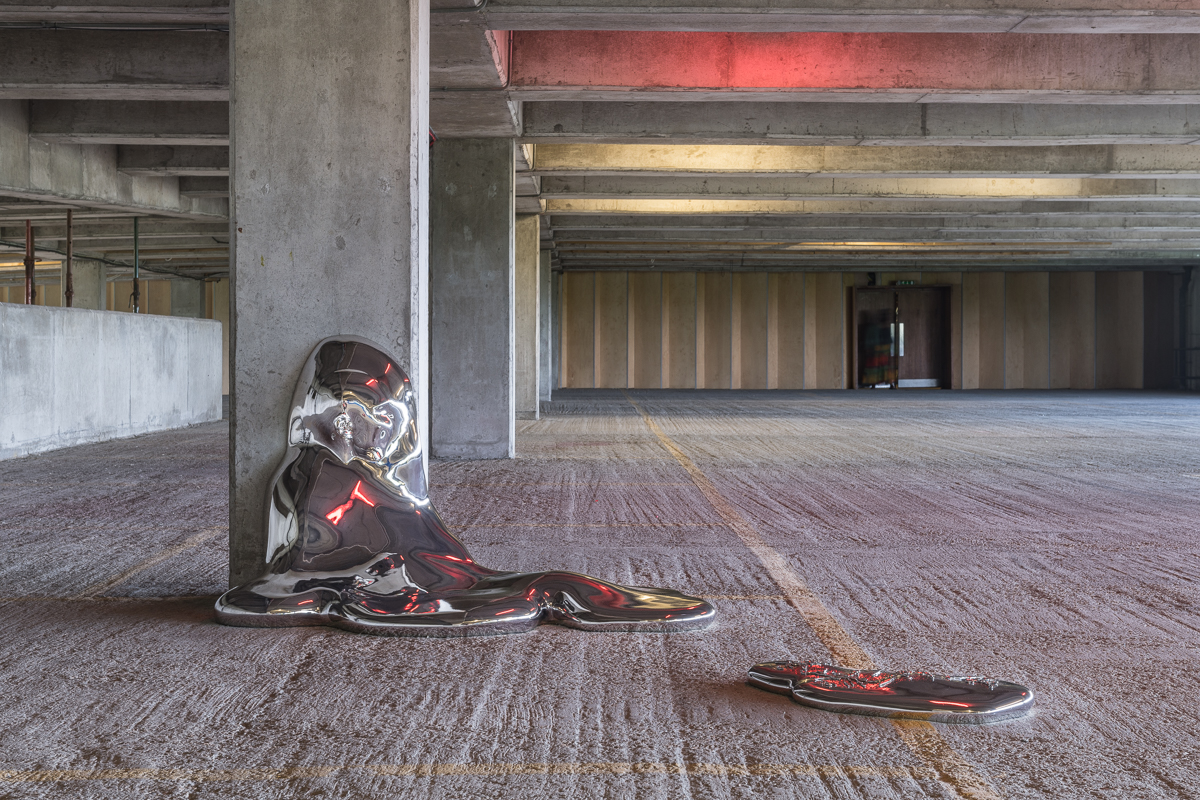
Jenna Sutela, Neither a Thing, Nor an Organism, 2018
Sutela’s new sculpture takes the form of a polymimetic alloy pond brain: two chromed, amorphous blobs with a head and a gut emerging from them.
Photo: Damian Griffiths
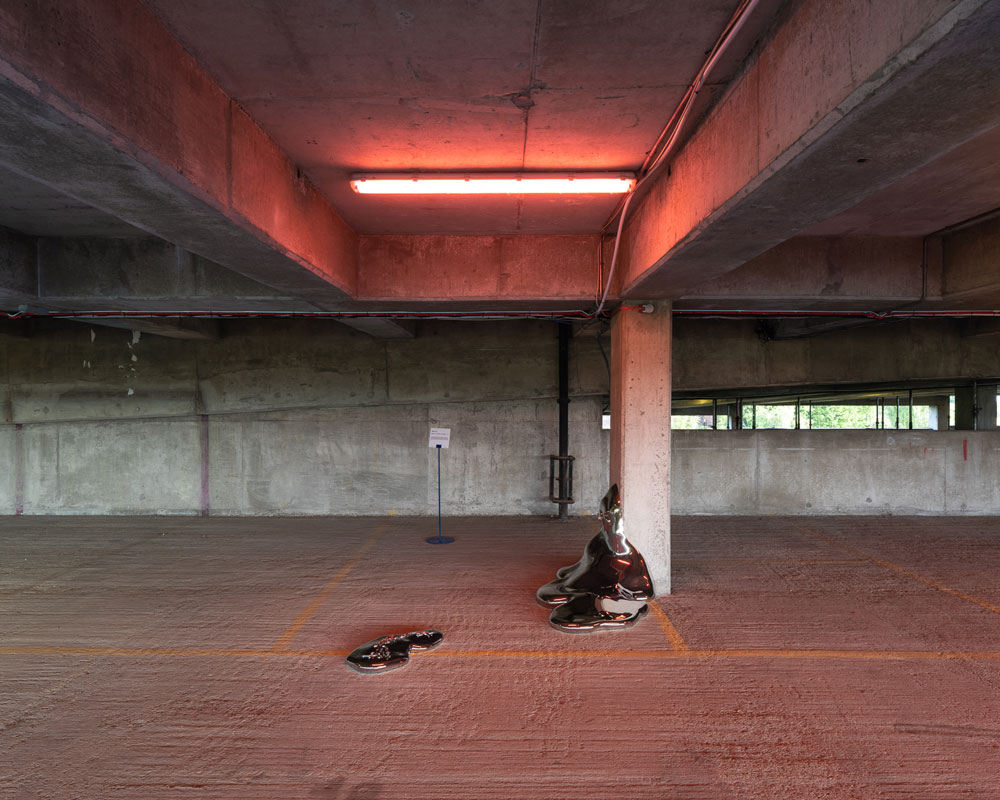
Jenna Sutela
Neither a Thing, Nor an Organism, 2018
Photo: Peter Landers
Jenna Sutela (b. 1983, Finland) is based in Berlin. Her work explores exceedingly complex biological and computational systems, ultimately unknowable and always becoming something new. Having collaborated with both microbial and metalloid life forms—ingesting Physarum polycephalum, the single-celled yet “many-headed” slime mould as a form of AI or teaching machines to channel the movements of natto bacteria—Sutela evokes possible futures of decentralized ‘wetware’ intelligence as an alternative to the modern urge to achieve domination over nature and each other. Her recent commissions and exhibitions include Extremophile, GUEST, GHOST, HOST: MACHINE! Marathon, Serpentine Galleries, London (2017); Sporulating Paragraph and Let’s Play: Life, Momentum 9, The Nordic Biennial of Contemporary Art, Moss (2017); Gut-Machine Poetry, ARS17+, Kiasma Museum of Contemporary Art, Helsinki (2017); Nam-Gut, Banner Repeater, London (2017); and Many-Headed Reading, transmediale, Haus der Kulturen der Welt, Berlin (2017). She also edited Orgs: From Slime Mold to Silicon Valley and Beyond (Garret Publications 2017). Sutela is currently artist in residence at Somerset House Studios.
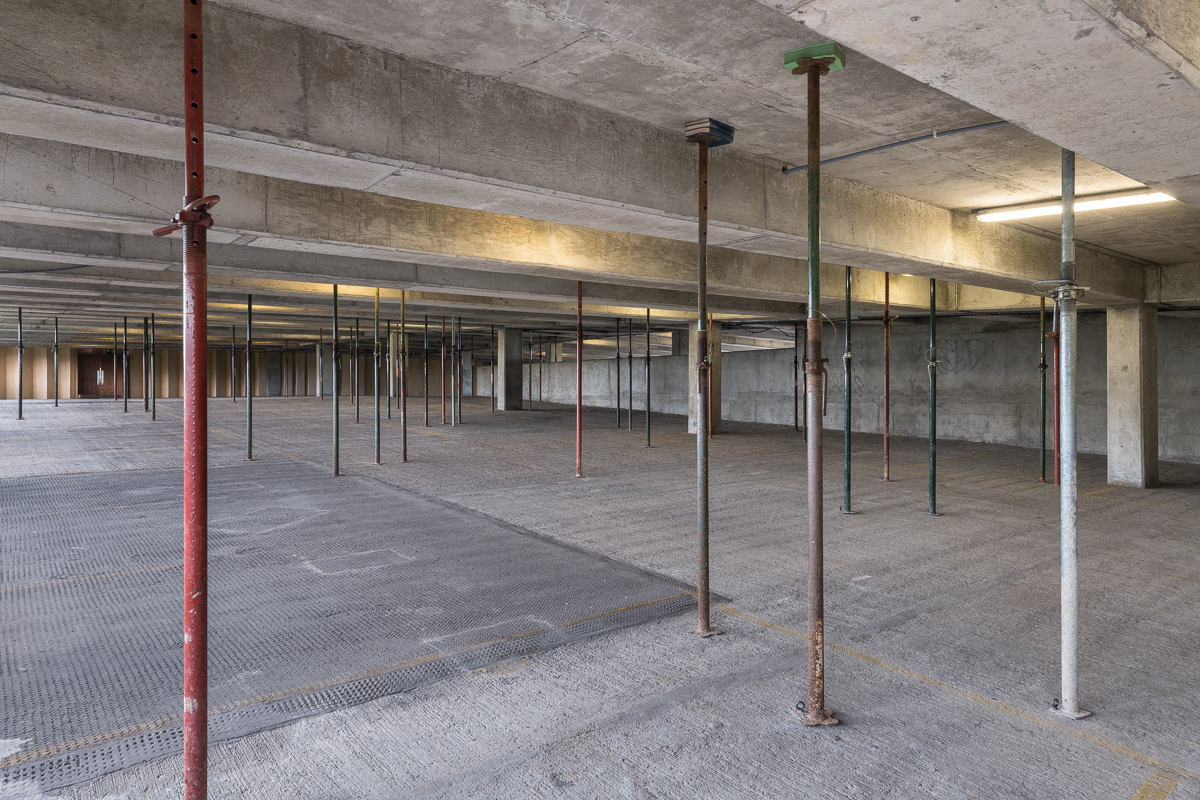
Richard Wentworth, Coppice, 2018
Coppice is an extensive confrontation with the inherent structure and form of the car park’s seventh ramped floor. Evoking the near military structures of elevated roads and the coarse muscularity of the car park itself, Wentworth has created a haptic environment of props, books and bolts. At first seeming mischievous, signs of deliberate intervention are met with an unsettling arbitrariness. The ‘architecture’ of the book has long interested Richard Wentworth, but here they are commandeered as mere pads and chocks. Our eyes run across the scene, we strain to read titles, to decipher, like looking at a cornice on a cathedral. This impossibly contradictory library may be like ecology or culture, big words we struggle to define. Richard Wentworth himself comments, ‘Children make the best detectives.’
Photo: Damian Griffiths
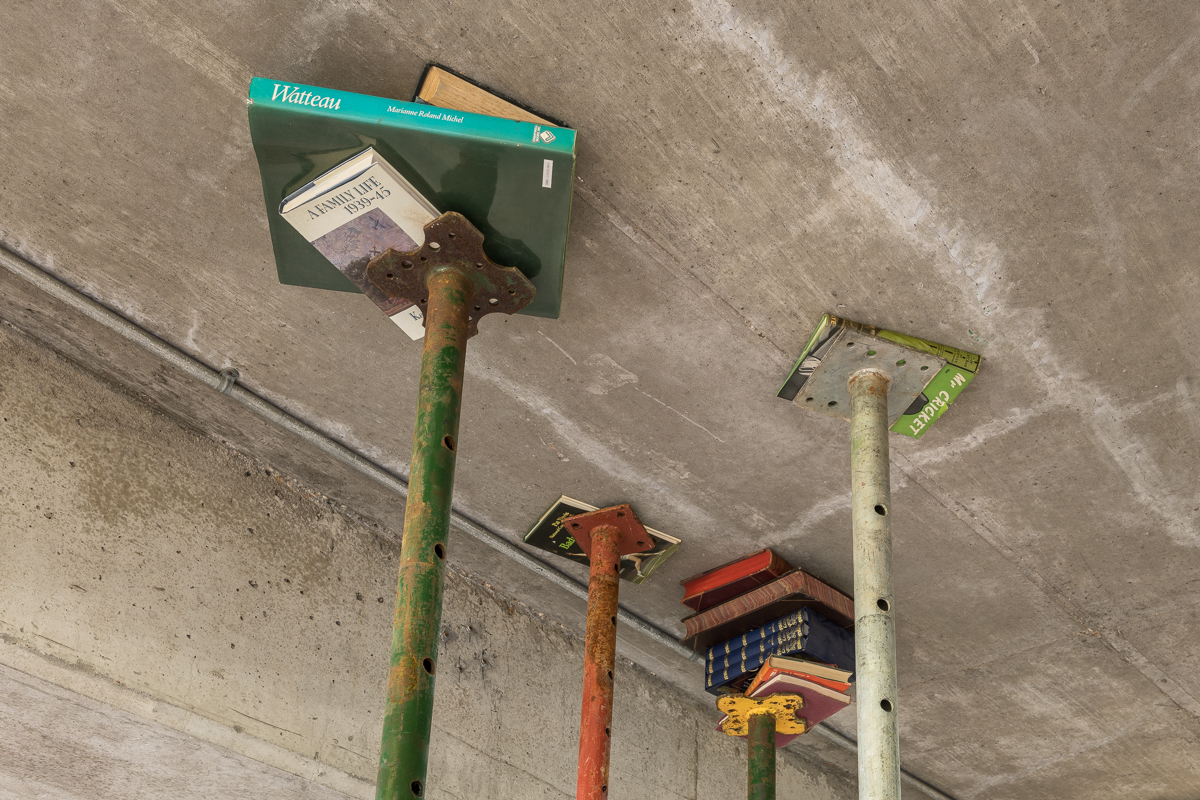
Richard Wentworth
Coppice, 2018
Photo: Damian Griffiths
Richard Wentworth (b. 1947) lives and works in London. Richard Wentworth is a chronicler of daily life. Since the 1970s he has played a leading role in British sculpture, isolating both the formal and sculptural qualities of everyday objects. His extensive archive of photographs, ‘Making Do and Getting By’ (1974 onwards), captures the provisional ways in which people modify the world they inhabit. It suggests an infinite syntax of adjustment, modification and appropriation. The private smile which spectators experience when looking at Wentworth’s work is associated with a deep human capacity to associate the inventive and creative with an internalized highway code for survival. Major solo presentations include Bold Tendencies, Peckham, London, UK (2015), Black Maria with Gruppe, Kings Cross, London, UK (2013), Whitechapel Gallery, London, UK (2010), 52nd Venice Biennale, Venice, Italy (2009), TATE, Liverpool, UK (2005), Artangel, London, UK (2002), Bonner Kunstverein, Bonn, Germany (1998), Stedelijk Museum, Amsterdam, The Netherlands (1994), Serpentine Gallery, London, UK (1993). Recent group shows include Foundling Museum, London, UK (2016), MAC, Belfast, Ireland (2016), Hayward Gallery, London, UK (2015) and Nottingham Contemporary, Nottingham, UK (2014).

Ewa Axelrad, Let’s go. Yes, let’s go. (They do not move)
Isaac Olvera, Your image will be weathered but never taken away
Photo: Peter Landers
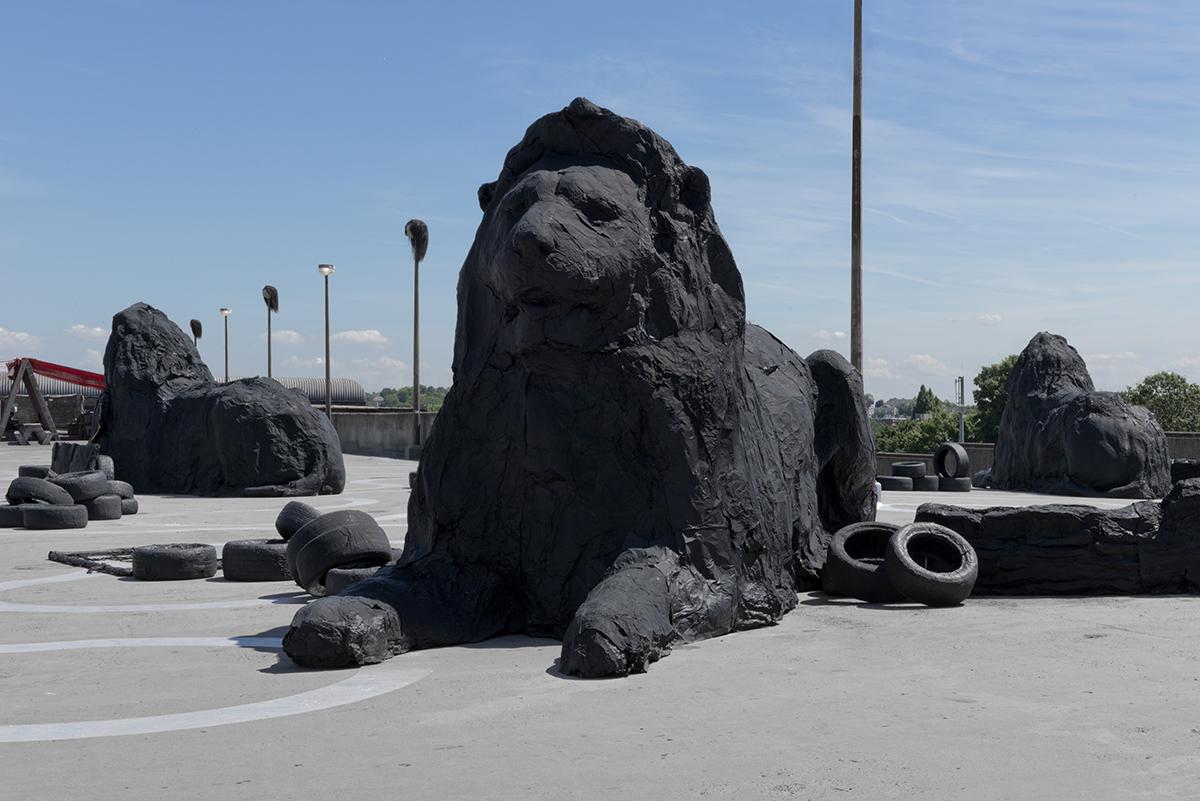
Ewa Axelrad
Let’s go. Yes, let’s go. (They do not move), 2017
Photo: Isaac Olvera
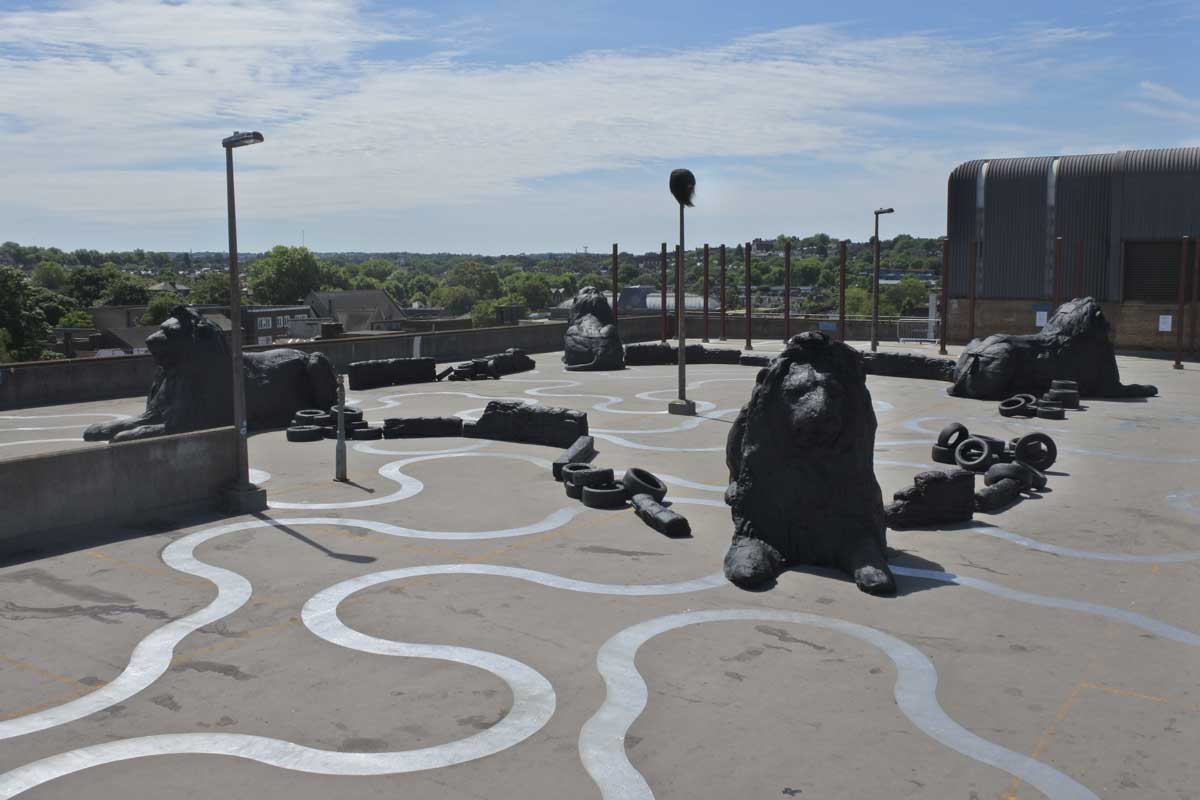
Ewa Axelrad
Let’s go. Yes, let’s go. (They do not move), 2017
Photo: Isaac Olvera
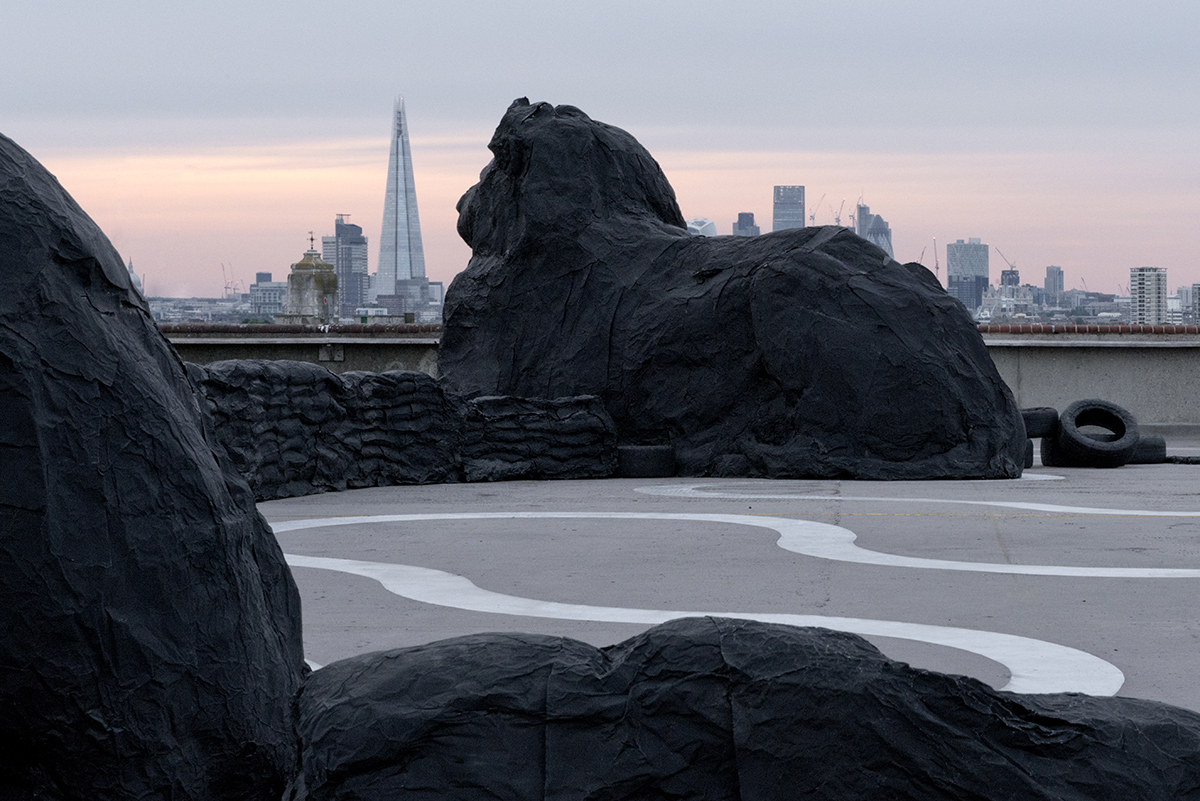
Ewa Axelrad
Let’s go. Yes, let’s go. (They do not move), 2017
Photo: Isaac Olvera
Ewa Axelrad’s long-standing interest in the dynamics of public disturbance has resulted in a number of reactionary works addressing this powerful contemporary subject. Her 2017 new sculpture, ‘Let’s go. Yes, let’s go. (They do not move)’, referenced Trafalgar Square, an iconic London meeting point associated with global gatherings and protests.
Situated on the roof of the multi-storey car park, Axelrad’s work directly interacted with Richard Wentworth’s Agora which was commissioned by Bold Tendencies in 2015. Both artists stress the importance of a discourse between art and its local environment and community. Axelrad was inspired by a conversation she had with Wentworth which discussed how urban spaces and decisions are made in order to control public movement and prevent public unrest. Interestingly, in London there is no central square which could accommodate such a protest.
The sculpture in Peckham could have read as a surreal, abandoned site encountered in an unexpected place but also as an enforcement of the Agora, wherein visitors can meet, sit and socialise. The lions at Bold Tendencies are transformed from a monument of triumph and power into domesticated big cats guarding a broken barricade. The work represented the artist’s sense of public disillusion with protests and widespread doubt in their ability to generate real change. The title, taken from Beckett, connects the installation to a theatre stage, the protest acted out therefore, a futile public spectacle.
Axelrad chose cinefoil – a thin black aluminum that is normally used to shape lighting in theatre and film industries – to make the installation fragile and impermanent, creating a clear contrast with the sculptures in Trafalgar Square. Cinefoil was also selected due to the sound it makes in the wind and rain, as well as its tendency to crumple and naturally weather in appearance giving the work a tired, time-worn character.
Ewa Axelrad’s practice comprises of installations, photographic and moving image and sculptural objects. Her research is informed mainly by specific events from the past such as personal recollections and collective memories. She is also interested in the role of aesthetics and design in the interplay of certain social set-ups. She is currently developing a new body of work addressing the notion of esprit de corps; a spirit of comradeship, morale, sense of devotion to a shared goal or fight present in the army, police and across other groups organised around combat.
Ewa Axelrad was born in Poland where she studied at Academy of Fine Arts in Poznań before moving to London to continue at the Royal College of Art. Her work was featured in many exhibitions, among the recent ones are Labour Relations at Wrocław Contemporary Museum, As You Can See. Polish Art Today at the Museum of Modern Art in Warsaw and State of Life. Polish Contemporary Art within a Global Circumstance at the National Art Museum of China, Beijing. Her solo shows in 2017 include Satis at The Ryder Projects, London, Shtamah at Wrocław Contemporary Museum and at Copperfield, London. She is nominated for the 2017 edition of the bi-annual Deutsche Bank Foundation Award Views for Polish artists under 36. She lives and works in London and Gliwice.

Isaac Olvera
Your image will be weathered but never taken away, 2017
”Project sponsored by the National Fund for Arts and Culture”
Photo: Isaac Olvera
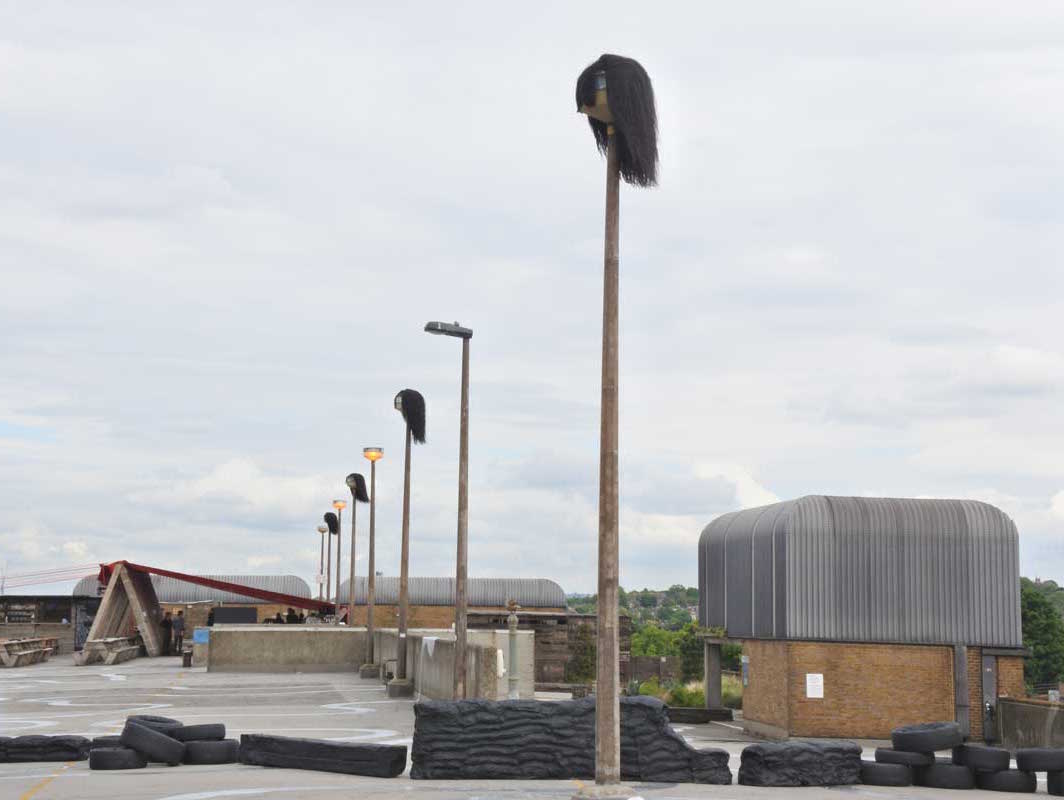
Isaac Olvera
Your image will be weathered but never taken away, 2017
”Project sponsored by the National Fund for Arts and Culture”
Photo: Isaac Olvera
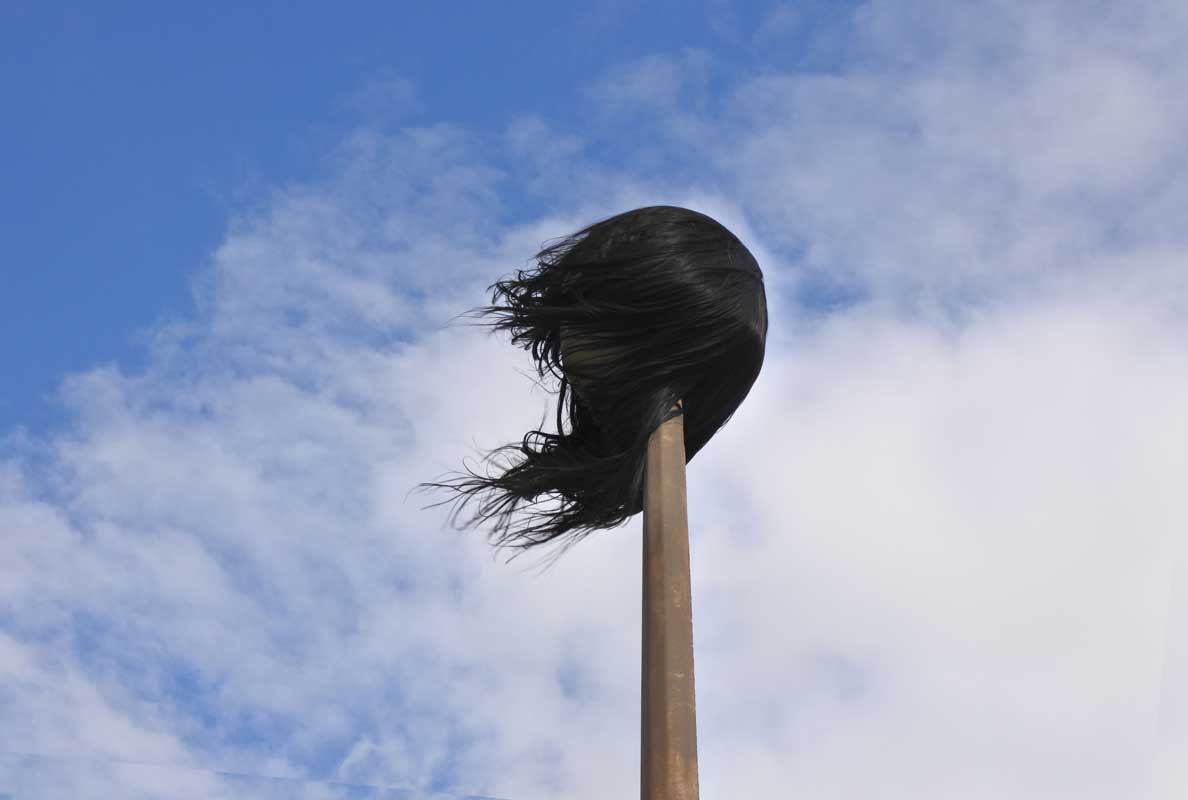
Isaac Olvera
Your image will be weathered but never taken away, 2017
”Project sponsored by the National Fund for Arts and Culture”
Photo: Isaac Olvera
For the Bold Tendencies 2017 Summer Season, Isaac Olvera installed four giant natural hair on top of four of the nine lamp posts on the car park roof. Over the summer this allowed for London’s weather and climate alter the composition, styling and texture of each one.
An important reference for the commission was the origin and form of the materials used. The human hair came from Mexico and the sculptures were inspired by the hairstyle of Natasha Fuentes Lemus (1974 – 2005), the daughter of Mexican writer Carlos Fuentes and journalist Silvia Lemus.
Since 1990, Natasha’s family split their time between London (living in a house near Earl’s Court) and Mexico City. This history forms a narrative from which Isaac Olvera started a writing performance in the wig shops of Mexico City, capturing the conversations and mixing them with his own reflections on the life of Natasha. The writing was published in script format for the duration of the Bold Tendencies season, setting up a parallel between the characters of those new fictions and the natural alterations of his wigs on the rooftop.
The technical process for the commission proposed an approach to sculpture as a phenomenon that changes in time, supported by the writing of stories. This methodology related to pieces that the artist developed as a student at Goldsmiths in London (2009- 2011). For example, his series of erotic videos, 3am – Orphan (2011) – filmed over the course of various protests – were accompanied by a practice of writing which made the videos change over time, creating 24 works – one for each hour of the day.
During the 2017 Summer season Bold Tendencies took care of the hair sculptures and monitored changes through a series of photographs, and on some occasions the sculptures had to be washed and combed. The location of the work on the top floor of the car park used, as a formal guide, the linear structure of the lamp posts, allowing visitors to move freely within the space yet identify with a new anthropomorphic form.
During this time the artist spent time in London continuing his writing performances in wig shops. His research combined a examination of the use of hair in medical applications, the harvesting of natural hair and the association of hair with calligraphy, amongst other subjects.
Olvera’s work takes as its starting point the realm of human interactions and their context. By transforming cultural and aesthetic objects into provocations, he examines how to disrupt, de-limit or extend them through writing, video, performance and installation.
How does one translate into univocal signs such a semantic irradiation, such contamination of signs and individuals in the experience of amatory involvement?
Julia Kristeva
Isaac Olvera lives and works in Mexico City. He was resident at Gasworks in 2014 and graduated from Goldsmiths college in 2011. His exhibitions and performances include Will You Respond To My Beckoning, Poet Edgar? muca-Roma, Mexico City, 2016 – 2017; Home Improvements, Casa Bosques, Mexico City, 2016; Gruta, Chopo Museum, Mexico City, 2015; Guide, Gasworks, London, 2014; Confetti Makeup, Chopo Museum, Mexico City, 2013; Helminto, Bikini Wax, Mexico City, 2013; Los Irrespetuosos, Carrillo Gil Museum, Mexico City, 2012.
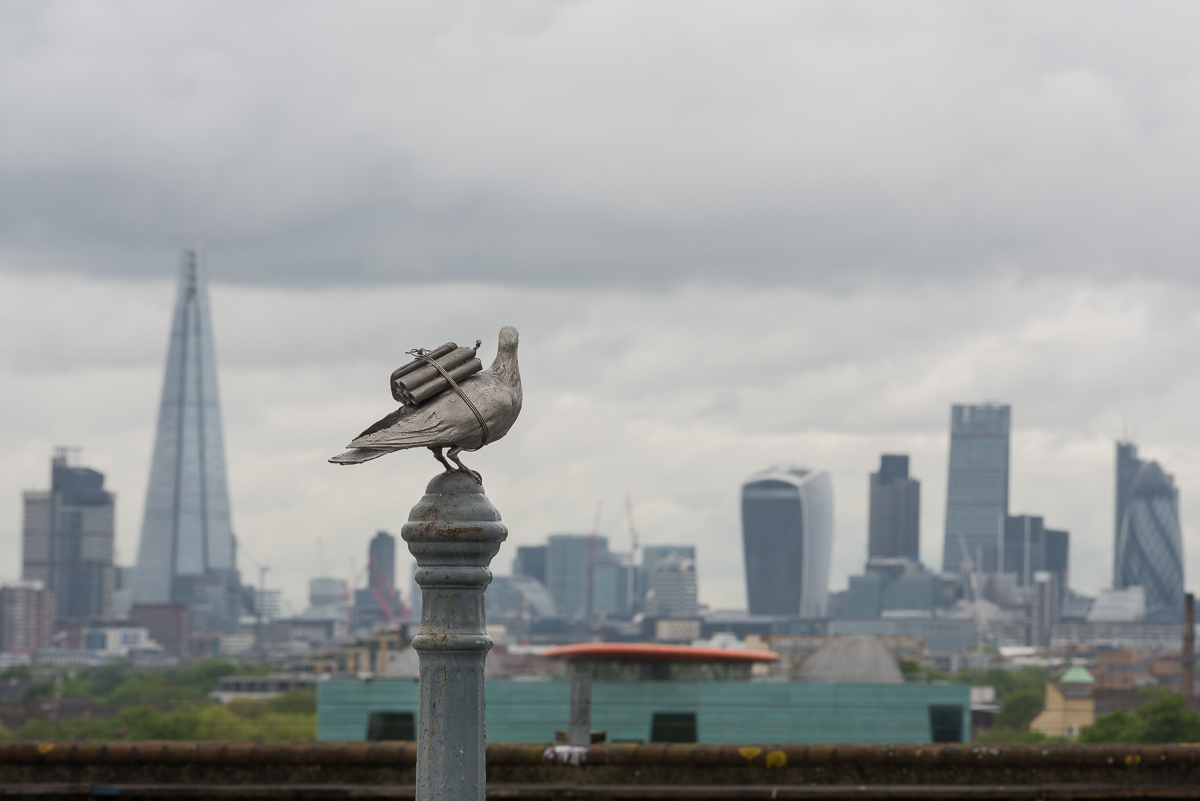
Adel Abdessemed, Bristow
Benedikte Bjerre, STOCK’N’FLOW_Money over World.Bold Tendencies
Sophie Collins and Sam Riviere, FLOURISHED
Simon Whybray, hi boo i love you
Photo: Damian Griffiths

Adel Abdessemed
Bristow, 2016
Photo: Damian Griffiths

Adel Abdessemed
Bristow, 2016
Photo: Damian Griffiths
Adel Abdessemed’s specially commissioned work, conceived of and made for this site, is entitled Bristow, taken from the signature work of the British cartoonist Frank Dickens, whose strip of this same title ran for 41 years in the Evening Standard newspaper and was syndicated internationally. Adel Abdessemed’s radical practice, which regularly invokes raw acts, and swift, energetic drawings, produces pictures in sculpture, video and photographs. These works form a statement that hits you like a straight punch: pictures in action, not stories in pictures. His unique approach and the force of the work he makes brings the power of the image round to a matter of feeling and elevates it to a way into the world.
Adel Abdessemed studied at the École des Beaux-arts de Batna and Algiers (1987-1994), before travelling to France where he attended the École nationale des beaux-arts de Lyon (1994-1998). He was an artist-in-residence at the Cité internationale des Arts de Paris (1999-2000), then at P.S.1 Contemporary Art Center, New York. Besides Paris and New York, the artist has also lived and worked in Berlin.
In 2016, Abdessemed was the guest artist in Avignon Festival where was hold an exhibition/conversation Surfaces. This same year, the work Bristow was commissioned by Bold Tendencies for their Peckam site, London. In 2015, he participates to the 56th Venice Biennale, All The World’s Futures (also in 2007 and 2003), and to Picasso.mania, at the Grand Palais, Paris. His 2015 solo shows count From Here to Eternity at the gallery Venus Over Los Angeles, Jalousies, complicités avec Jean Nouvel, in Vence; and Palace, at CAC Malaga.
In 2012, his work was the subject of a major solo exhibition at Centre Georges Pompidou in Paris, Adel Abdessemed Je suis innocent, accompanied by a fully illustrated catalogue published by the museum and Steidl, and the same year at David Zwirner, New York, Adel Abdessemed: Who’s Afraid of the Big Bad Wolf?
Other notable solo exhibitions include the special presentation of Décor at the Musée Unterlinden in Colmar, France (2012), the Parasol unit foundation for contemporary art, London; Ontario College of Art & Design, Toronto (both 2010); Fondazione Sandretto Re Rebaudengo, Turin (2009); MIT List Visual Arts Center, Cambridge, Massachusetts; San Francisco Art Institute (both 2008); P.S.1 Contemporary Art Center, Long Island City, New York (2007); and the Musée d’art moderne et contemporain, Geneva (2004).
His works are part of important collections throughout the world including the Musée d’art moderne de la ville de Paris, the Museum of Israël in Jerusalem, the Musée d’art moderne et contemporain of Geneva, the Centre Georges Pompidou in Paris, the Foundation François Pinault in Venice, and the Foundation Yuz in Shanghai.
In 2017 Abdessemed will be part of the Oku-Noto Triennale in Suzu, Japan, and in Lujiazui, Shanghai, and a major solo show will be held at the Musée des beaux-arts in Montréal.
Adel Abdessemed lives and works in London.
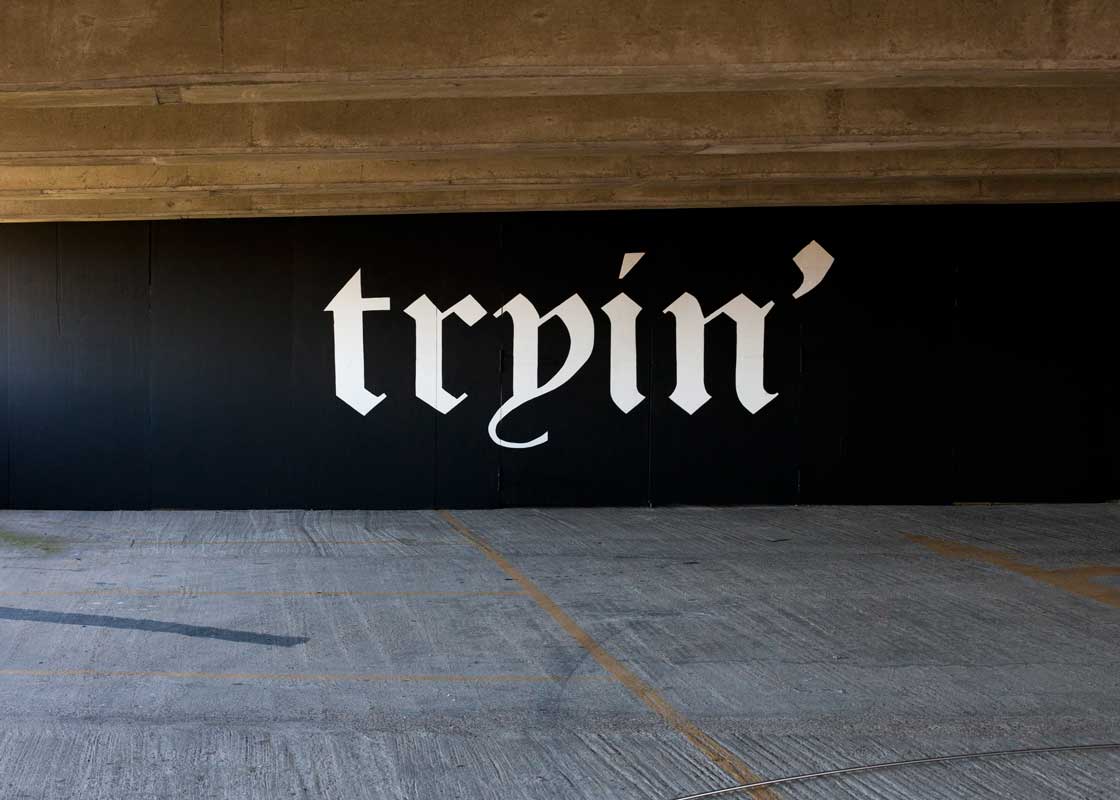
Benedikte Bjerre
STOCK’N’FLOW_Money over World.Bold Tendencies, 2016
Photo: Benedikte Bjerre
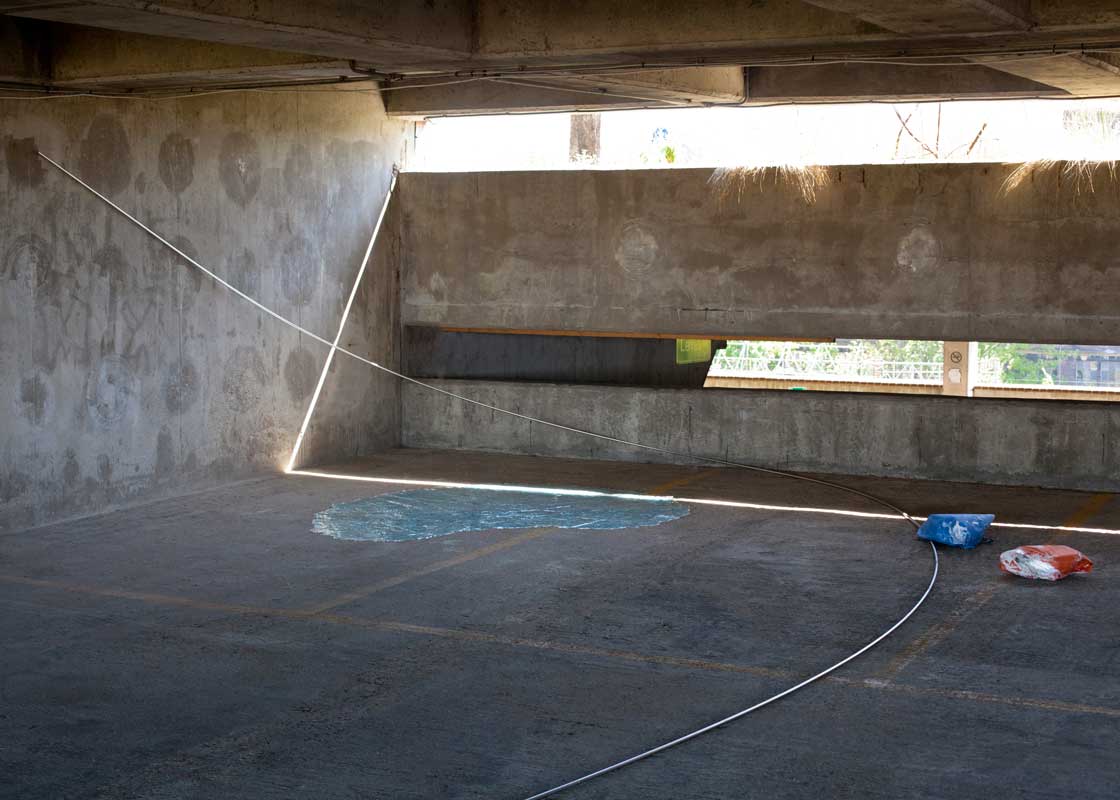
Benedikte Bjerre
STOCK’N’FLOW_Money over World.Bold Tendencies, 2016
Photo: Benedikte Bjerre
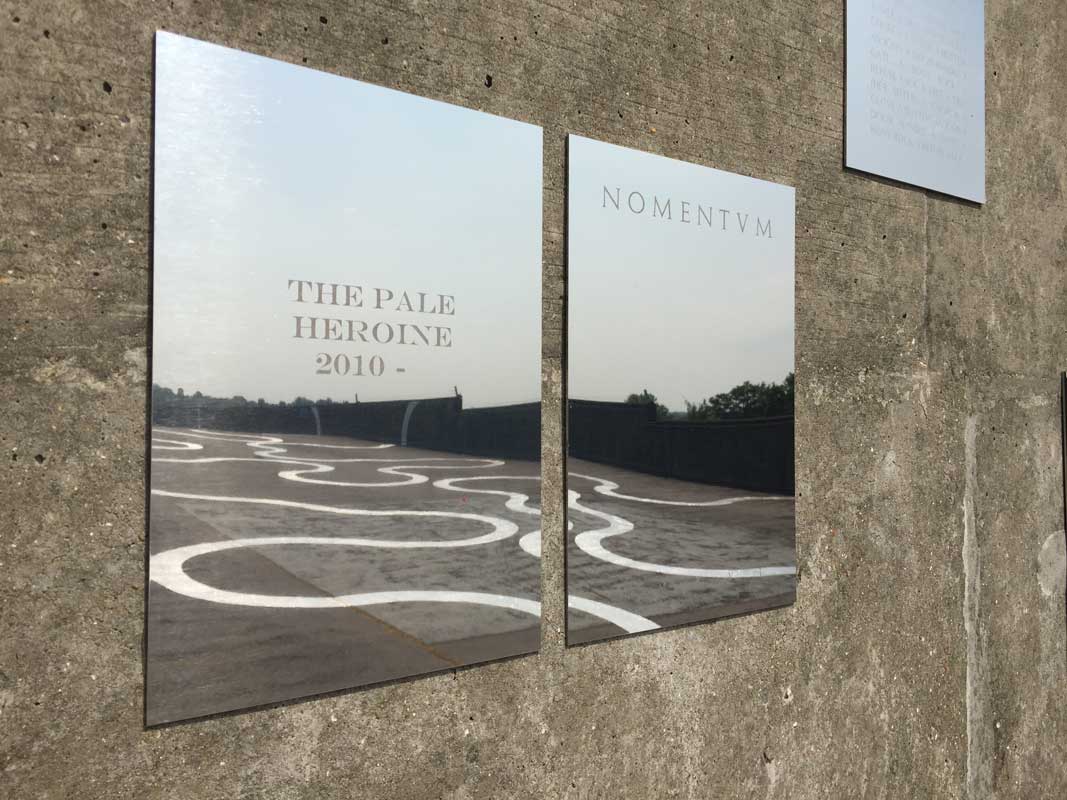
Sophie Collins and Sam Riviere
FLOURISHED, 2016
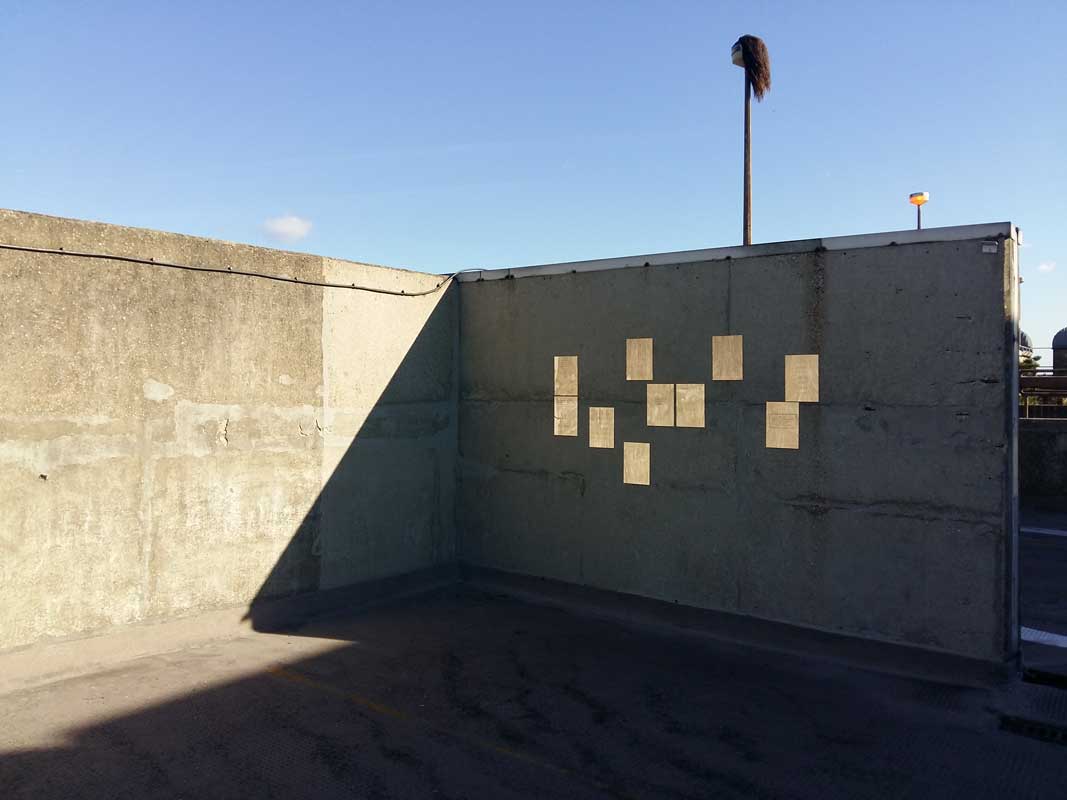
Sophie Collins and Sam Riviere
FLOURISHED, 2016
FLOURISHED brings together the combined practice of two young poets. Sophie Collins’s work is transfigurative and transformative, playing on translation methods and processual techniques to create poems that by turns reference history, structures and emotions. Sam Riviere’s poems work with the historical idea of the lyric; tormented, stunted, rooted and aware of difficult histories that surround how poems address us. What work survives us? And what would survive us if we were able to decide? Taking Sappho’s fragments as a starting point, and playing on the arguably arbitrary nature of the archive – who is gifted posterity, how is an oeuvre shaped, and why – FLOURISHED brings together imagined memorials from a poets’ workings. Cryptic and scattered, imagined and real, these indelible fragments of poems show the cycle of what it means to be remembered by their permanent presence here on site. Deciding their own destruction / memorialisation as an act of performed posterity, the fragments by Sophie Collins and Sam Riviere line these walls as a comment on how we chose to preserve our output and the spaces we inhabit.
Sophie Collins grew up in Bergen, North Holland, and now lives in Edinburgh. She is co-editor of tender, an online arts quarterly, and editor of Currently & Emotion (Test Centre, 2016), an anthology of contemporary poetry translations. small white monkeys, a text on self-expression, self-help and shame, was published by Book Works in November 2017 as part of a commissioned residency at Glasgow Women’s Library.
Sam Riviere is the author of the poetry books 81 Austerities (Faber, 2012) and Kim Kardashian’s Marriage (Faber, 2015). Limited-edition publications include Standard Twin Fantasy (Egg Box, 2014) and True Colours(After Hours, 2016). Safe Mode (Test Centre, 2017), an ‘ambient novel’, is his first work of fiction. He lives in Edinburgh and runs the micropublisher If a Leaf Falls Press.
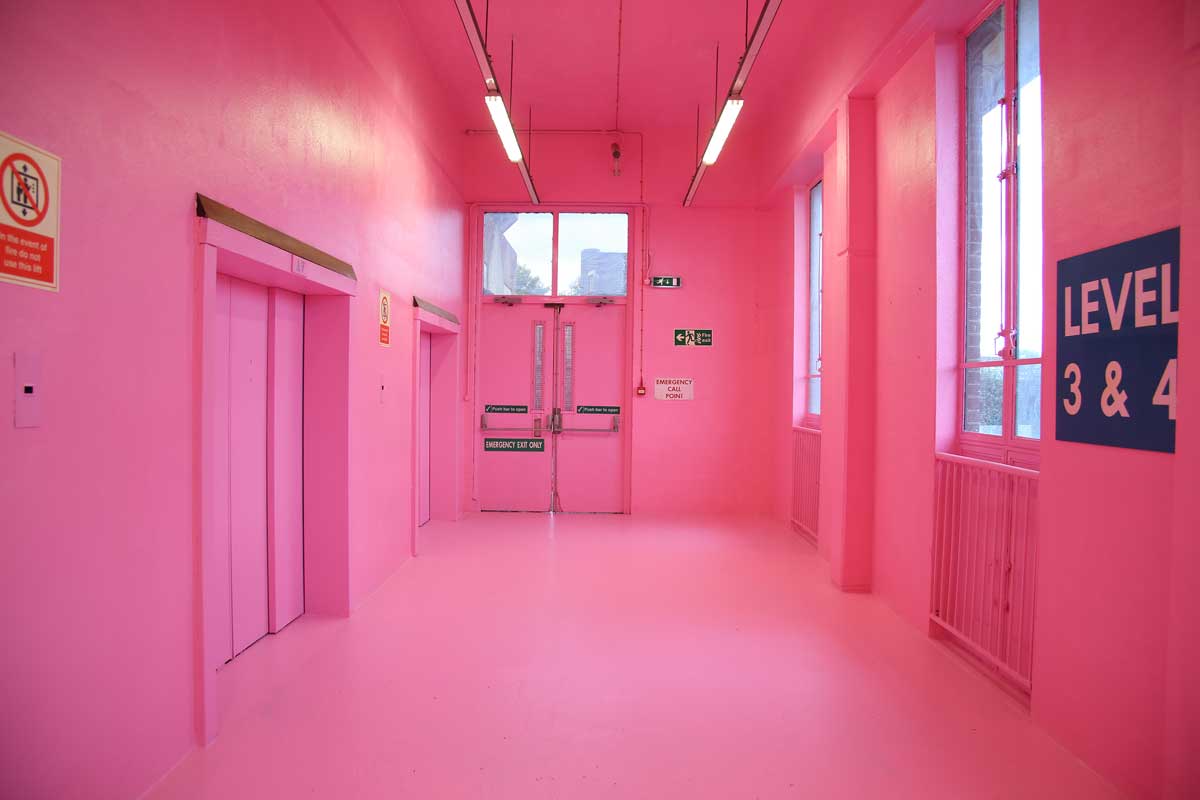
Simon Whybray
hi boo i love you, 2016
Photo: Katie Spencer

Simon Whybray
hi boo i love you, 2016
Photo: Katie Spencer
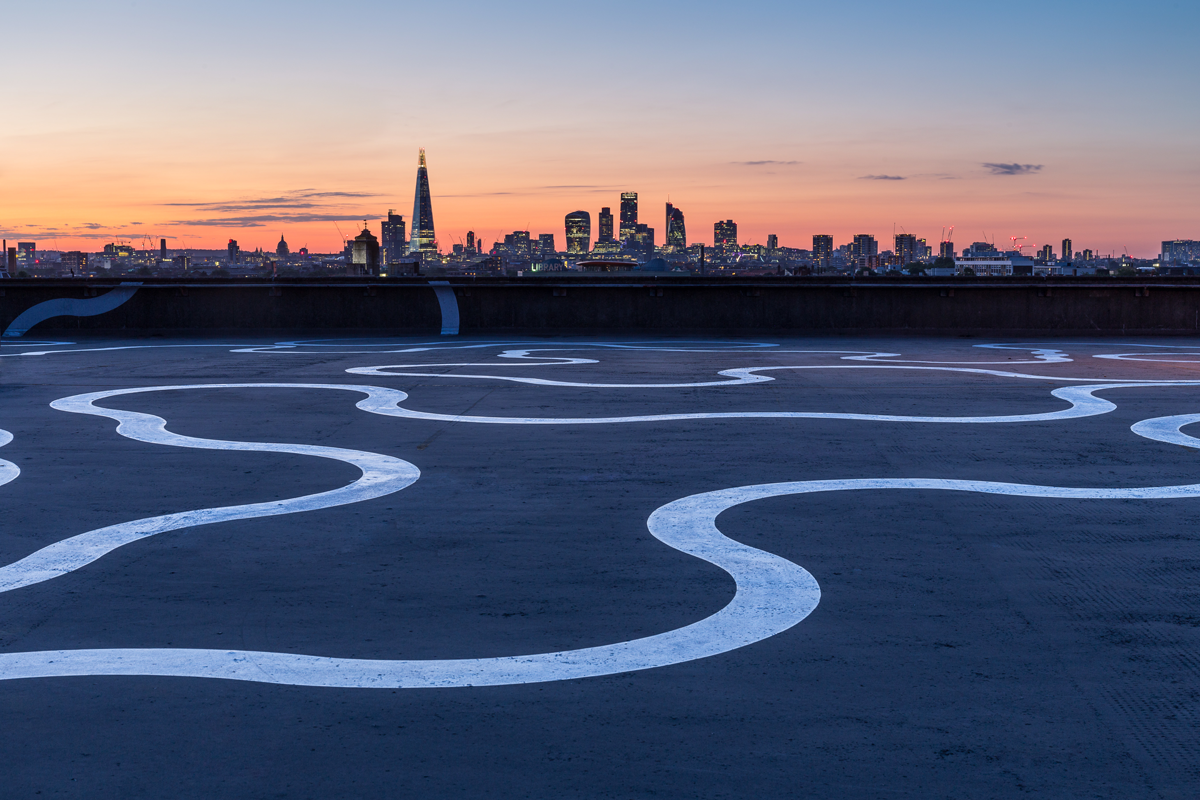
åyr, Aspects of Change
Metahaven, Possessed
(Guests curated by Attilia Fattori Franchini)
Richard Wentworth, Agora
Photo: Quintin Lake

åyr
Aspects of Change – Interior Illusion Lounge #1, 2015
Photo: Quintin Lake

åyr
Aspects of Change, 2015
Photo: Quintin Lake

åyr
Aspects of Change – Interior Illusion Lounge #4, 2015
Photo: Quintin Lake

åyr
Aspects of Change – Interior Illusion Lounge #2, 2015
Photo: Quintin Lake
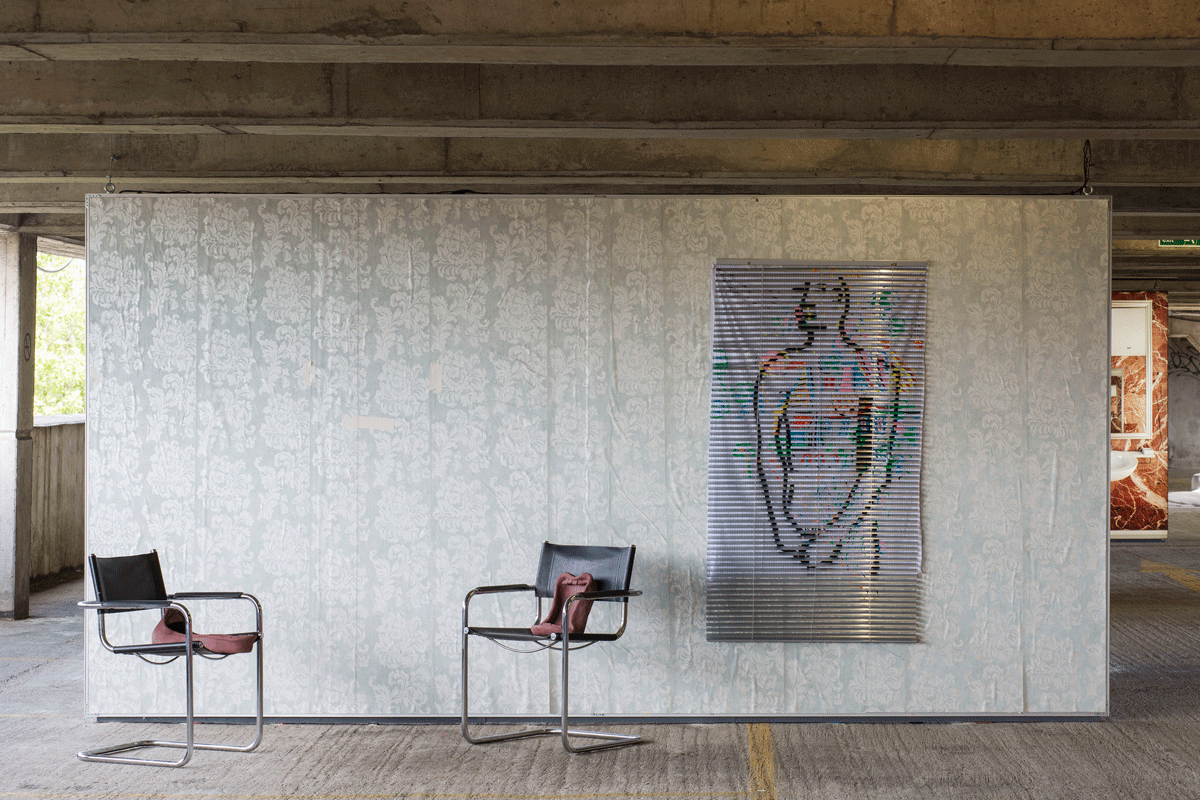
åyr
Aspects of Change
Sublet programme by Jeremy Waterfield
2015
Photo: Oskar Proctor
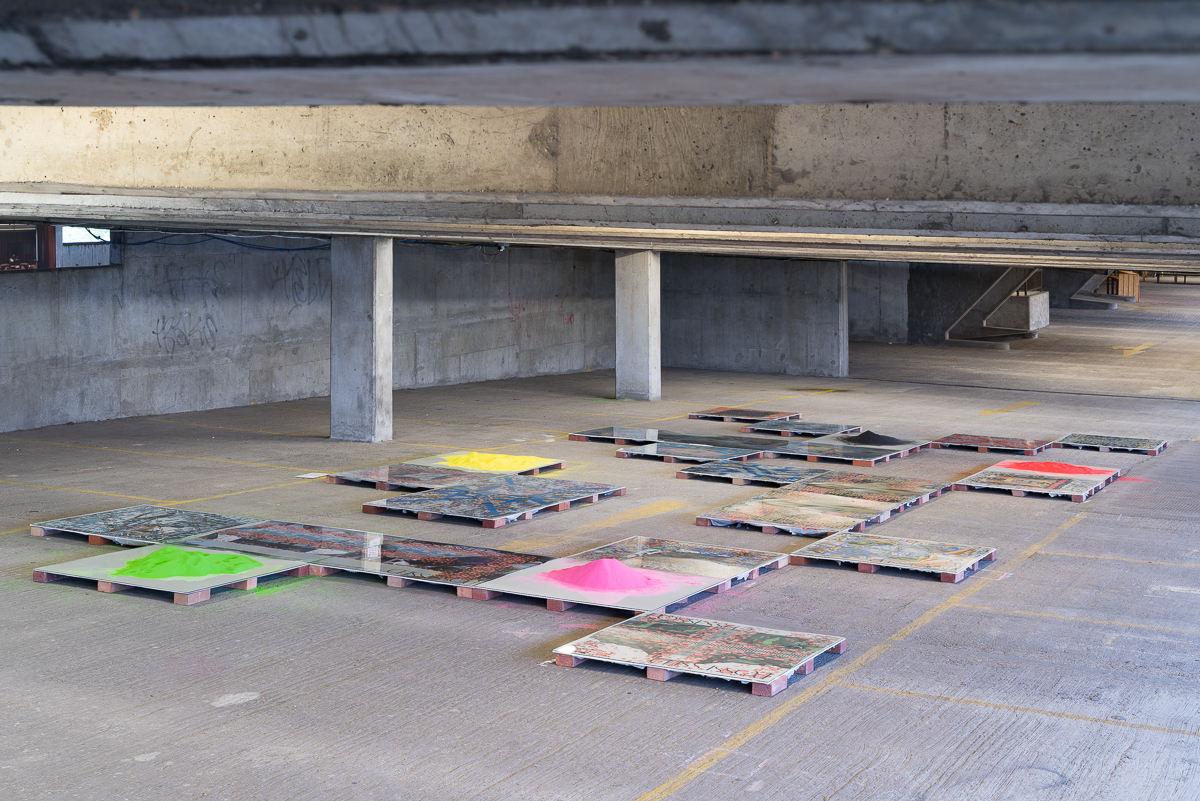
Metahaven
Possessed, 2015
Photo: Damian Griffiths
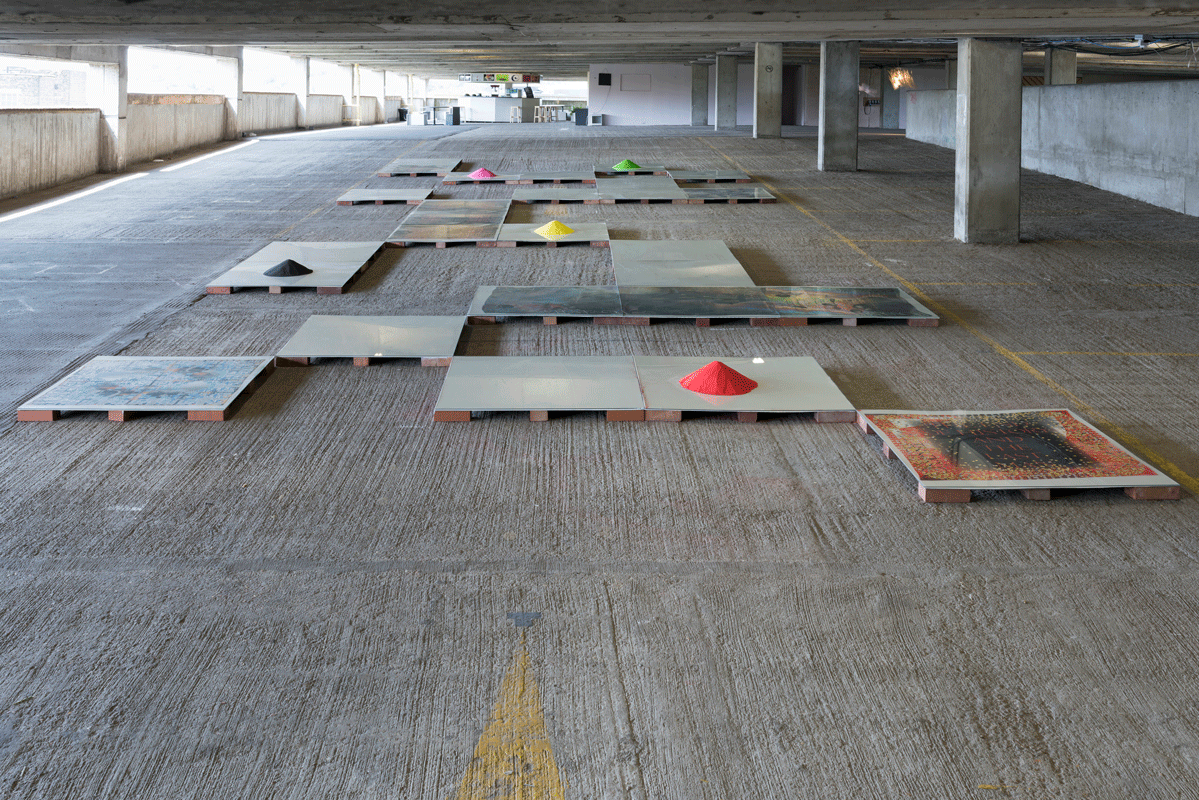
Metahaven
Possessed, 2015
Photo: Damian Griffiths

Metahaven
Possessed, 2015
Photo: Damian Griffiths

Metahaven
Possessed, 2015
Photo: Damian Griffiths
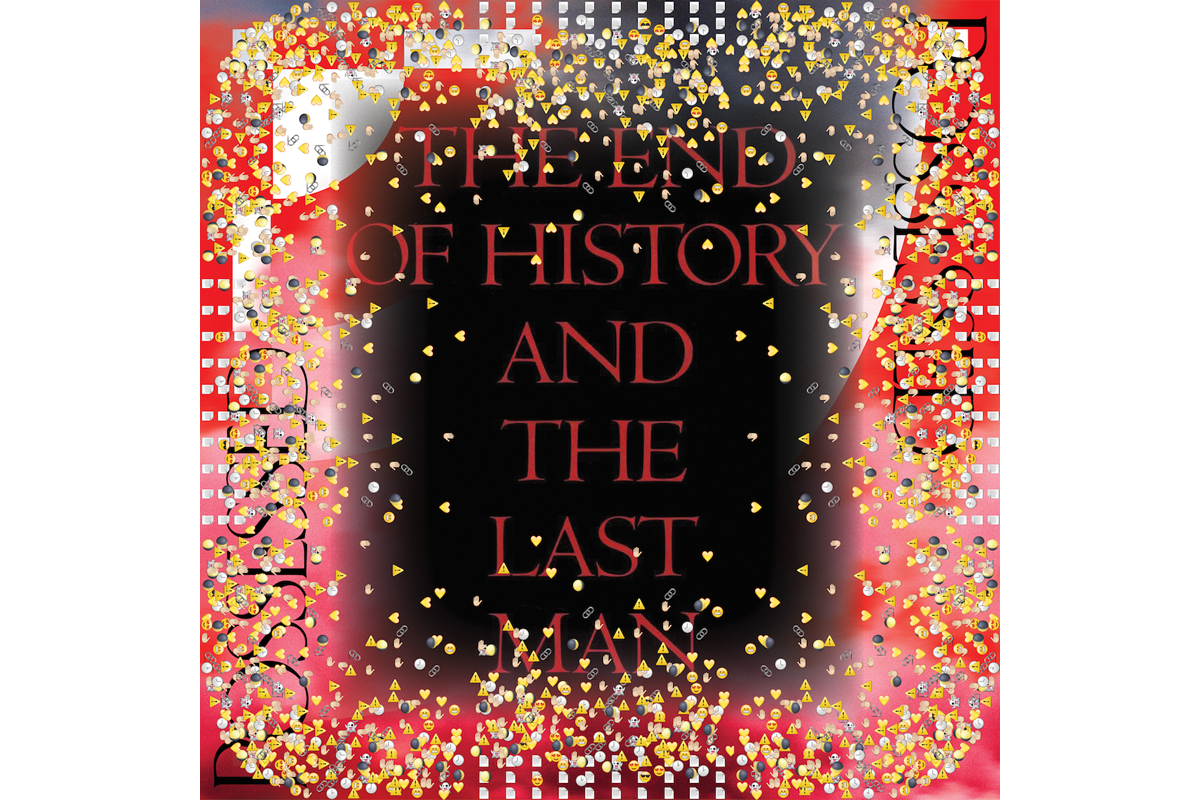
Metahaven
Possessed, 2015
Photo: Damian Griffiths
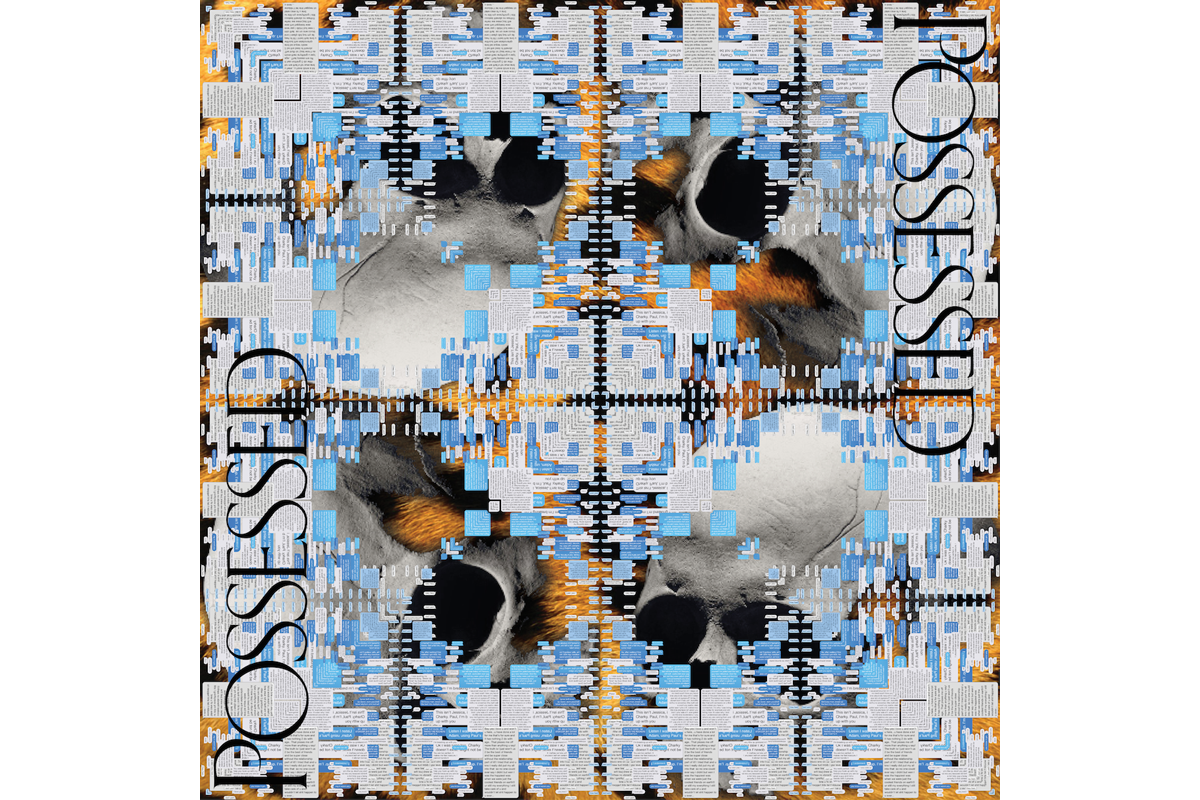
Metahaven
Possessed, 2015
Photo: Damian Griffiths
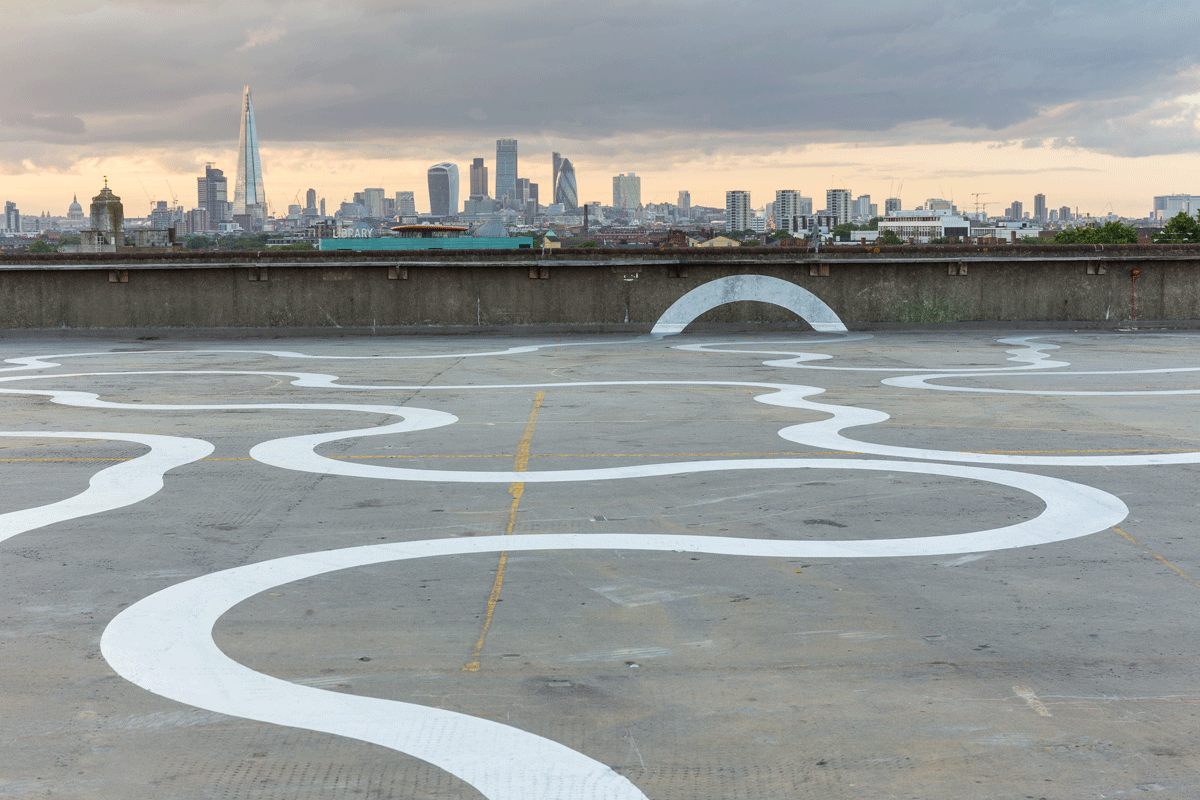
Richard Wentworth
Agora, 2015
Supported by Johnstone’s Trade
Photo: Quintin Lake

Richard Wentworth
Agora, 2015
Supported by Johnstone’s Trade
Photo: Quintin Lake
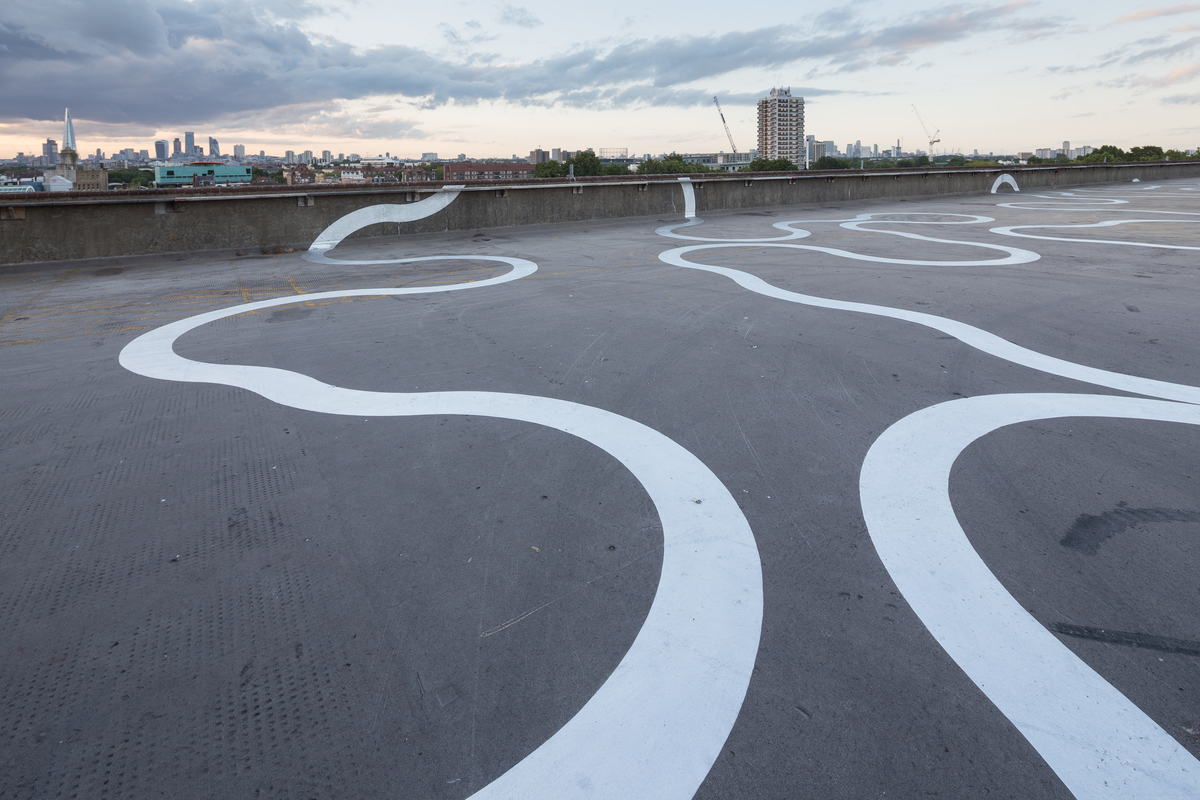
Richard Wentworth
Agora, 2015
Supported by Johnstone’s Trade
Photo: Quintin Lake
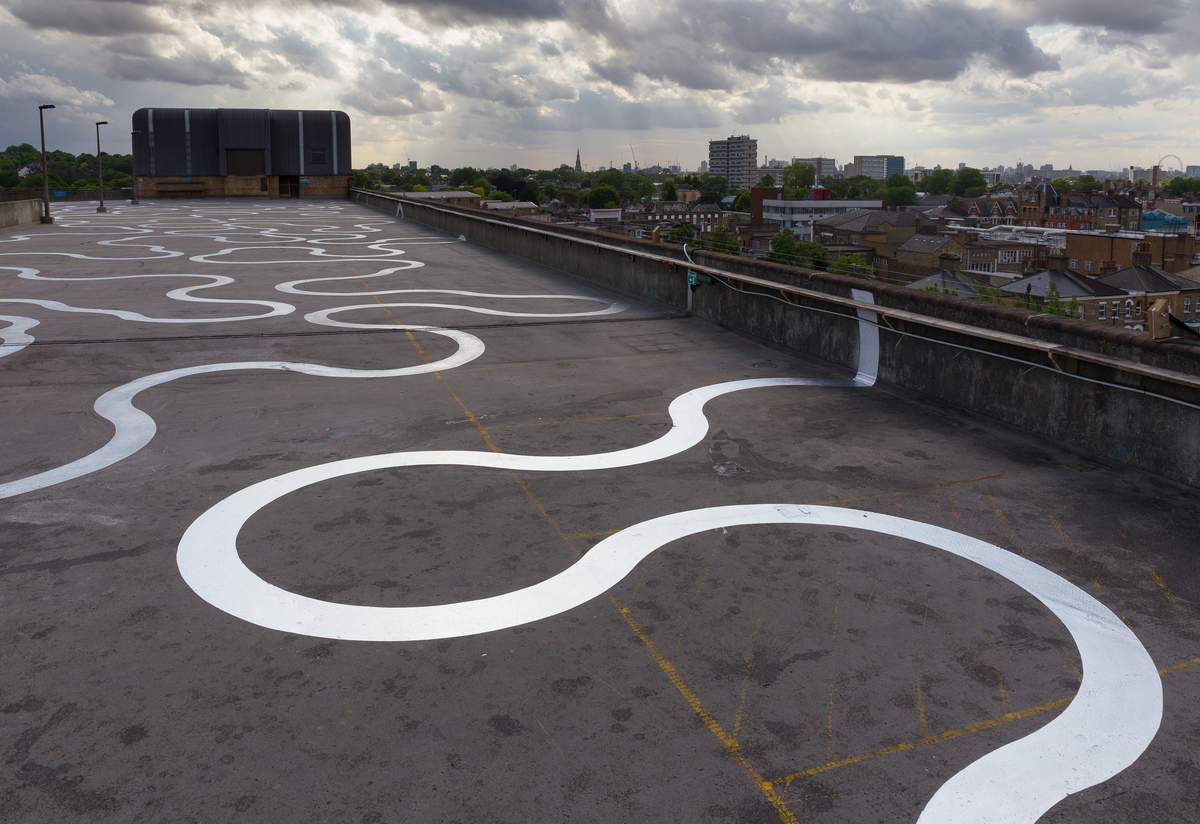
Richard Wentworth
Agora, 2015
Supported by Johnstone’s Trade
Photo: Quintin Lake
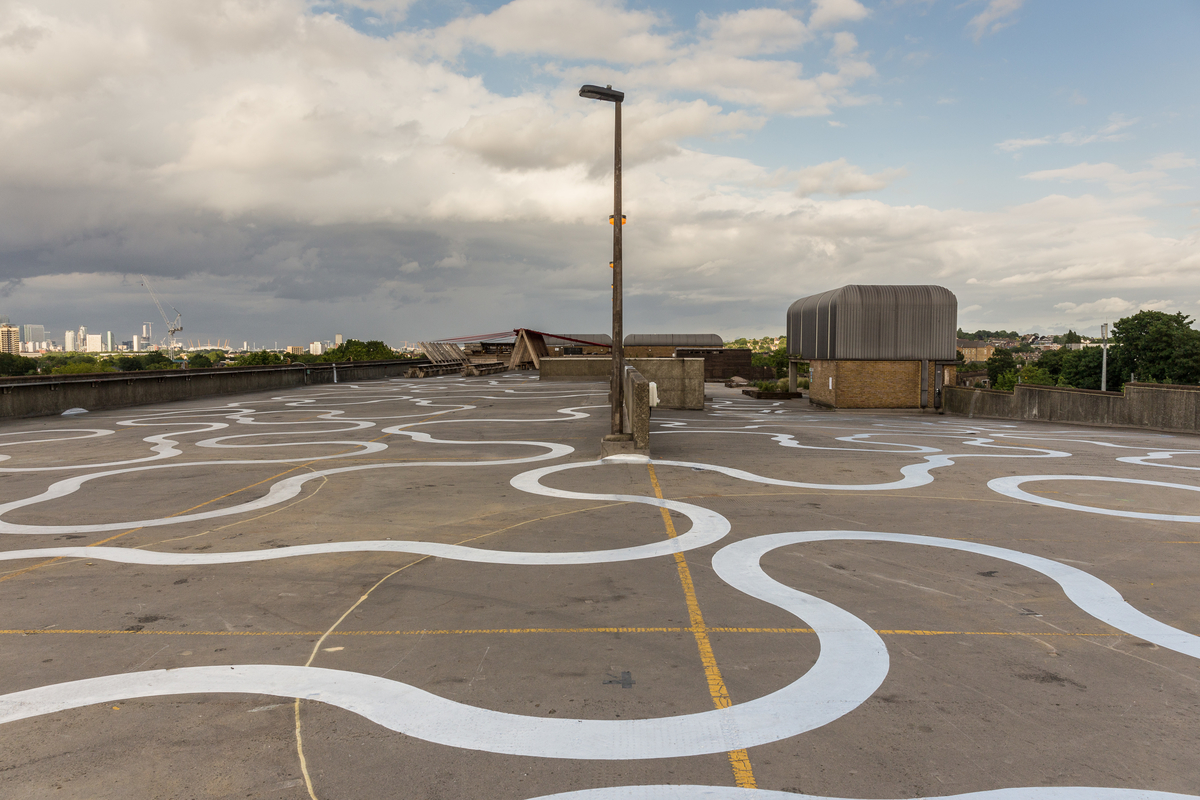
Richard Wentworth
Agora, 2015
Supported by Johnstone’s Trade
Photo: Quintin Lake

Richard Wentworth
Agora, 2015
Supported by Johnstone’s Trade
Photo: Quintin Lake
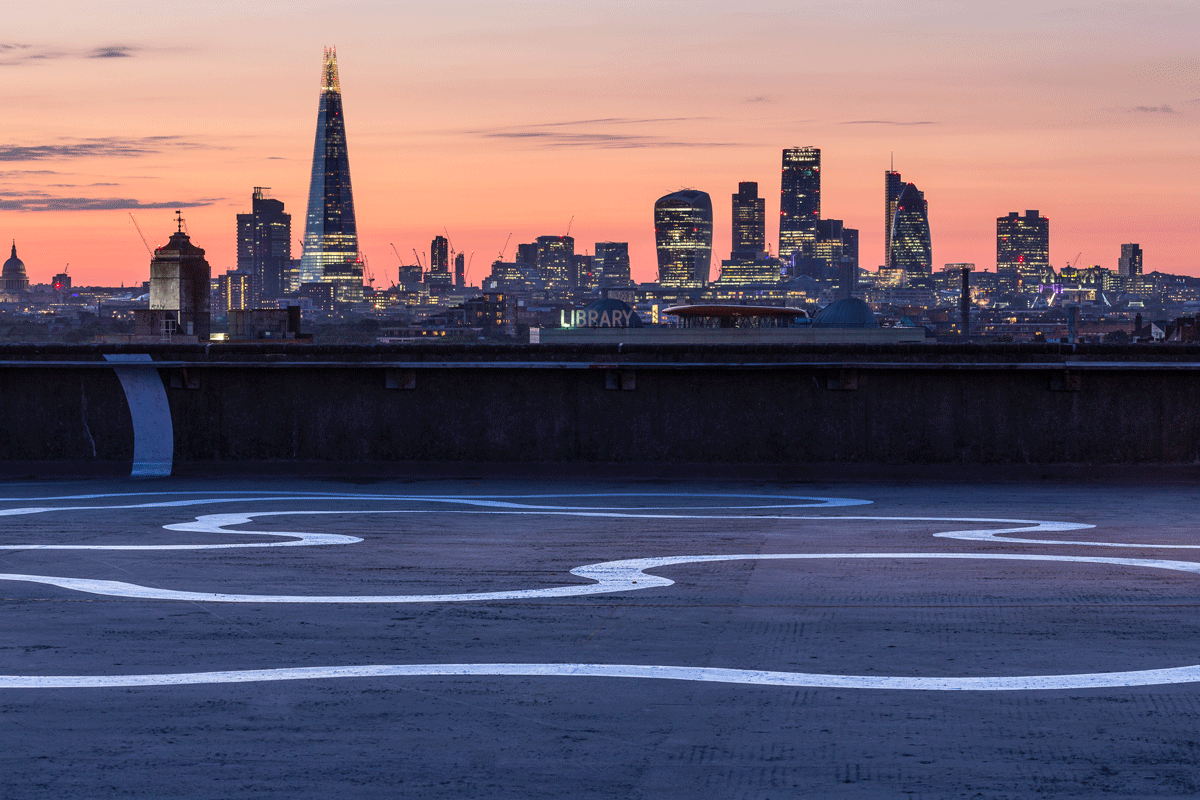
Richard Wentworth
Agora, 2015
Supported by Johnstone’s Trade
Photo: Quintin Lake
Richard Wentworth’s Agora is a painted abstract design that covers the entire floor area of the car park roof, incorporating some of the walls. Painted in aluminium rich paint, it reflects the changing weather conditions the roof is exposed to, unifying and activating the spectacular roof space through the summer months. With Agora Richard Wentworth has pursued his interest in how spatial conditions interact with social reality. The title, designating an open assembly space in Ancient Greek, also shares an etymological root with ‘gregarious’, highlighting the work’s ambition to bring the space to life for the many visitors who experience it during the summer.
Kindly supported by Johnstone’s Trade
Richard Wentworth has played a leading role in New British Sculpture since the end of the 1970s. His work, encircling the notion of objects and their use as part of our day-to-day experiences, has altered the traditional definition of sculpture as well as photography. By transforming and manipulating industrial and/or found objects into works of art, Wentworth subverts their original function and extends our understanding of them by breaking the conventional system of classification. The sculptural arrangements play with the notion of ready-made and juxtaposition of objects that bear no relation to each other. Whereas in photography, as in the ongoing series Making Do and Getting By, Wentworth documents the everyday, paying attention to objects, occasional and involuntary geometries as well as uncanny situations that often go unnoticed.
Richard Wentworth lives and works in London. Major solo presentations include Black Maria with Gruppe, Kings Cross (2013), Whitechapel Gallery (2010); 52nd Venice Biennale (2009); Tate Liverpool (2005); Artangel (2002); Bonner Kunstverein (1998); Stedelijk Museum (1994); Serpentine Gallery (1993).

James Bridle, The Right To Flight
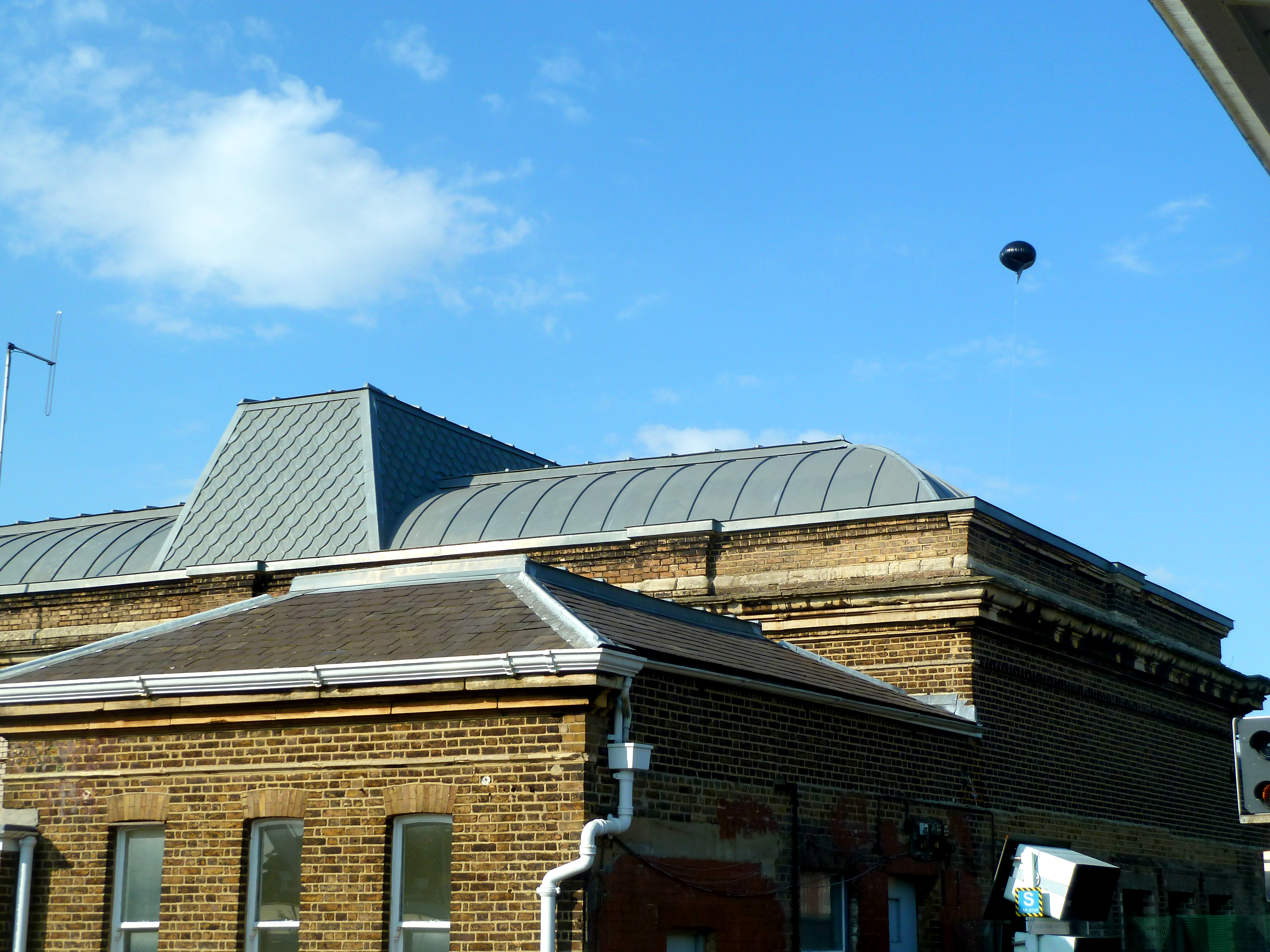
James Bridle
The Right To Flight, 2014

James Bridle
The Right To Flight, 2014
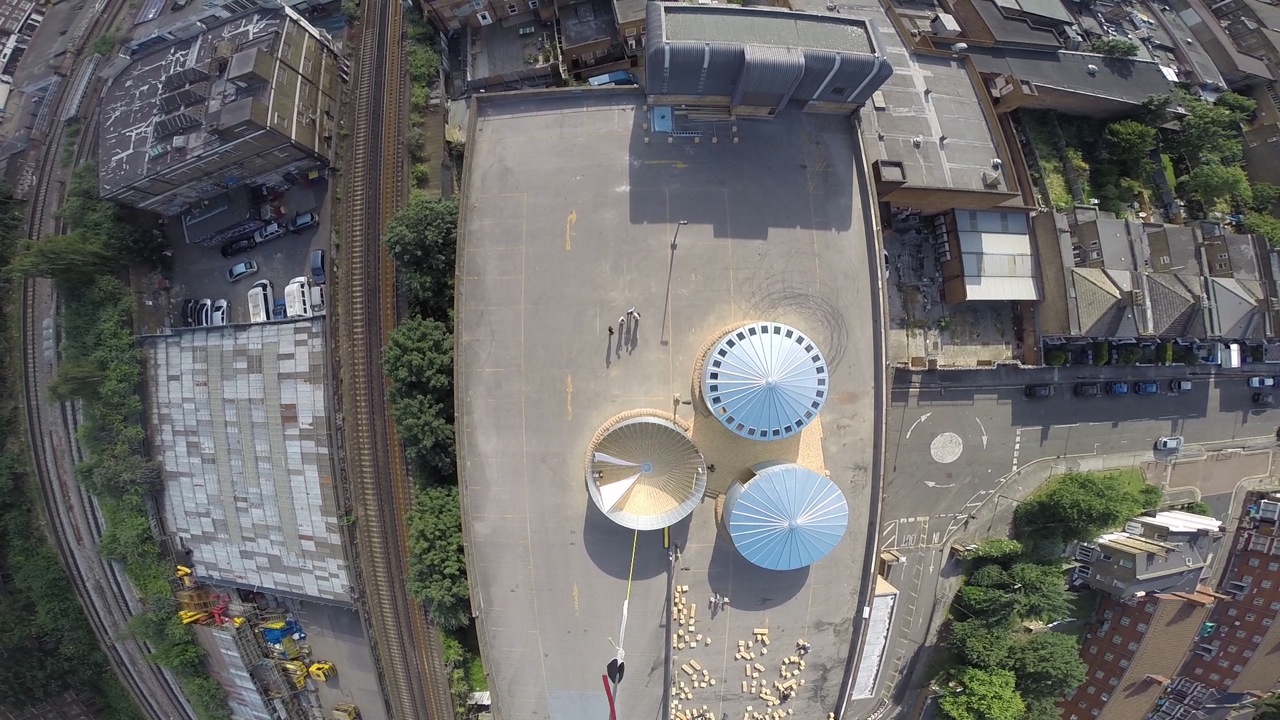
James Bridle
The Right To Flight, 2014

James Bridle
The Right To Flight, 2014
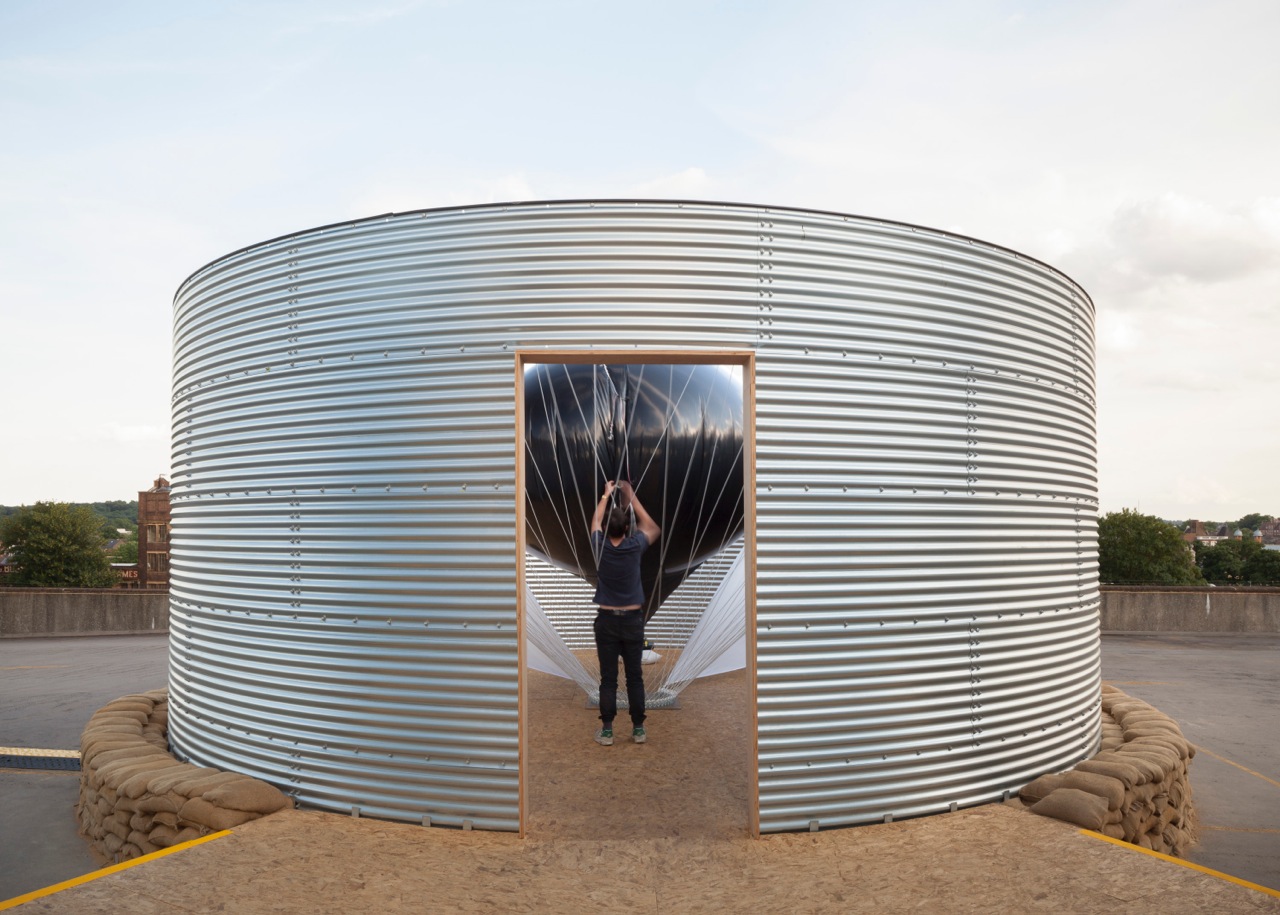
James Bridle
The Right To Flight, 2014

James Bridle
The Right To Flight, 2014
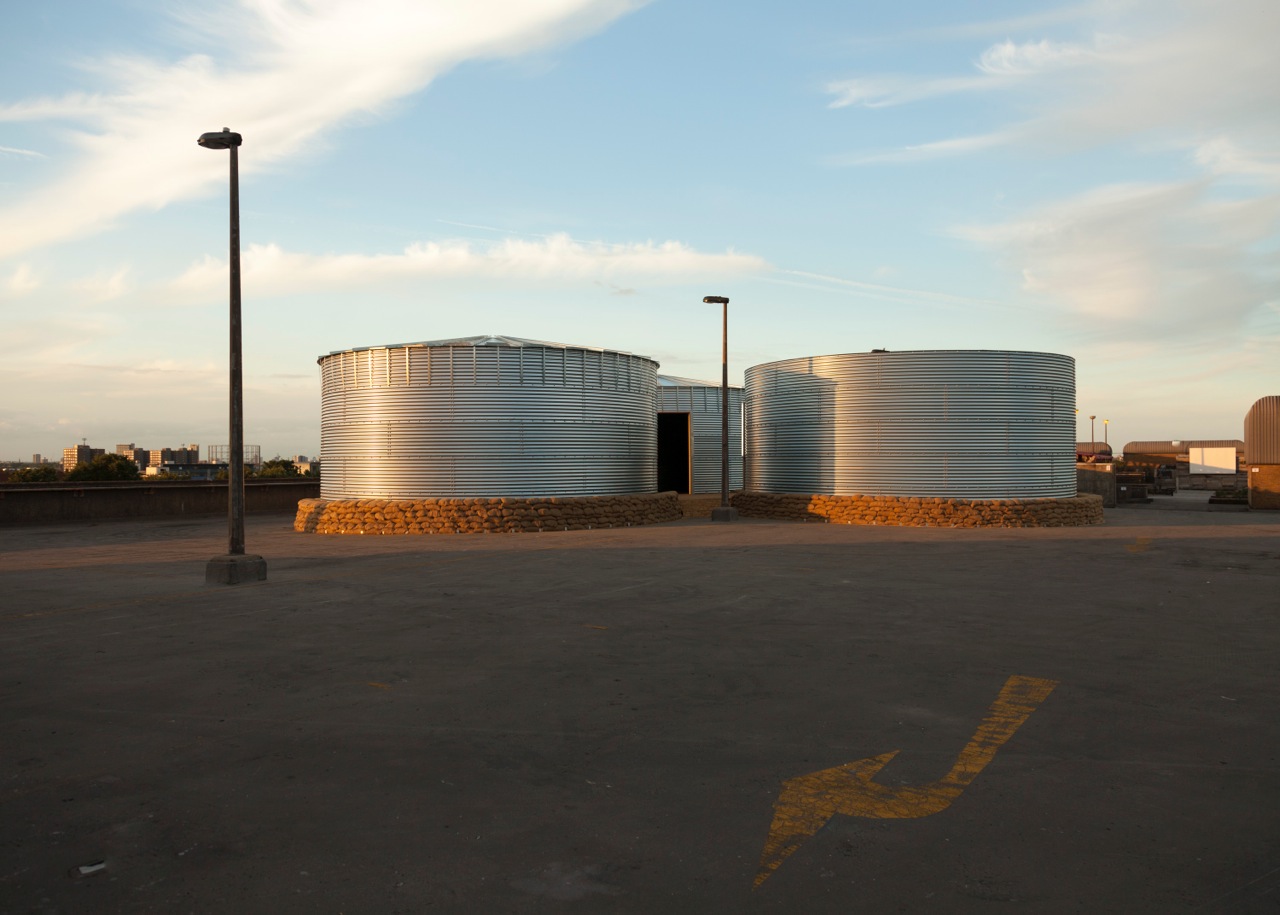
James Bridle
The Right To Flight, 2014
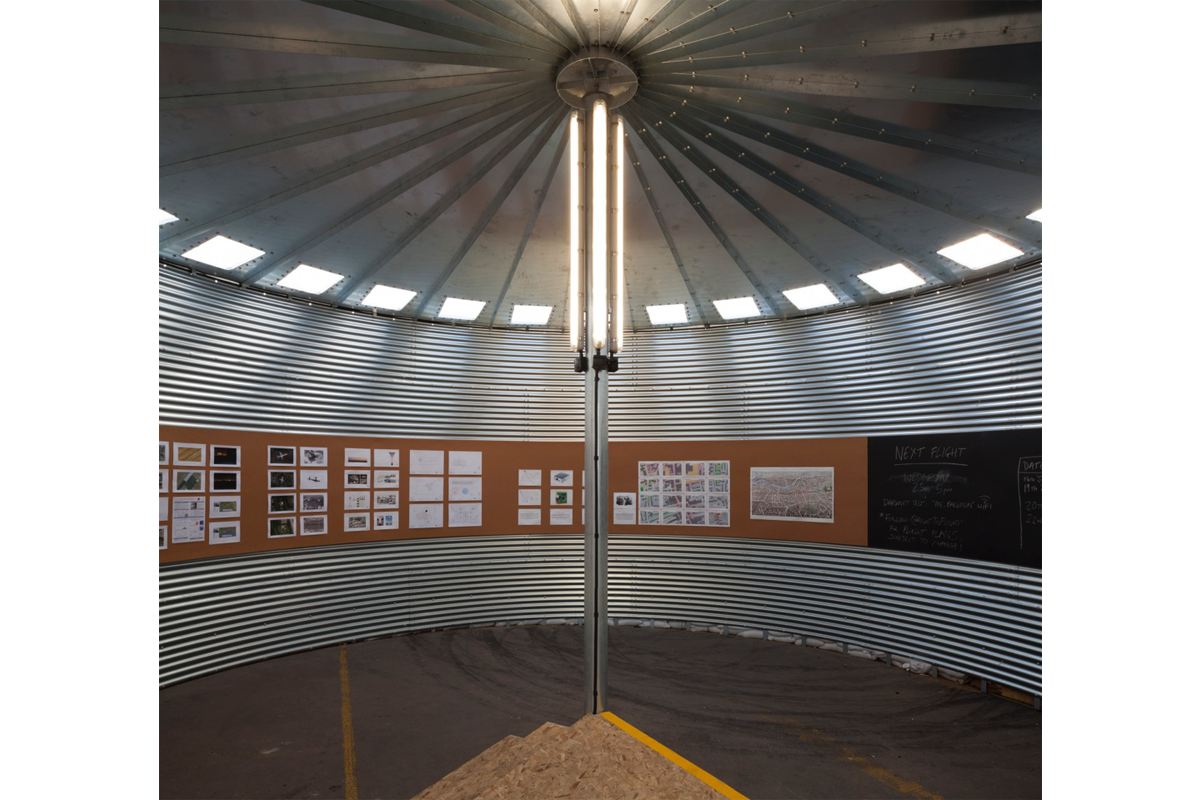
James Bridle
The Right To Flight, 2014
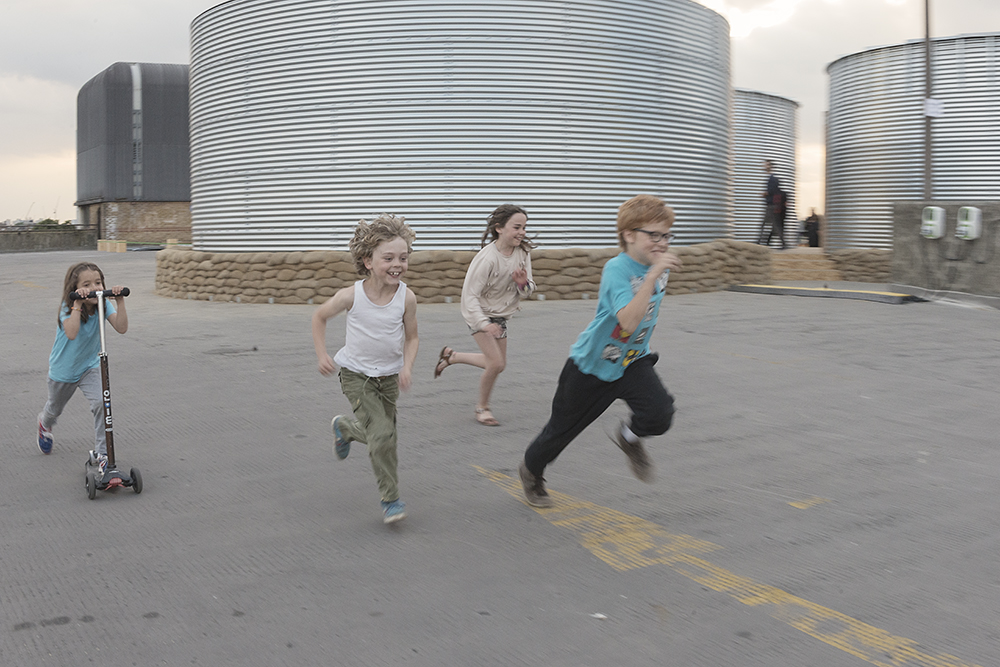
James Bridle
The Right To Flight, 2014
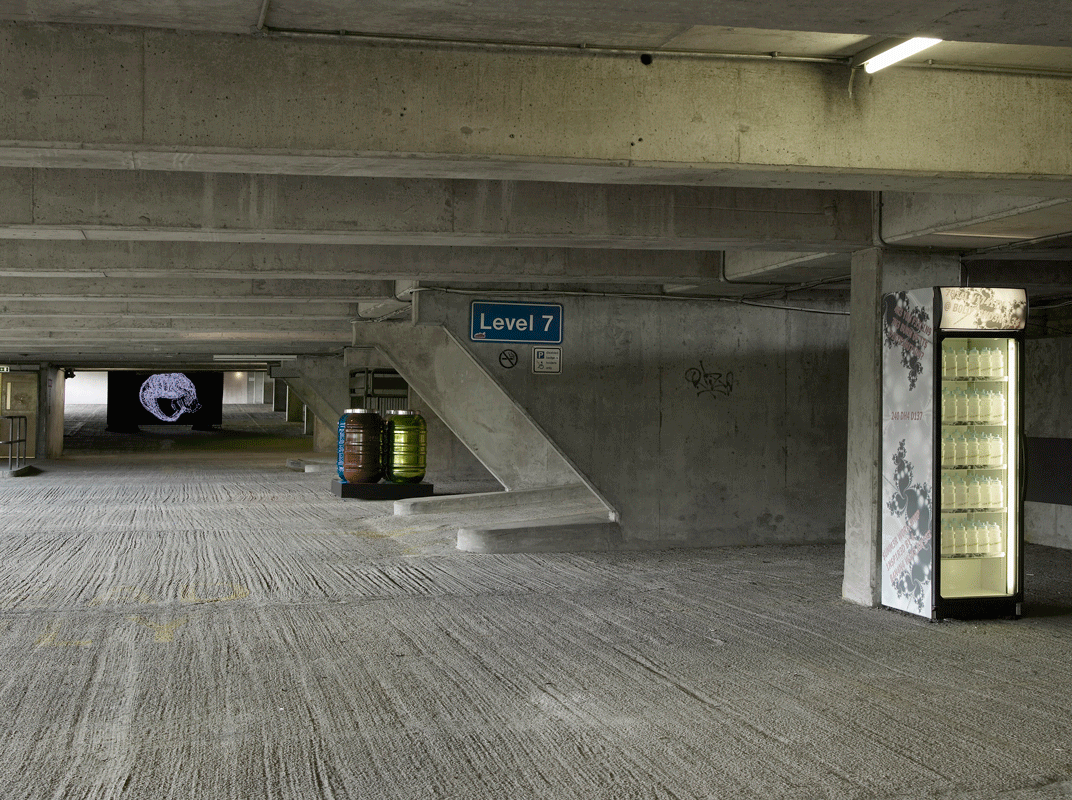
Nina Beier, Real Estate
Nicholas Brooks, Transit of the Megaliths
Steven Claydon, It in Transit (Is the Thing In Itself)
Benedict Drew, Now That’s What I Call Feedback
Cecile Evans, Bright
Grand George, Elements of Religion
Piotr Lakomi, A Room With a View
Michael Lewitt, Artist Dining Space
Jimmy Merris, Awesome Tapes From Africa Mate
Ruth Proctor, I See You Liking Everything
Total Vitality
Curated by Joe Balfour
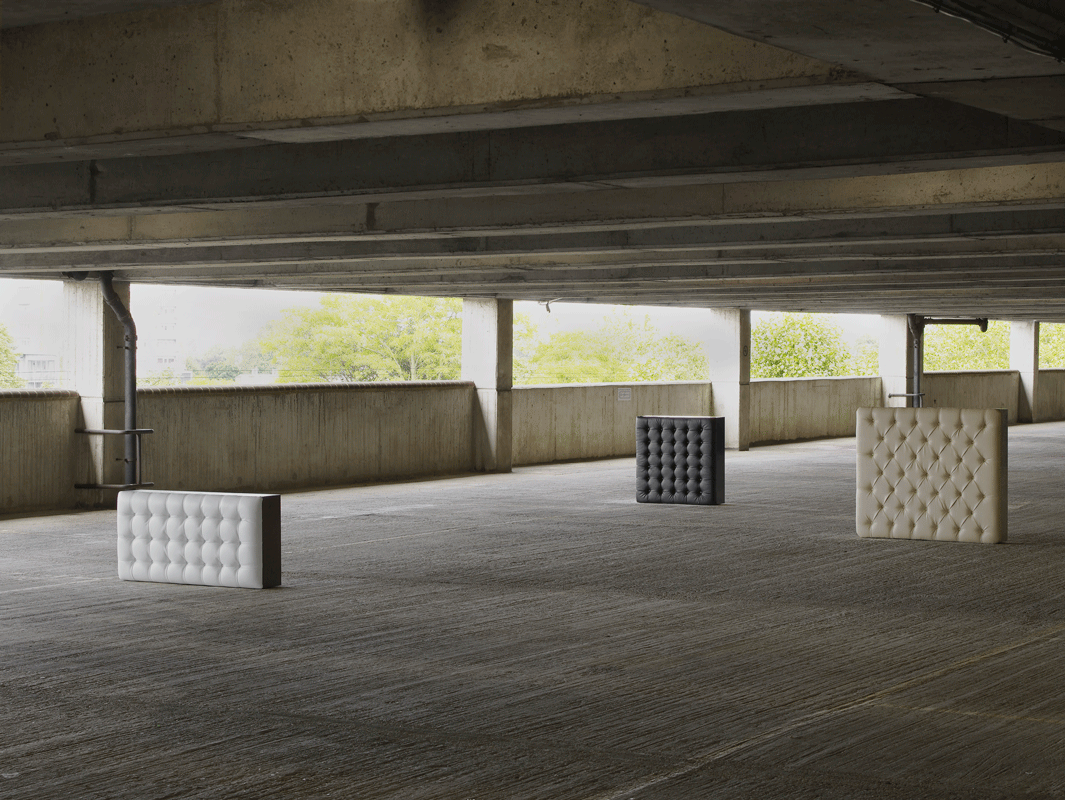
Nina Beier
Real Estate, 2013
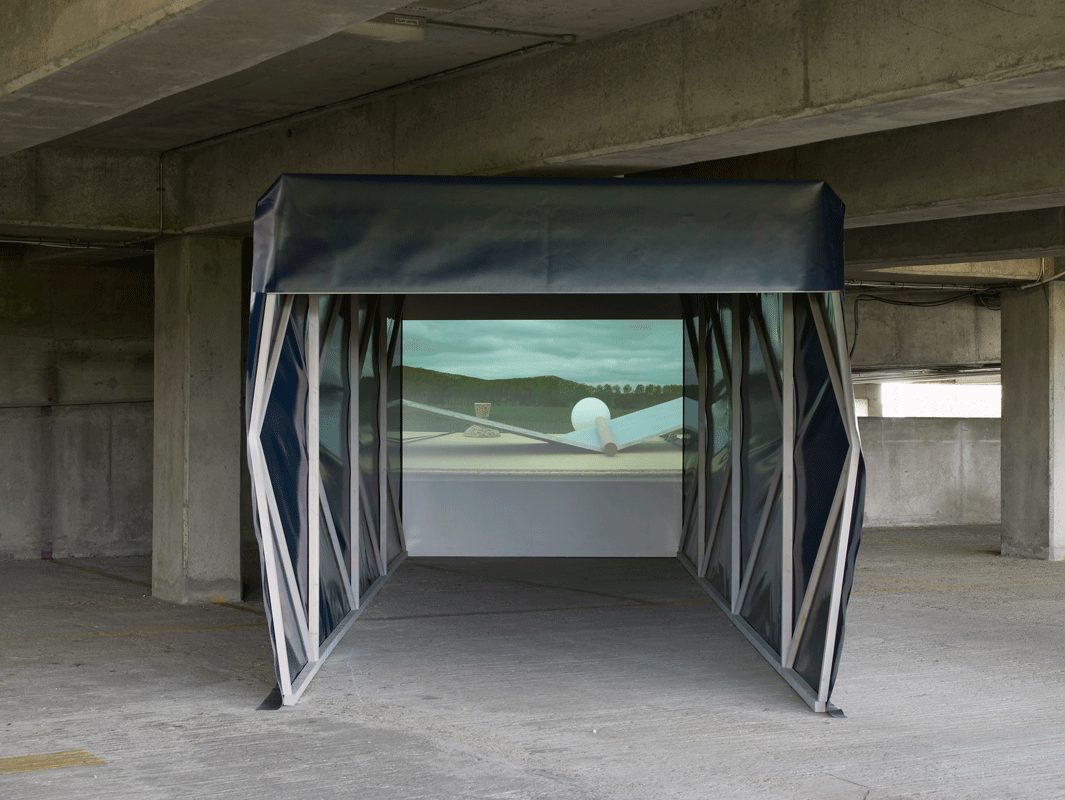
Nicholas Brooks
Transit of the Megaliths, 2013
Photo: Andy Keate
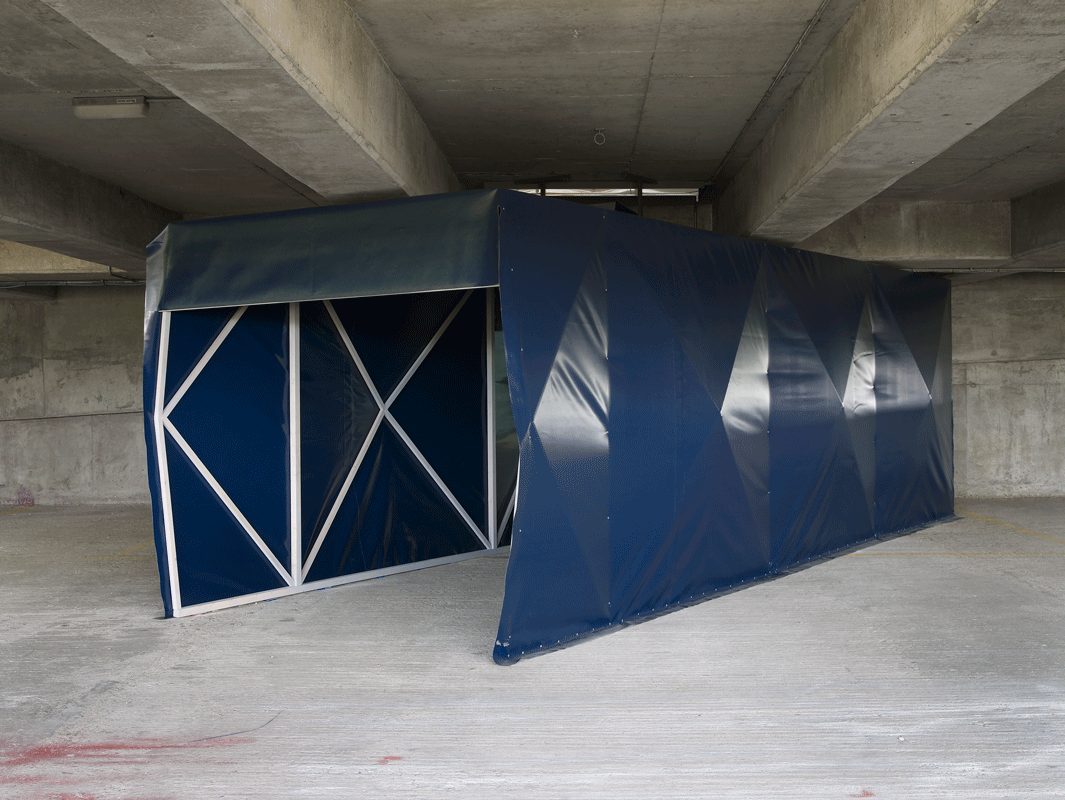
Nicholas Brooks
Transit of the Megaliths, 2013
Photo: Andy Keate
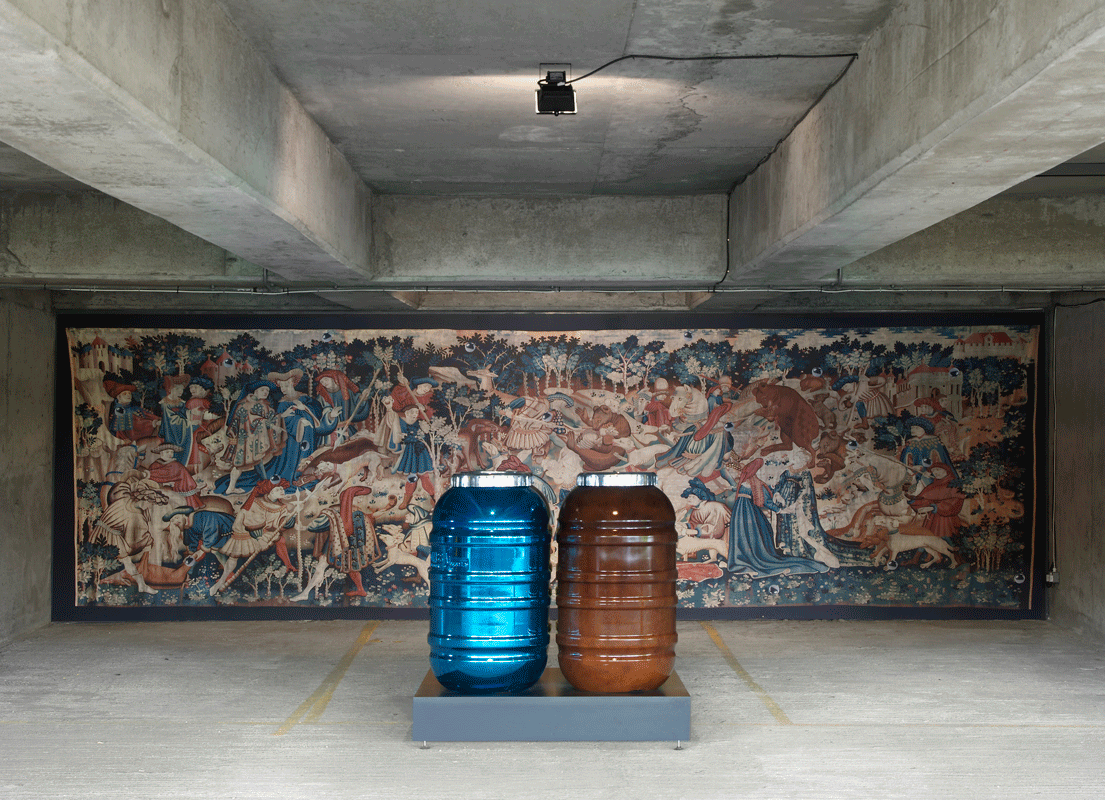
Stephen Claydon
It in Transit (Is the Thing In Itself), 2013
Photo: Andy Keate

Benedict Drew
Now That’s What I Call Feedback, 2013
Photo: Andy Keate

Cecile B Evans
Bright, 2013
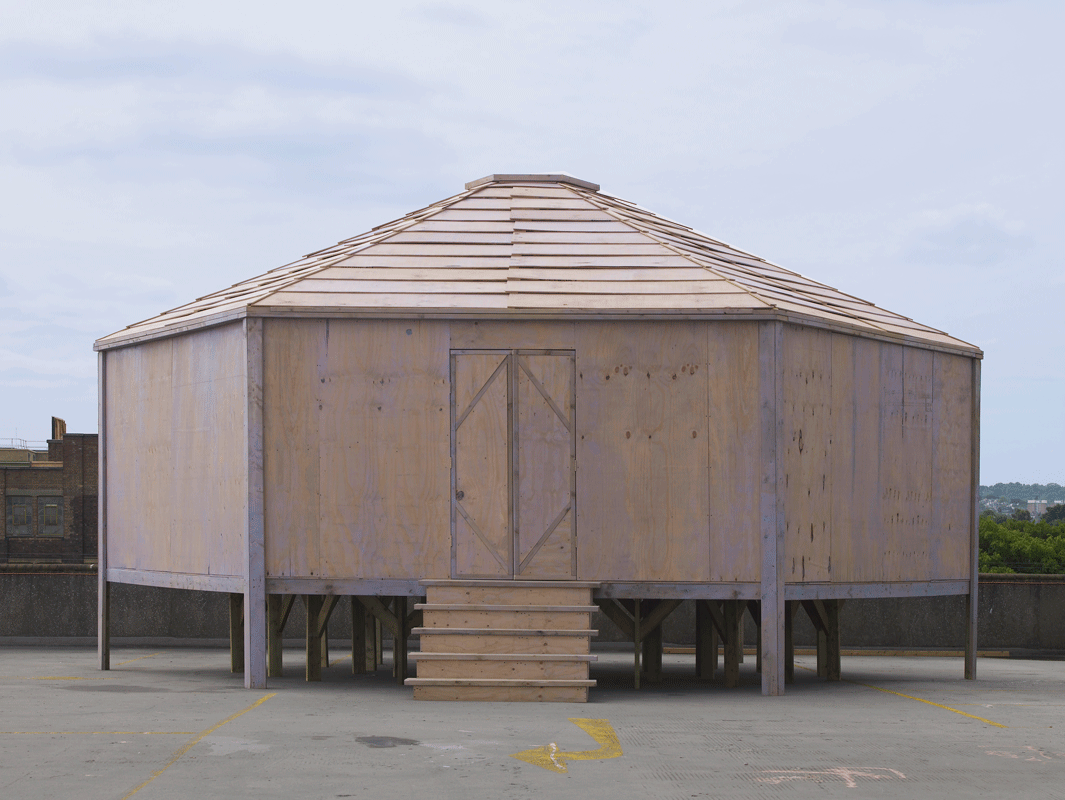
Grand George
Elements of Religion, 2013
Photo: Andy Keate
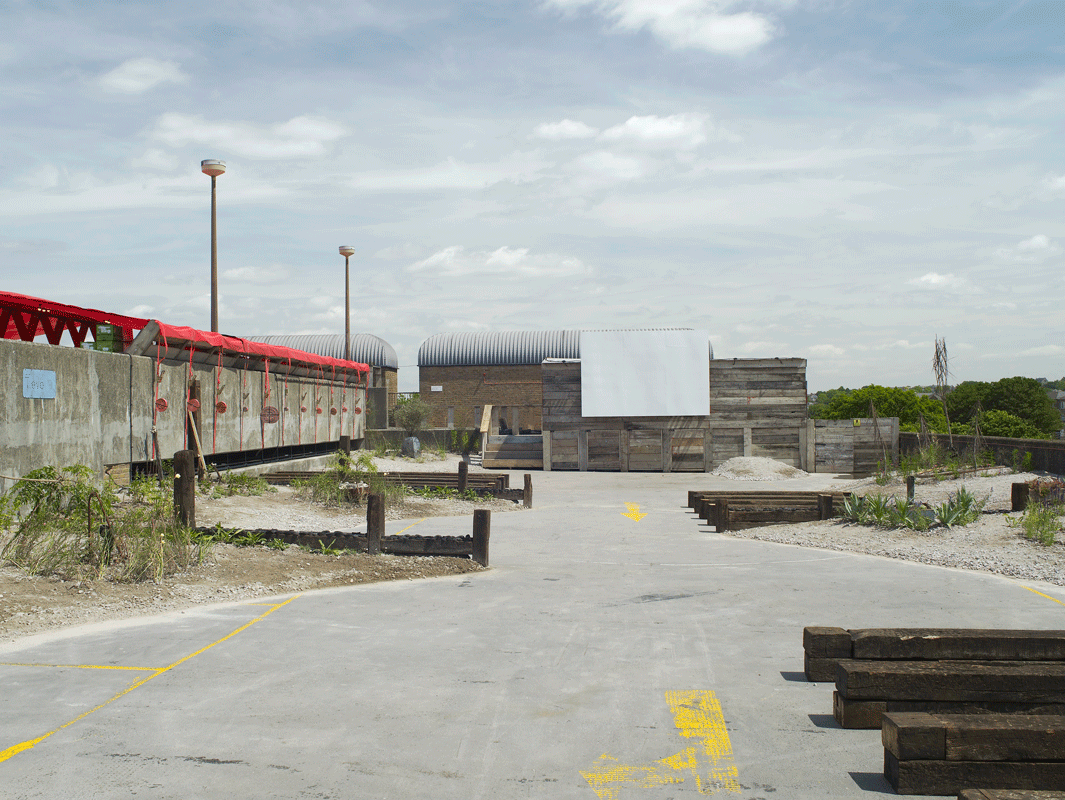
Derek Jarman Garden for Peckham, 2013
Curated by K. Collins and designed by Propagating Dan
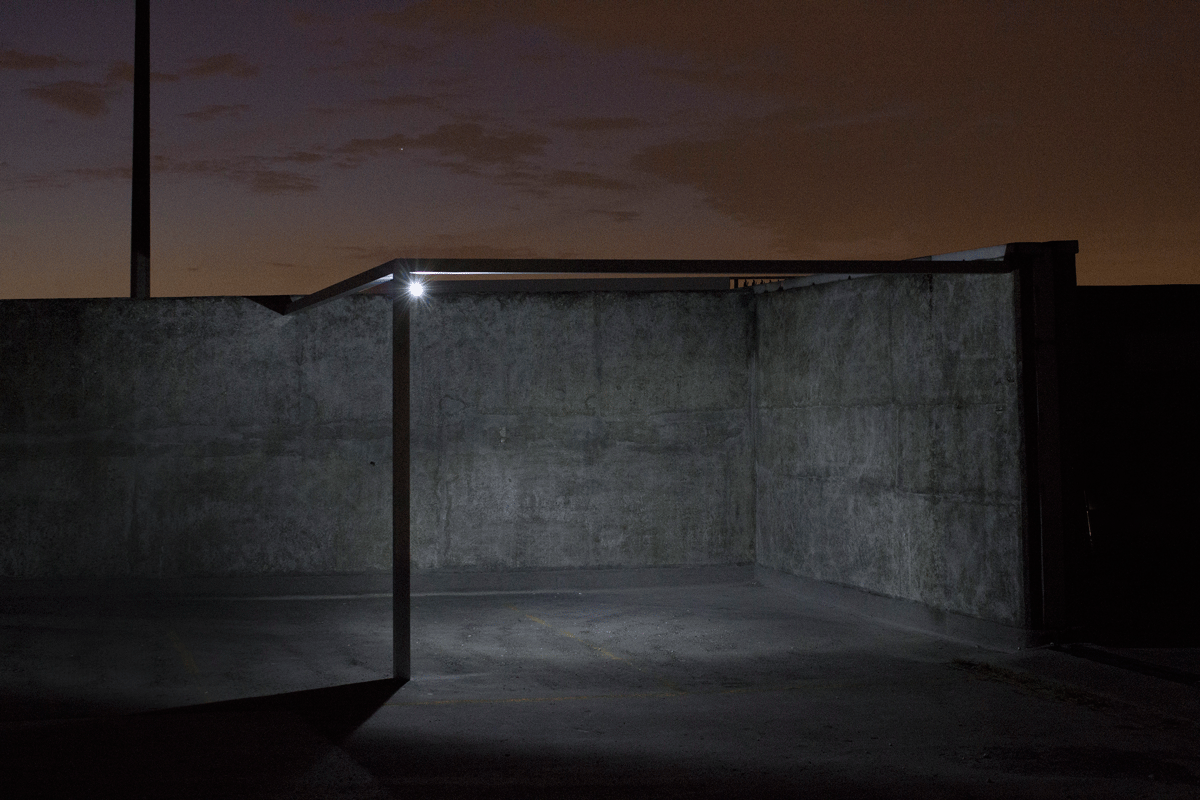
Piotr Lakomy
A Room With a View, 2013
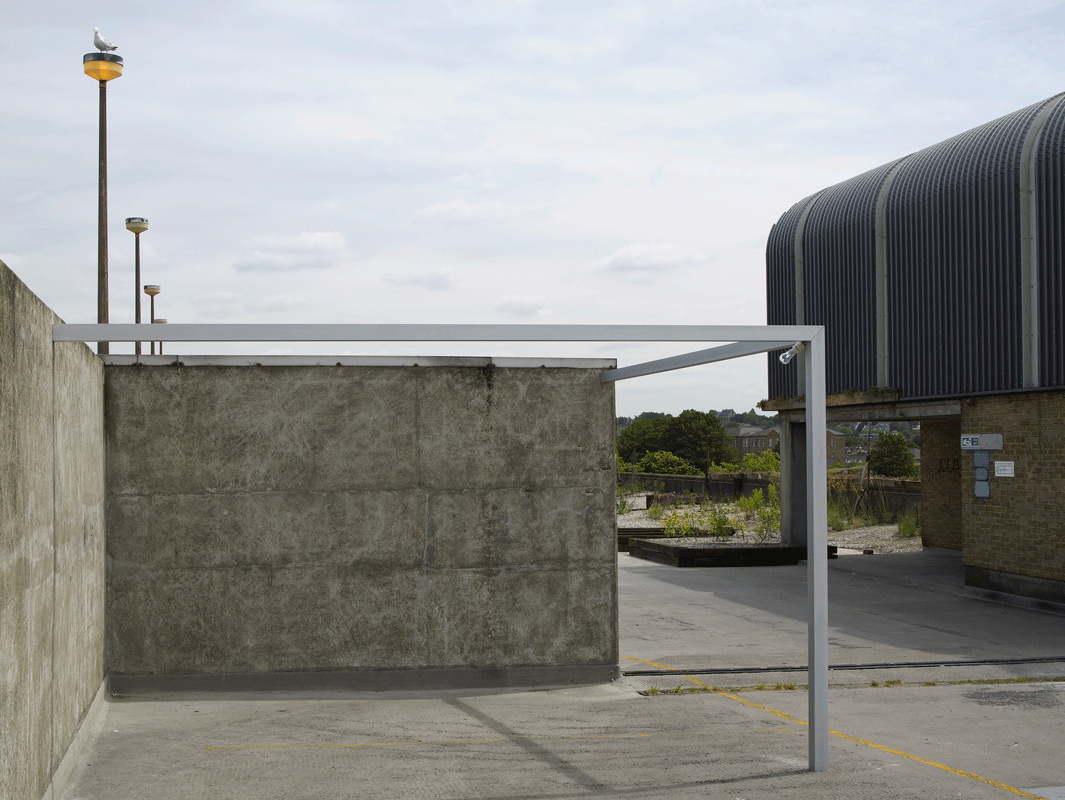
Piotr Lakomy
A Room With a View, 2013

Michael Levitt
Artist Dining Space, 2013
Photo: Andy Keate

Jimmy Merris
Awesome Tapes From Africa Mate, 2013
Photo: Andy Keate
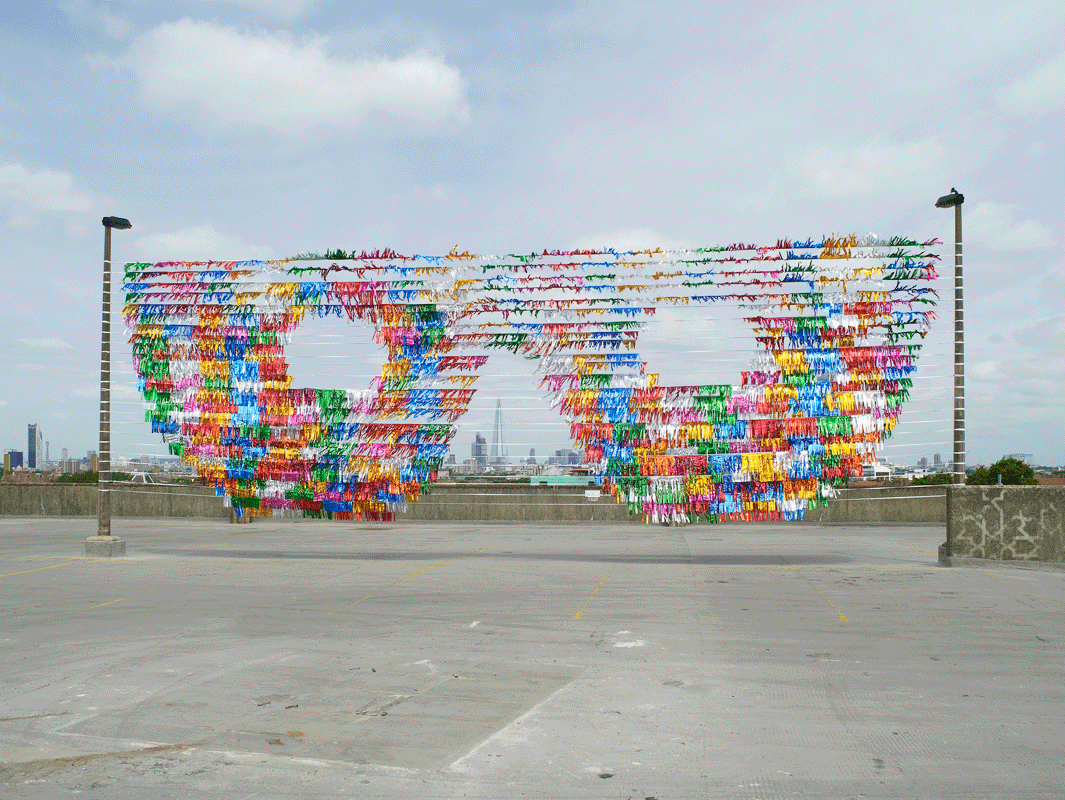
Ruth Proctor
I See You Liking Everything, 2013
Photo: Andy Keate
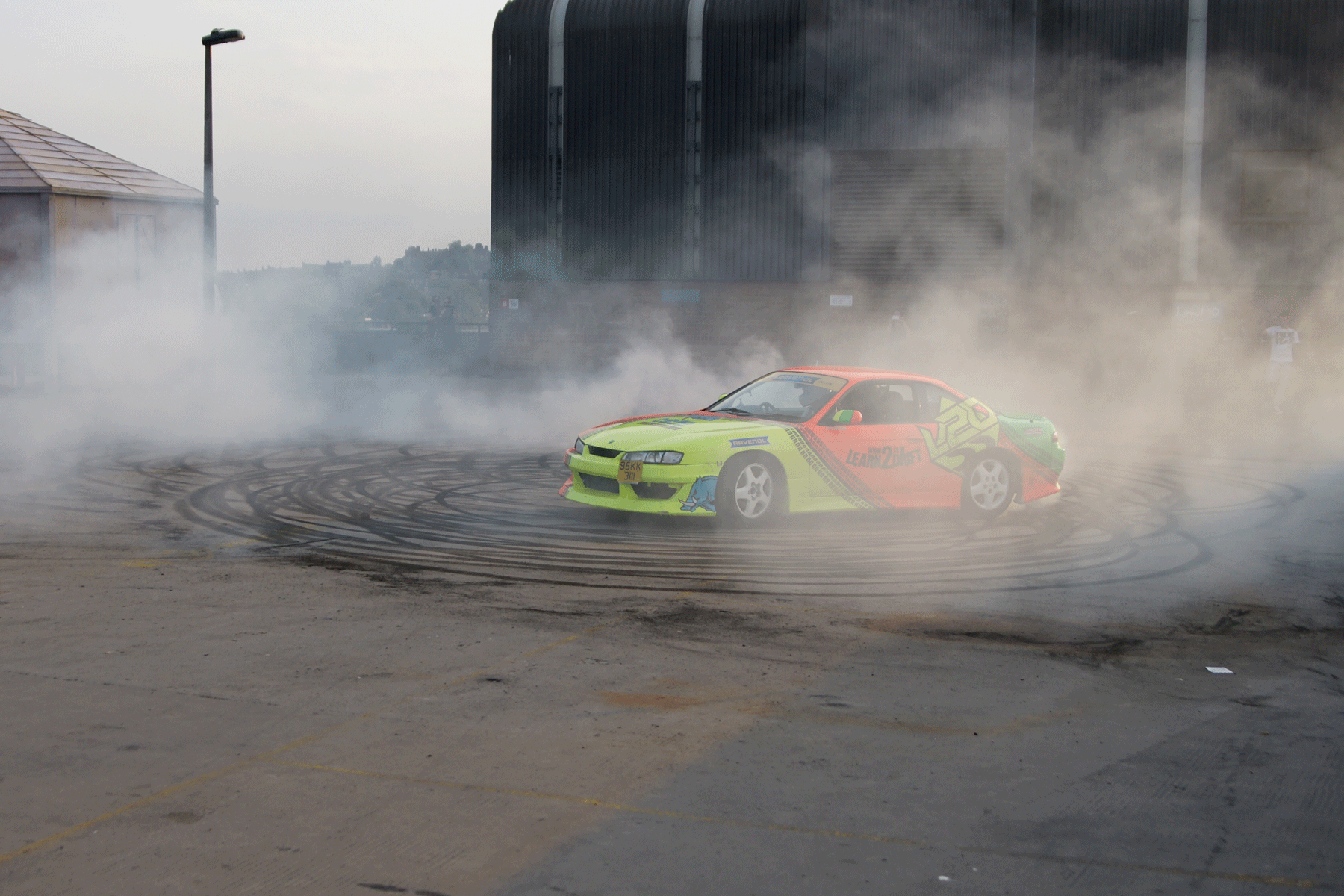
Ruth Proctor
I See You Liking Everything, 2013
Photo: Andy Keate

TOTAL VITALITY, 2013
Photo: Andy Keate
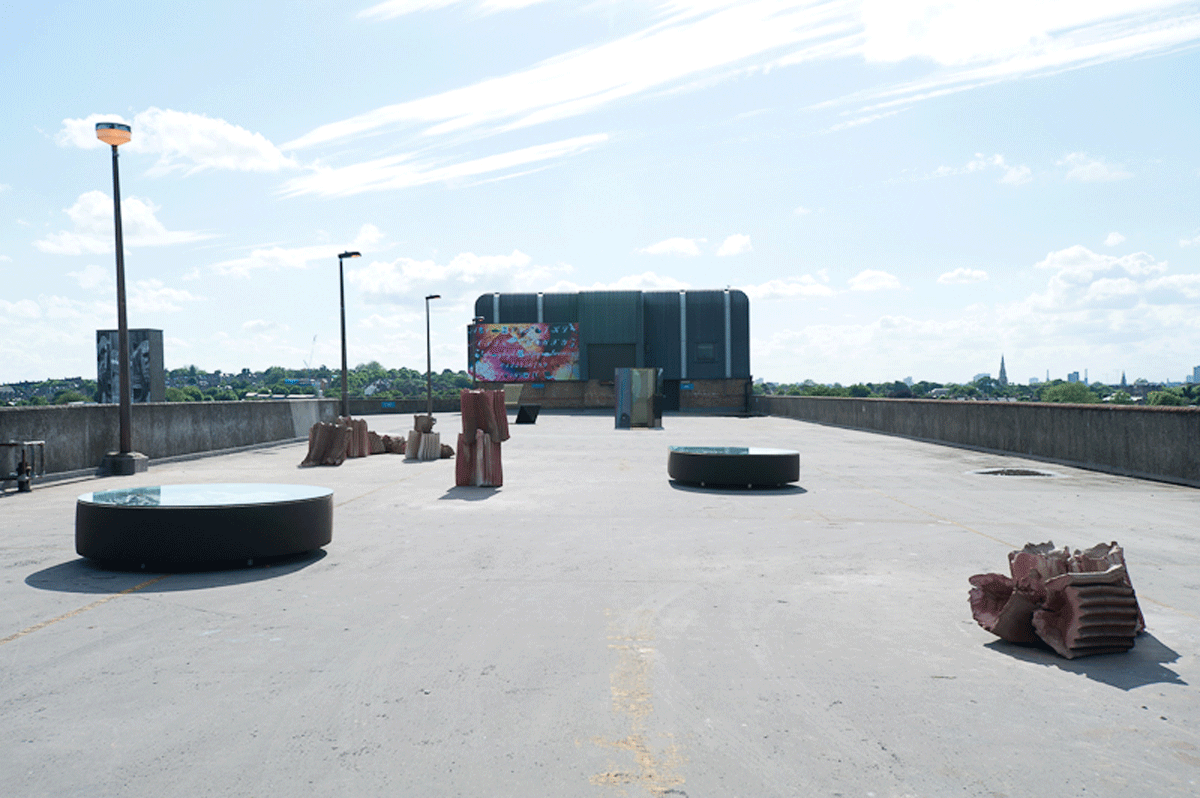
Laura Buckley, Byōbu
Sarah Cain, A Beginning; Circling Space; Dirty; Meltdown; Modern; Seduction
Peles Empire, Fountain I
Carter Mull, Lexicon
Mary Redmond, Seven Split Overglide
Martin Westwood, Pere and Terre Hanging Out At Bistro Repetere
Photo: Damian Griffiths
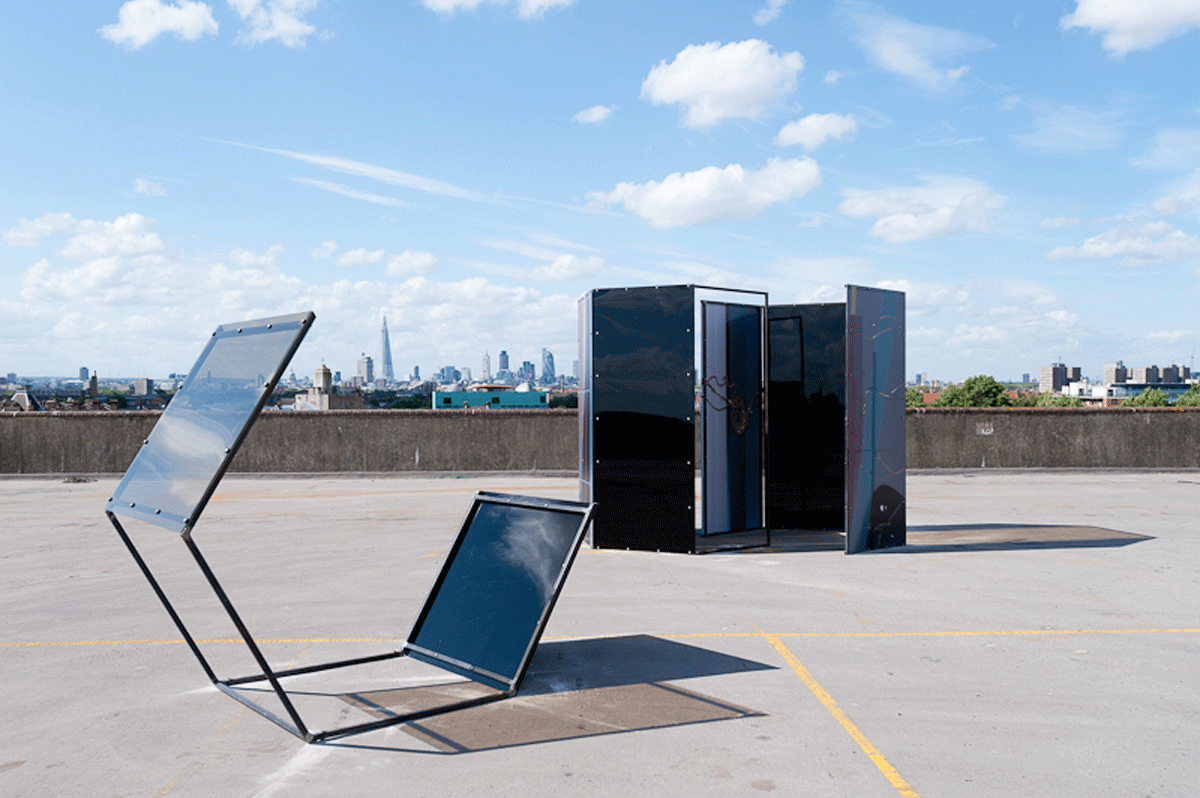
Laura Buckley
Byōbu, 2012
Photo: Damian Griffiths
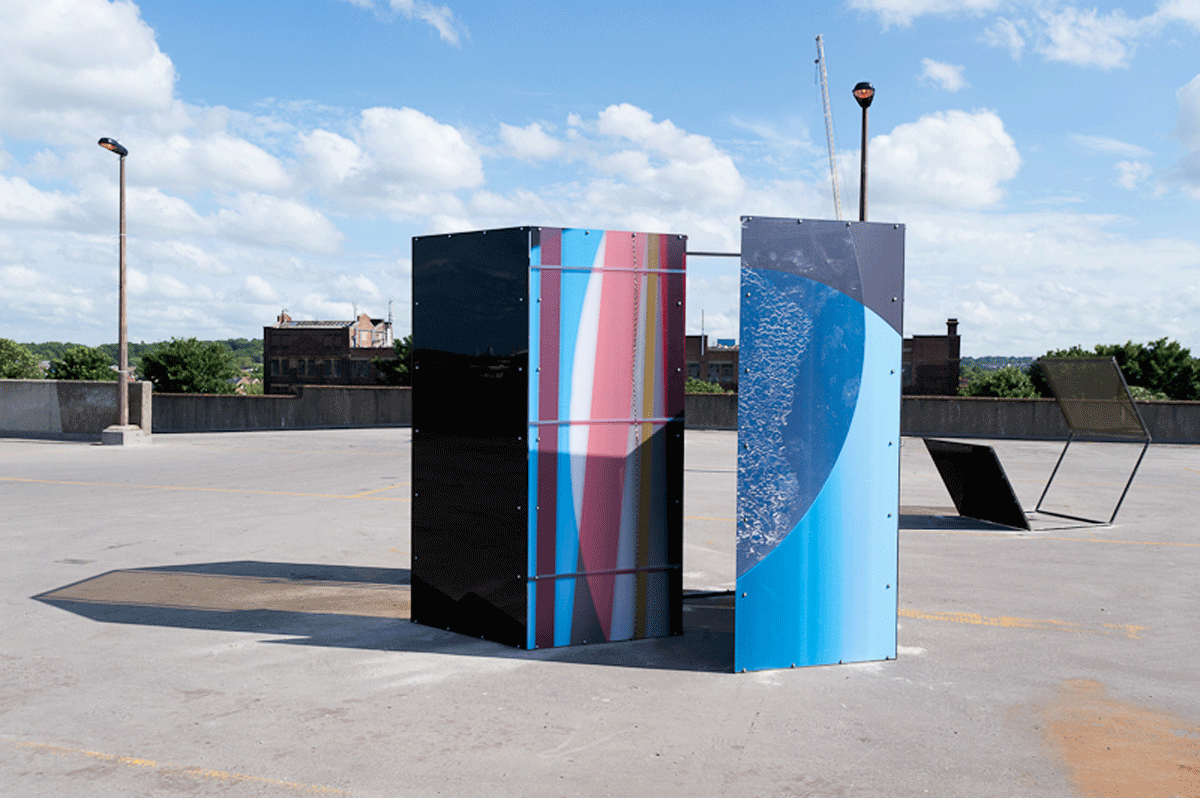
Laura Buckley
Byōbu, 2012
Photo: Damian Griffiths
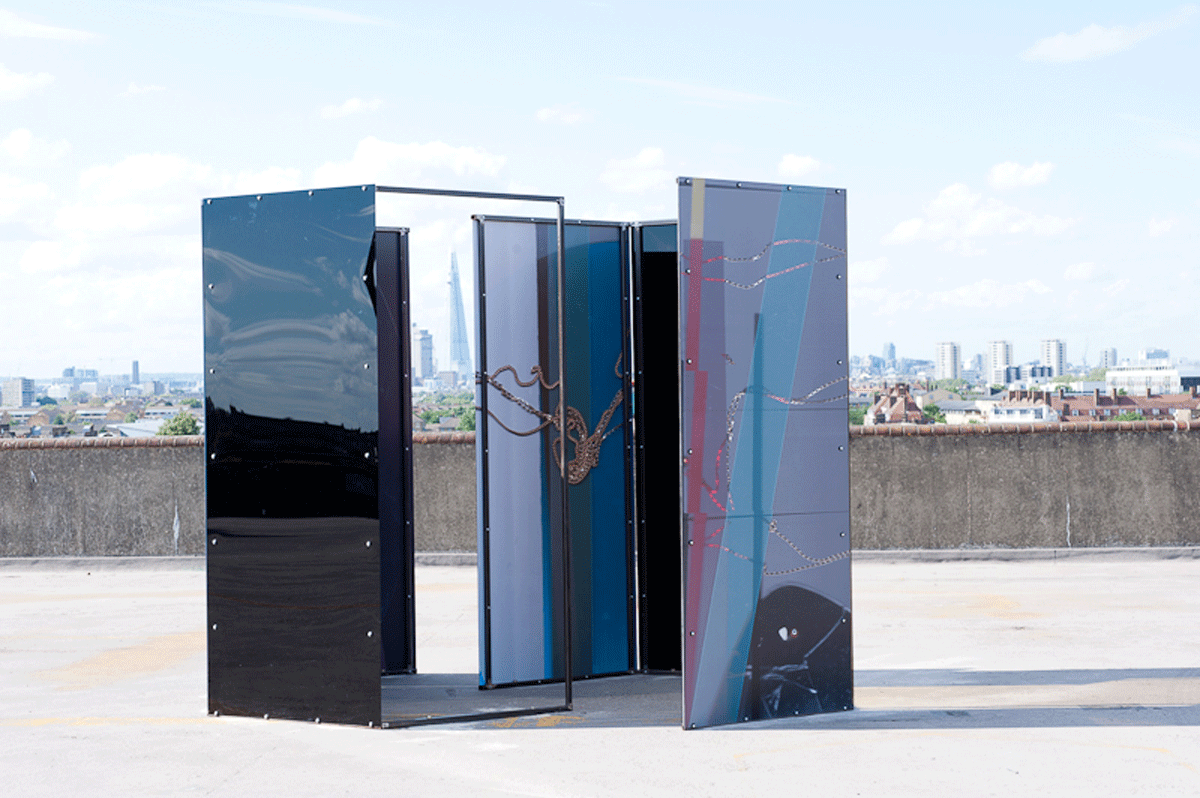
Laura Buckley
Byōbu, 2012
Photo: Damian Griffiths

Sarah Cain
A Beginning, 2012
Photo: Damian Griffiths
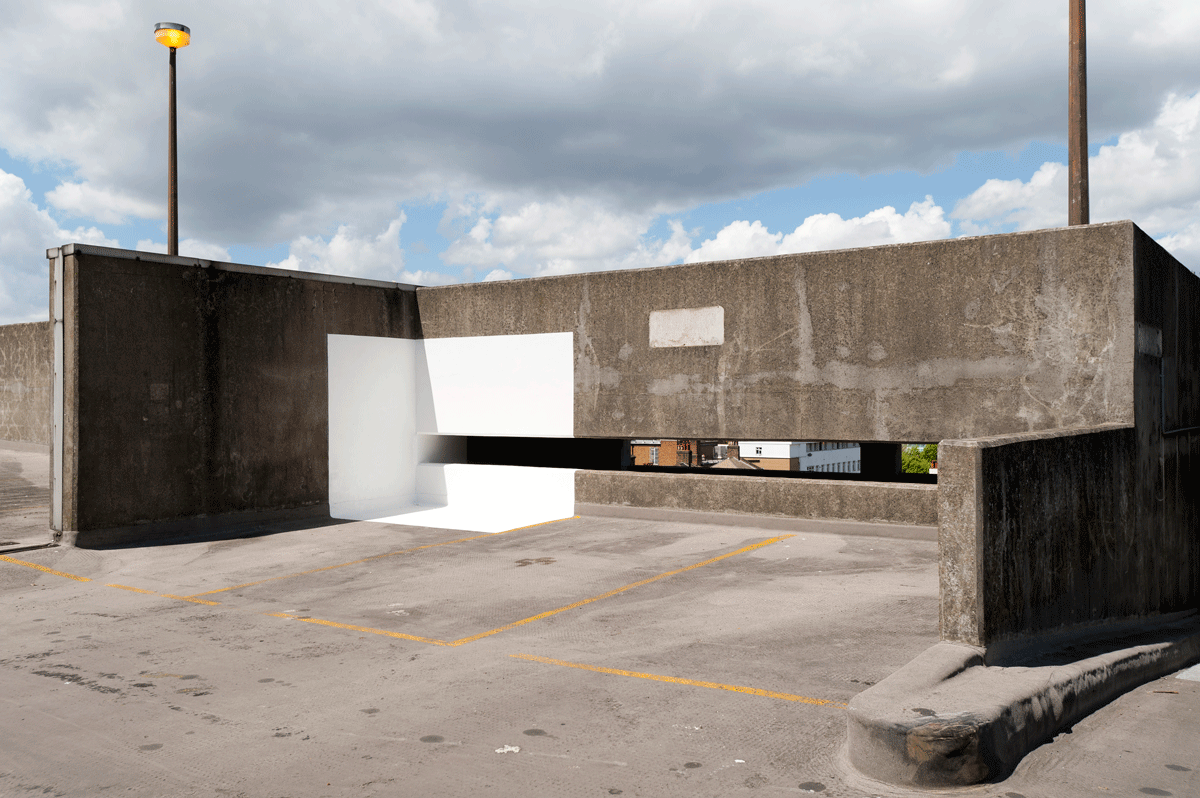
Sarah Cain
A Beginning, 2012
Photo: Damian Griffiths

Sarah Cain
Circling Space, 2012
Photo: Damian Griffiths

Sarah Cain
Dirty, 2012
Photo: Damian Griffiths
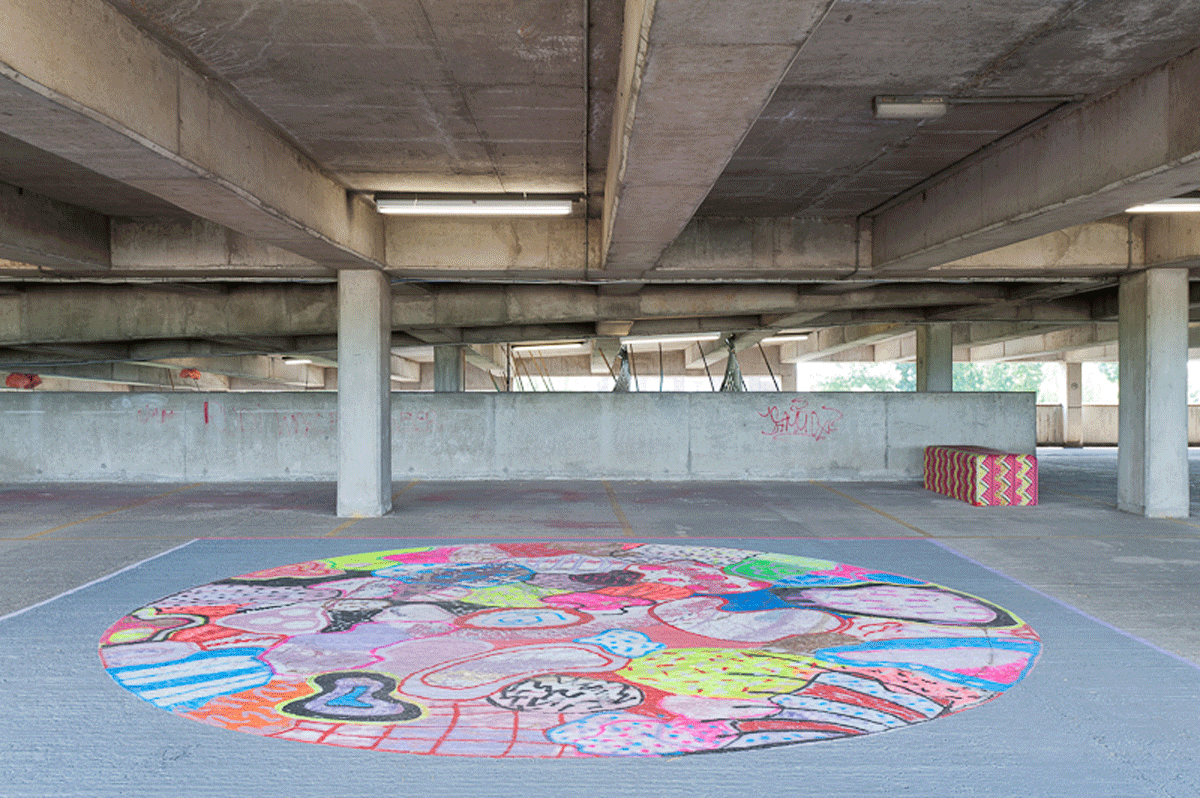
Sarah Cain
Meltdown, 2012
Photo: Damian Griffiths

Sarah Cain
Meltdown, 2012
Photo: Damian Griffiths
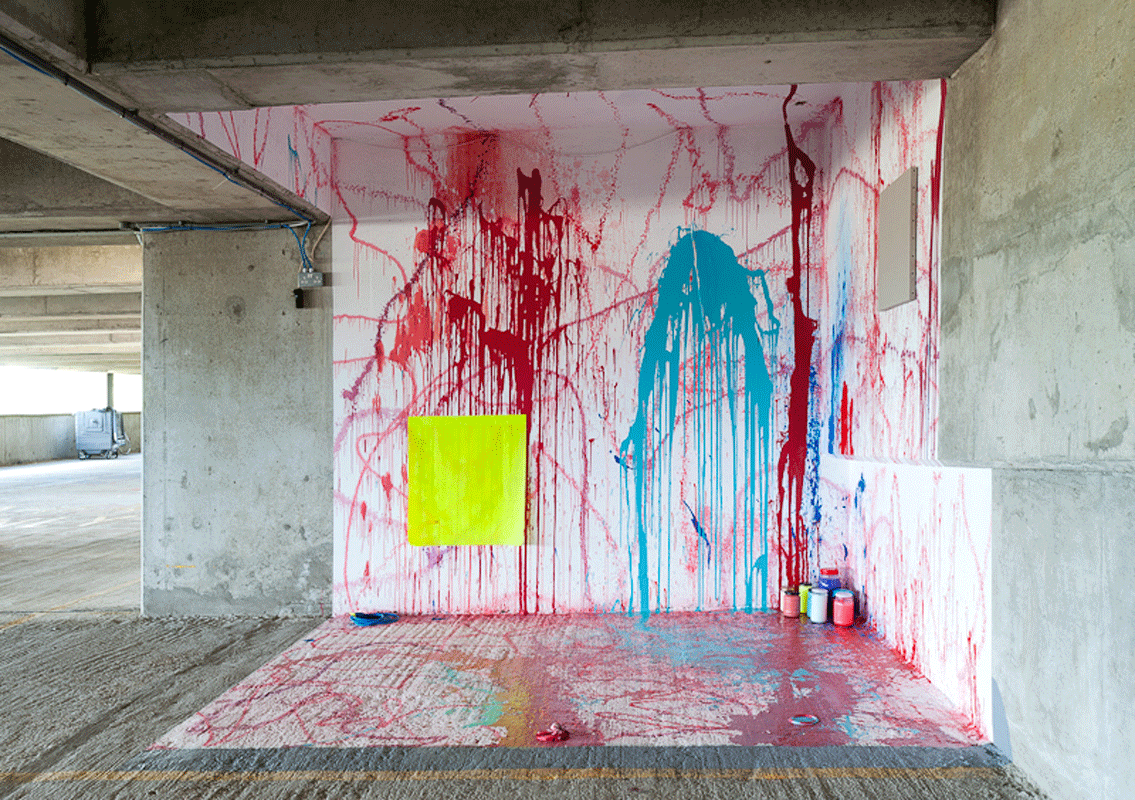
Sarah Cain
Modern, 2012
Photo: Damian Griffiths
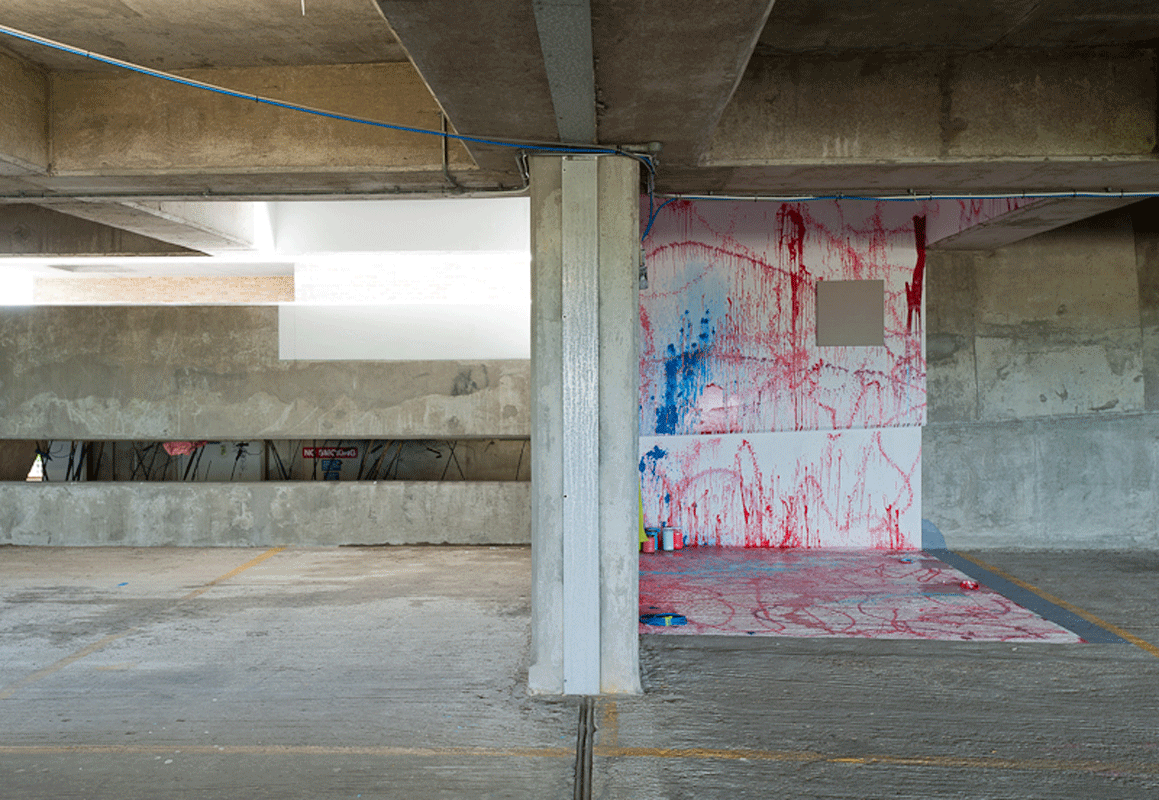
Sarah Cain
Modern, 2012
Photo: Damian Griffiths

Sarah Cain
Seduction, 2012
Photo: Damian Griffiths
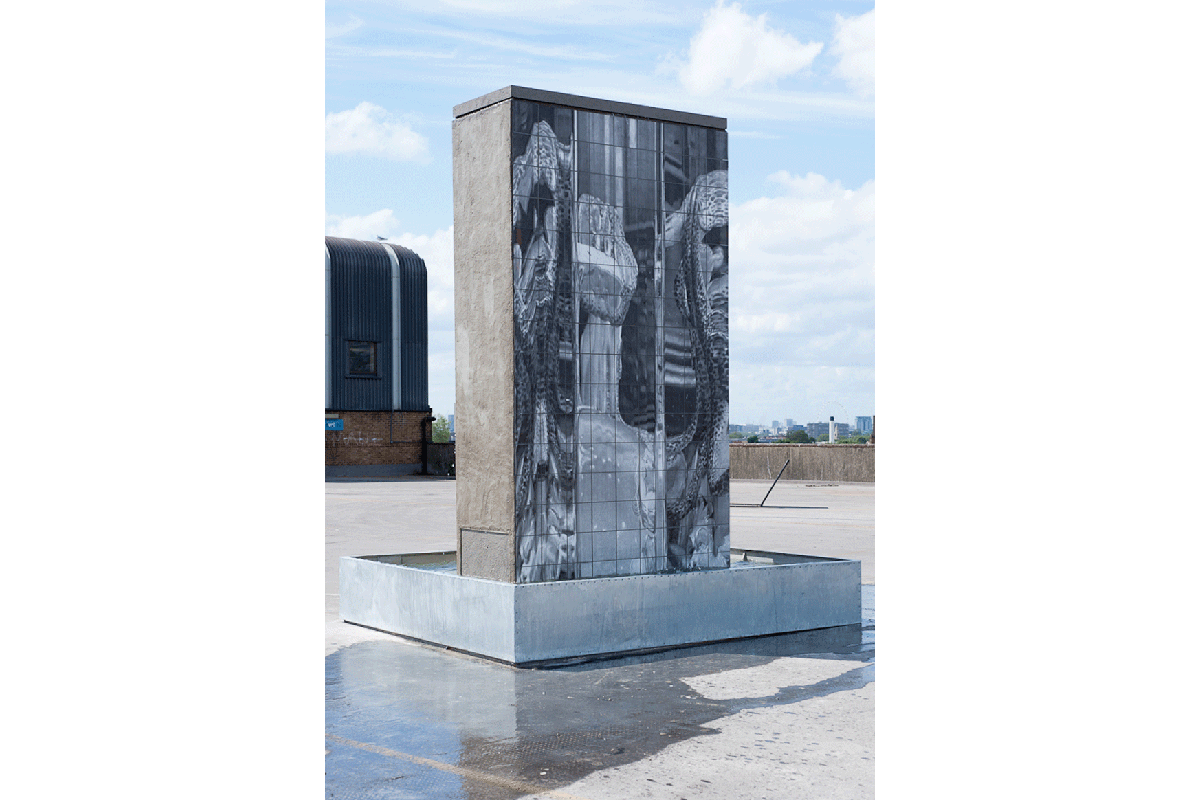
Peles Empire
Fountain I, 2012
Photo: Damian Griffiths

Peles Empire
Fountain I, 2012
Photo: Damian Griffiths
Carter Mull
Lexicon, 2012
Photo: Damian Griffiths
Carter Mull
Lexicon, 2012
Photo: Damian Griffiths
Carter Mull
Lexicon, 2012
Photo: Damian Griffiths
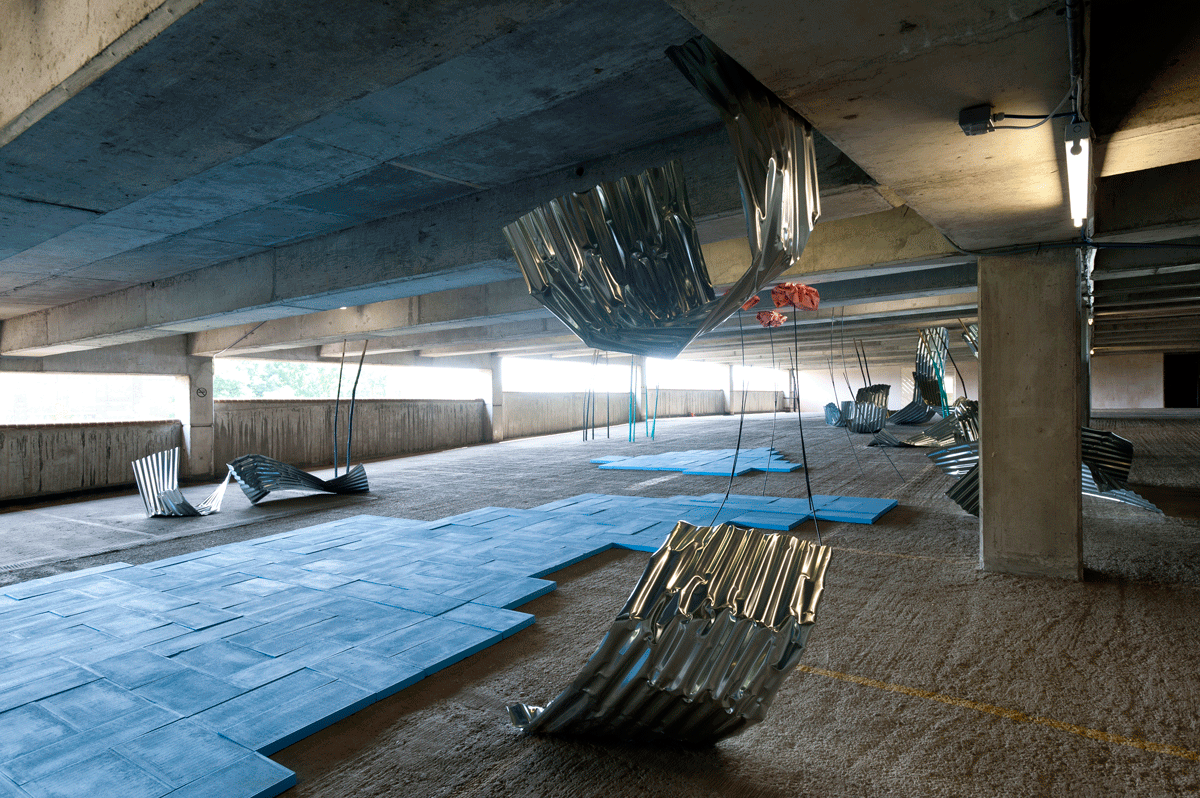
Mary Redmond
Seven Split Overglide, 2012
Photo: Damian Griffiths

Mary Redmond
Seven Split Overglide, 2012
Photo: Damian Griffiths
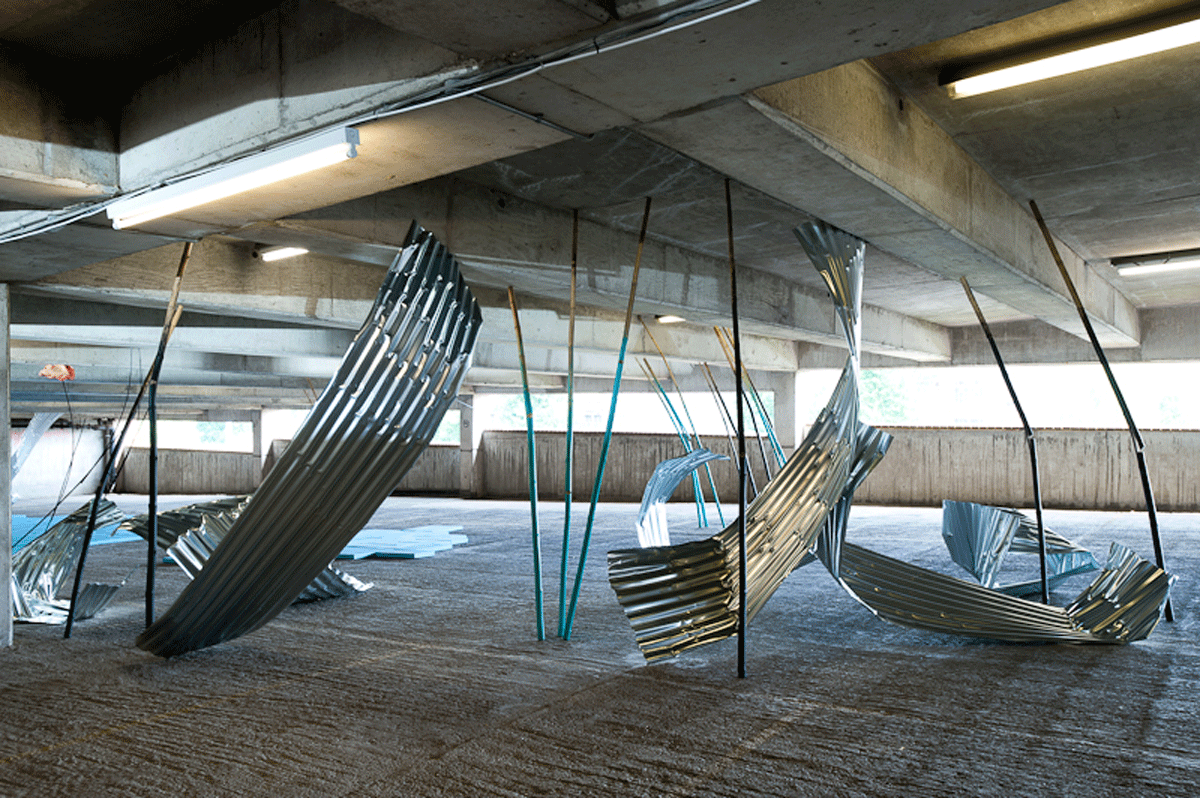
Mary Redmond
Seven Split Overglide, 2012
Photo: Damian Griffiths

Martin Westwood
Pere and Terre Hanging Out At Bistro Repetere, 2012
Photo: Damian Griffiths
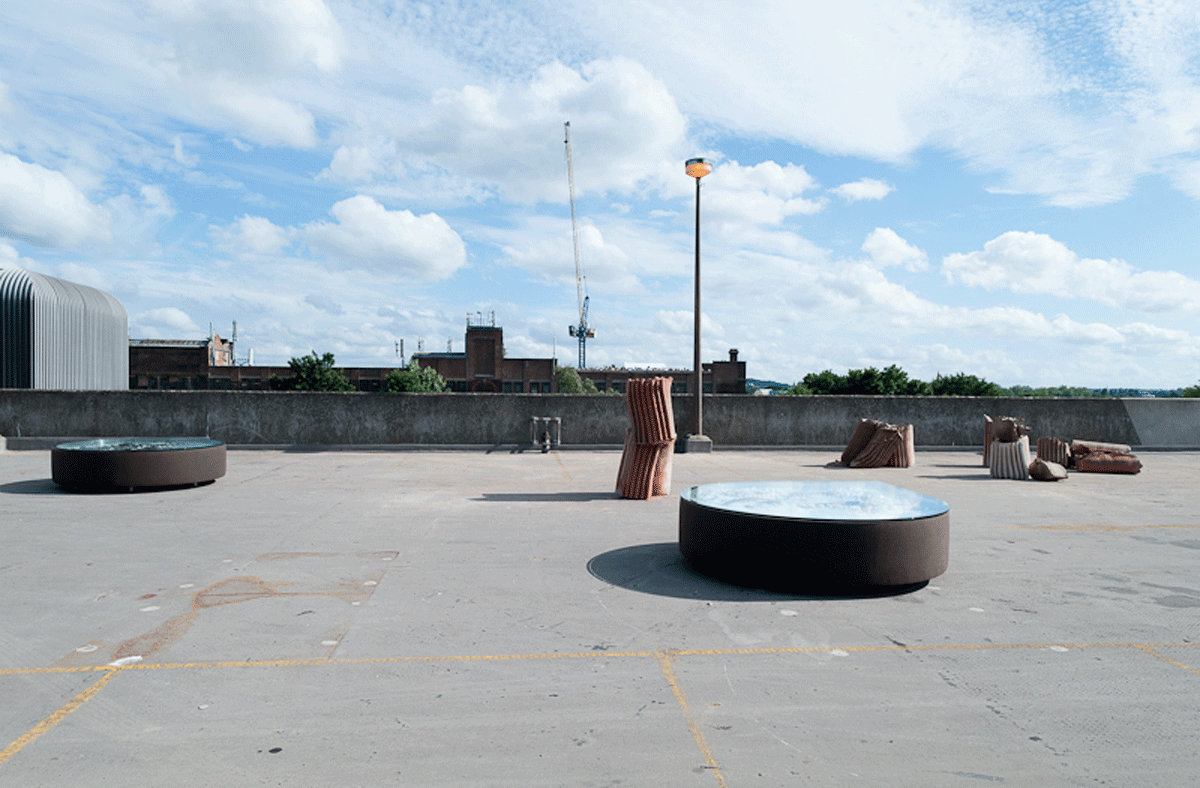
Martin Westwood
Pere and Terre Hanging Out At Bistro Repetere, 2012
Photo: Damian Griffiths
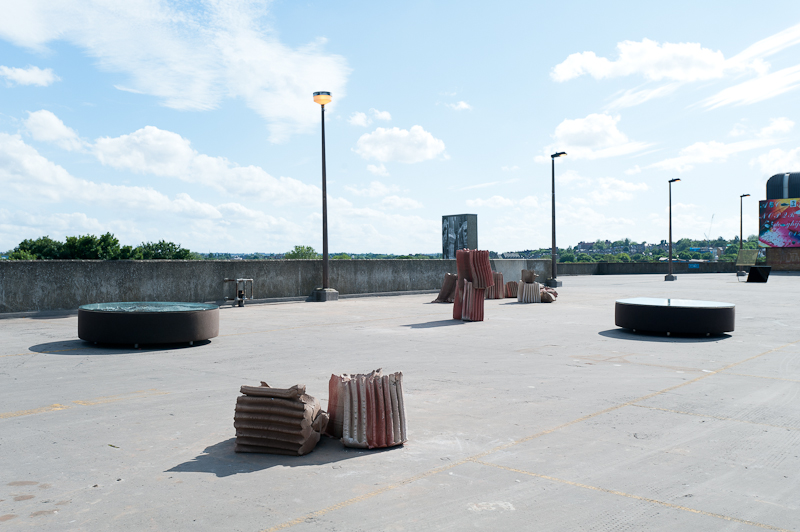
Martin Westwood
Pere and Terre Hanging Out At Bistro Repetere, 2012
Photo: Damian Griffiths
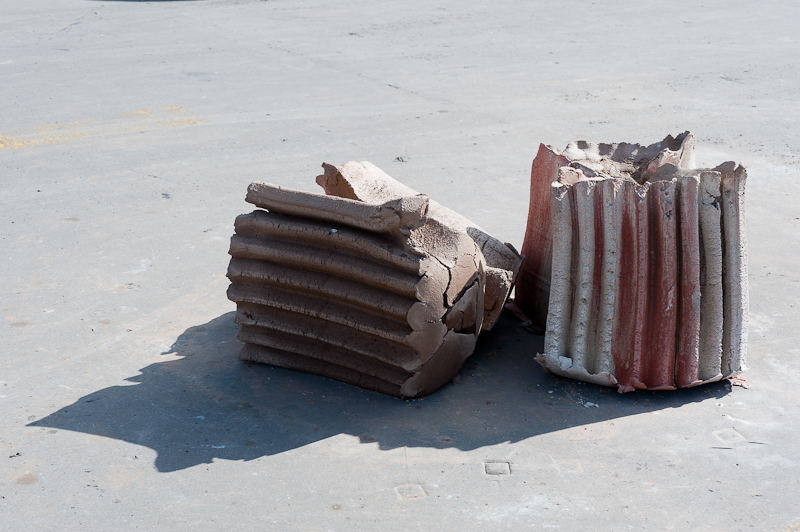
Martin Westwood
Pere and Terre Hanging Out At Bistro Repetere, 2012
Photo: Damian Griffiths
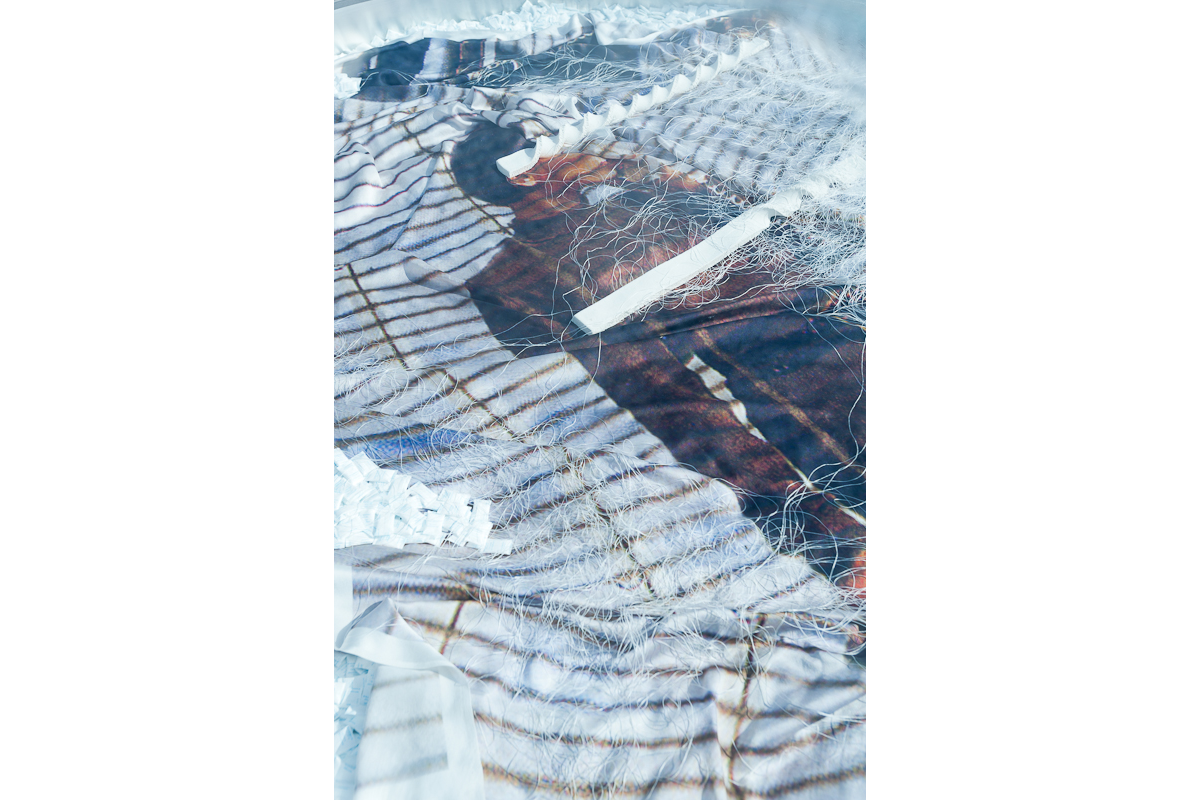
Martin Westwood
Pere and Terre Hanging Out At Bistro Repetere, 2012
Photo: Damian Griffiths

Eva Berendes, Untitled (Osaka)
David Brooks, Adaptable Boardwalk (With Three Genetic Drifts)
Mircea Cantor, More Cheeks Than Slaps
James Capper, RIPPER TEETH
Rachael Champion, Economies of Scale
Michael Dean, Harvest and Architecture
Jess Flood-Paddock, New York – Paris – Peckham
Lilah Fowler, Tube: Fencing
Camille Henrot, The Price of Danger
Matt Keegan & James Richards, Baby’s Breath
Kitty Kraus, Untitled
Mamiko Otsubo, Hammock
Bettina Pousttchi, Ahead Only
The Bruce High Quality Foundation, Stay With Me Baby
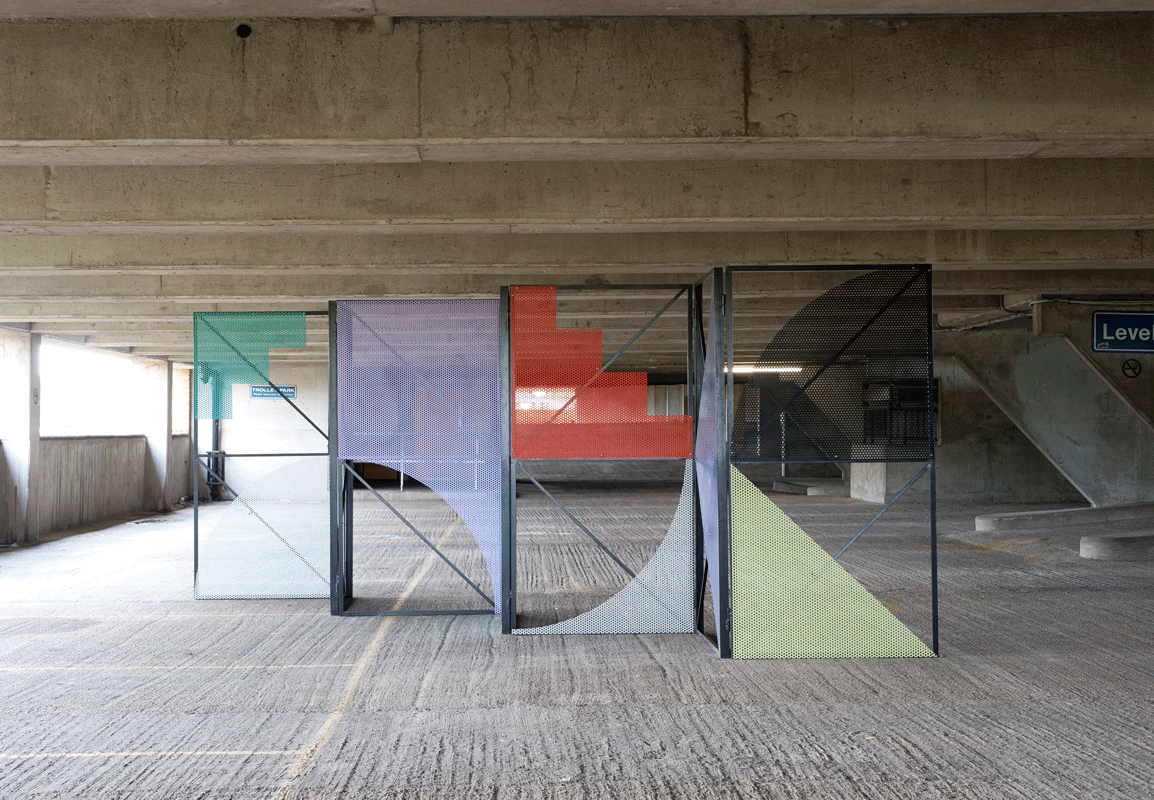
Eva Berendes
Untitled (Osaka), 2011
Photo: Damian Griffiths
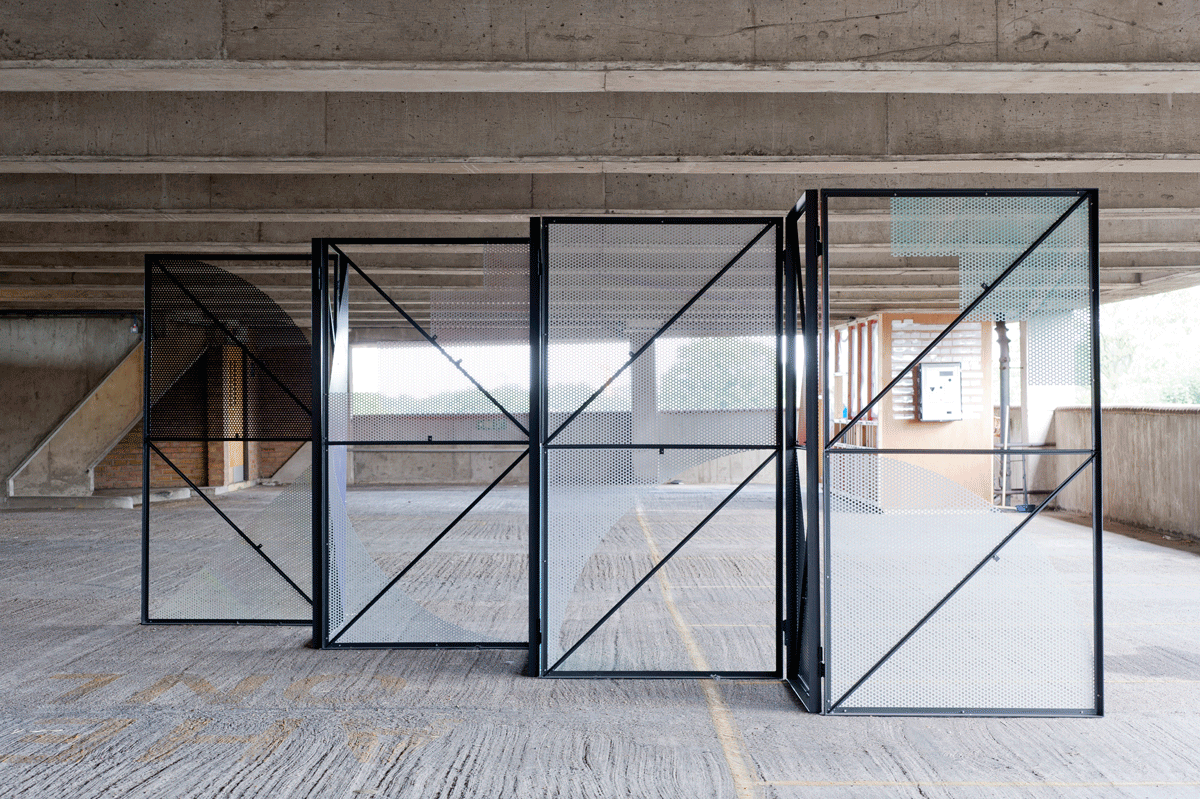
Eva Berendes
Untitled (Osaka), 2011
Photo: Damian Griffiths

David Brooks
Adaptable Boardwalk (With Three Genetic Drifts), 2011
Photo: Damian Griffiths
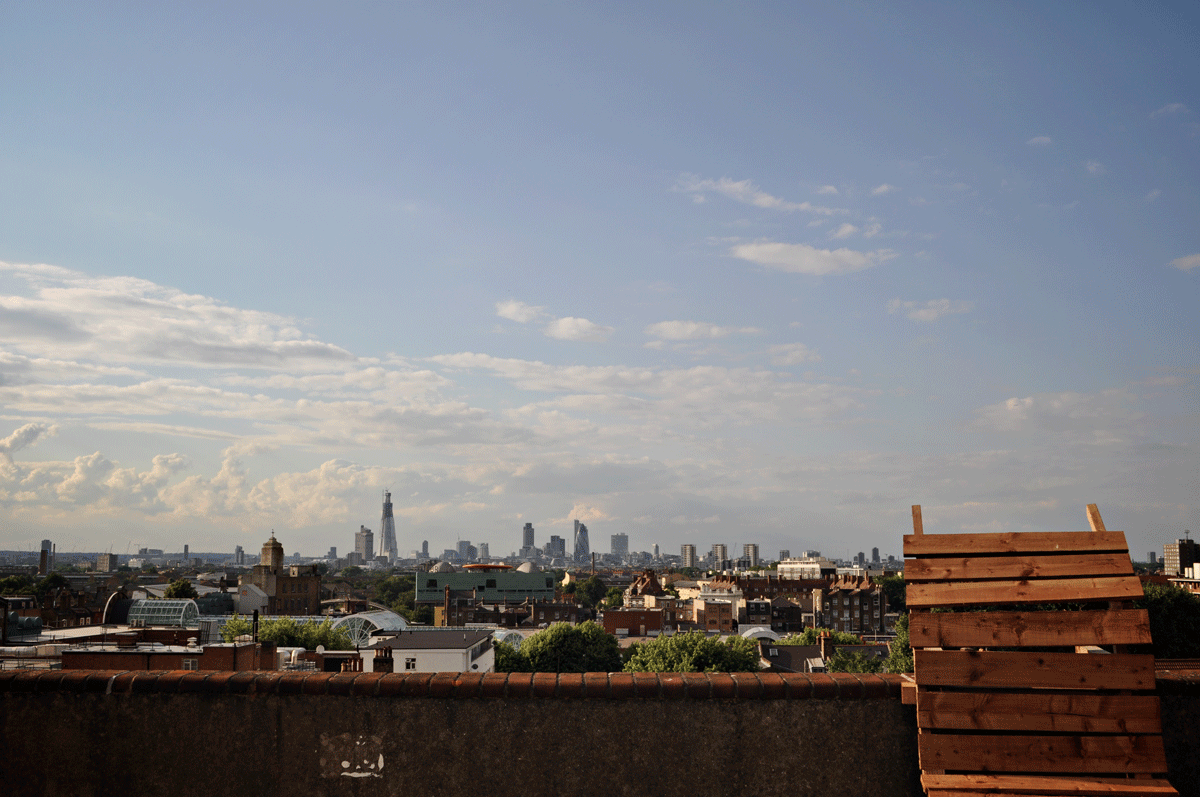
David Brooks
Adaptable Boardwalk (With Three Genetic Drifts), 2011
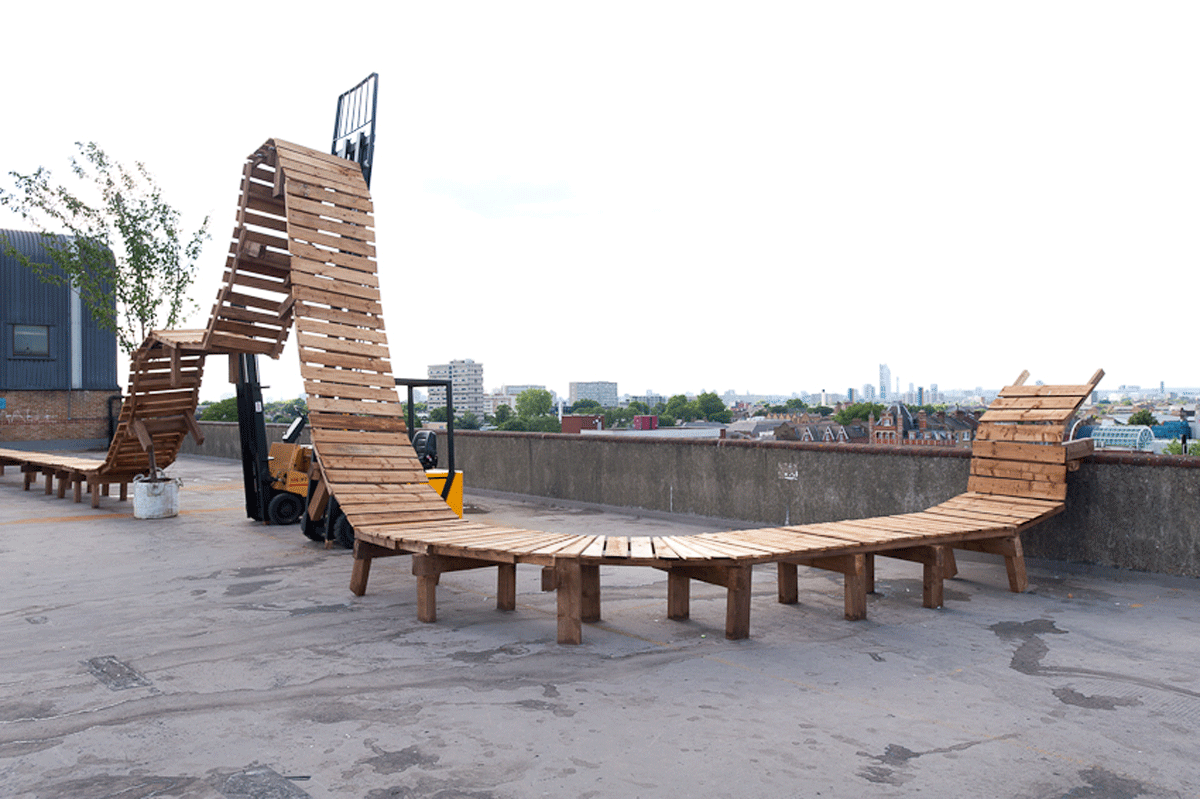
David Brooks
Adaptable Boardwalk (With Three Genetic Drifts), 2011
Photo: Damian Griffiths

David Brooks
Adaptable Boardwalk (With Three Genetic Drifts), 2011
Photo: Damian Griffiths
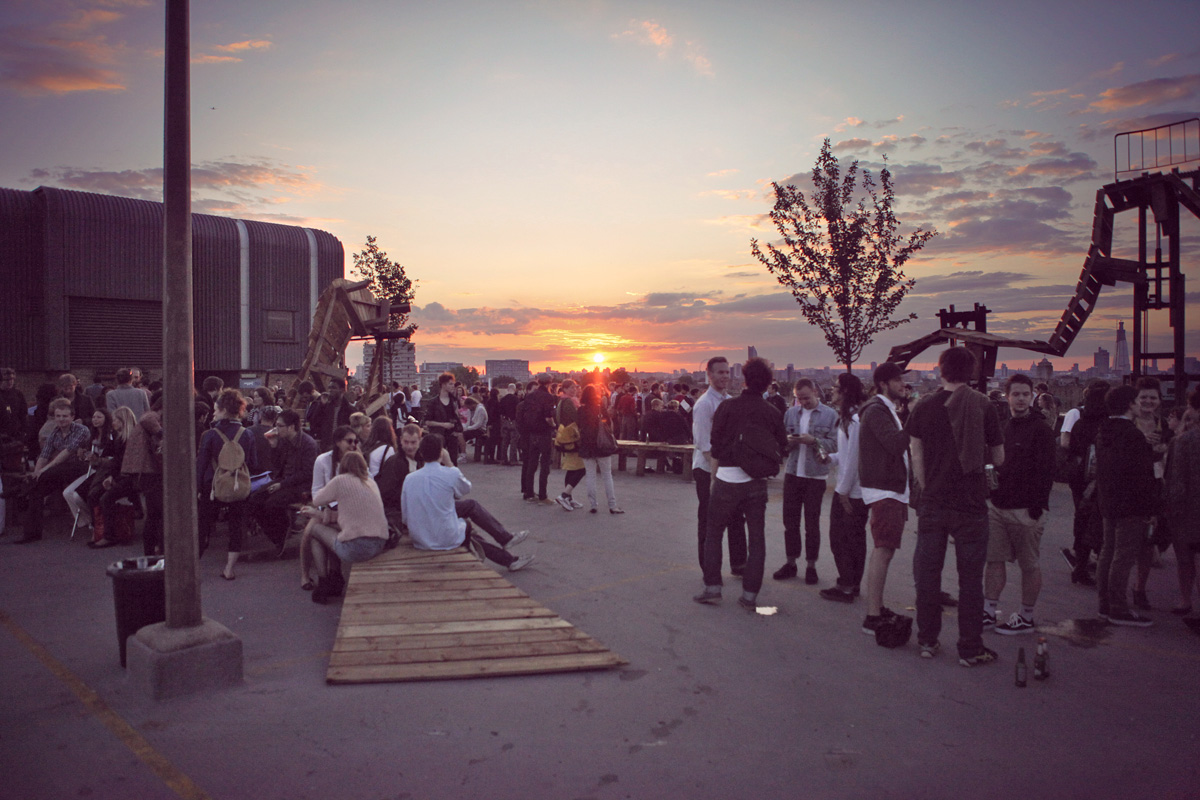
David Brooks
Adaptable Boardwalk (With Three Genetic Drifts), 2011
Photo: Ben Millar Cole
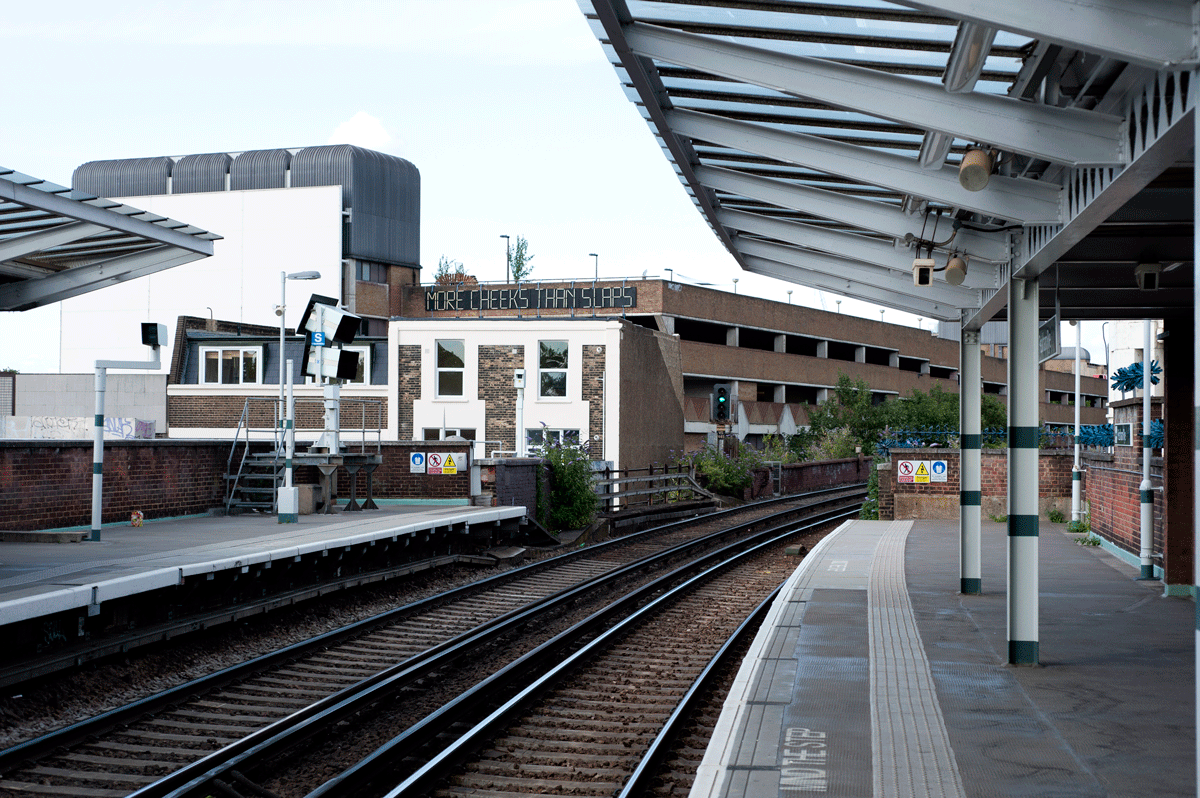
Mircea Cantor
More Cheeks Than Slaps, 2011
Photo: Damian Griffiths
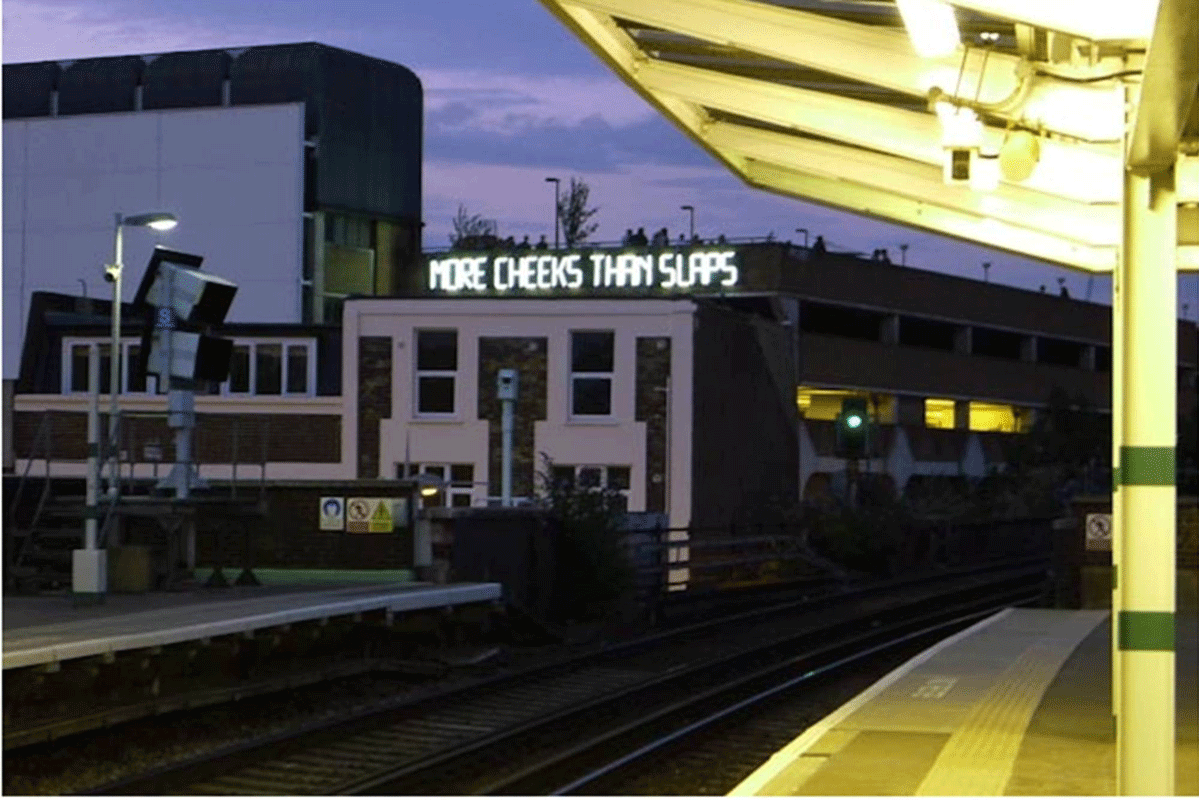
Mircea Cantor
More Cheeks Than Slaps, 2011
Photo: Damian Griffiths
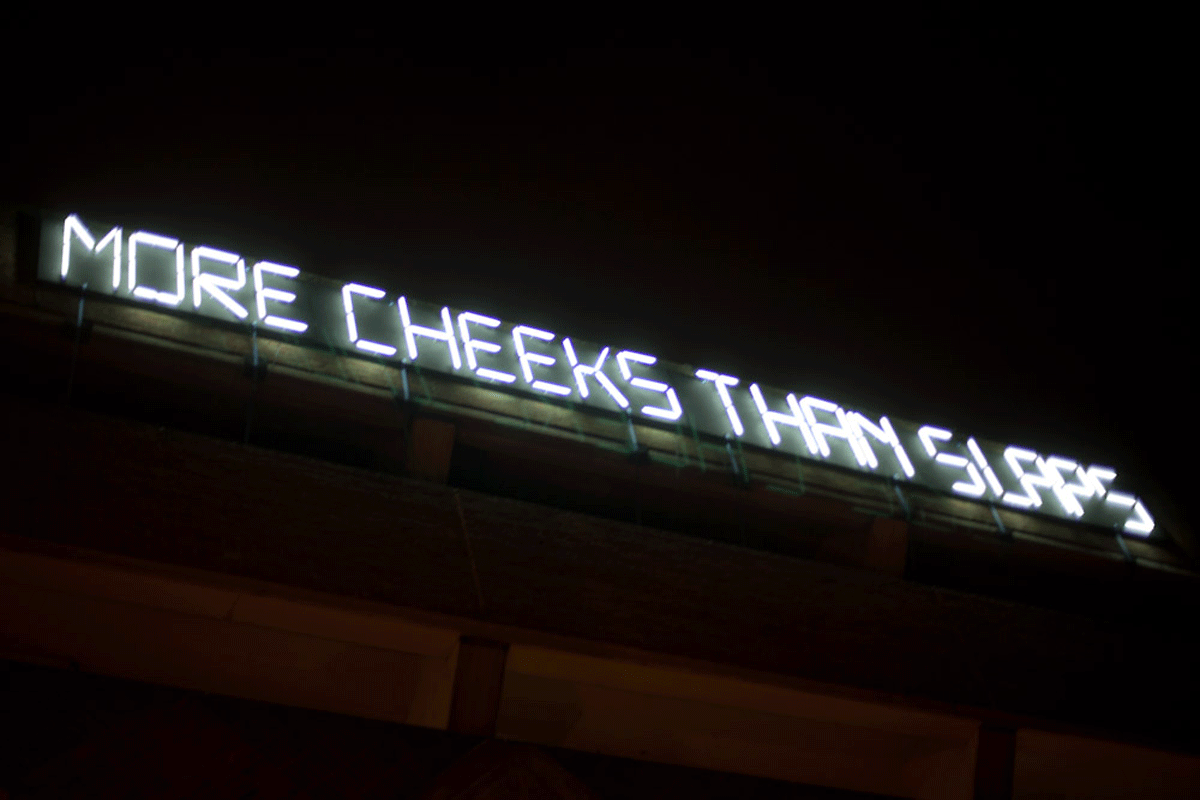
Mircea Cantor
More Cheeks Than Slaps, 2011
Photo: Damian Griffiths
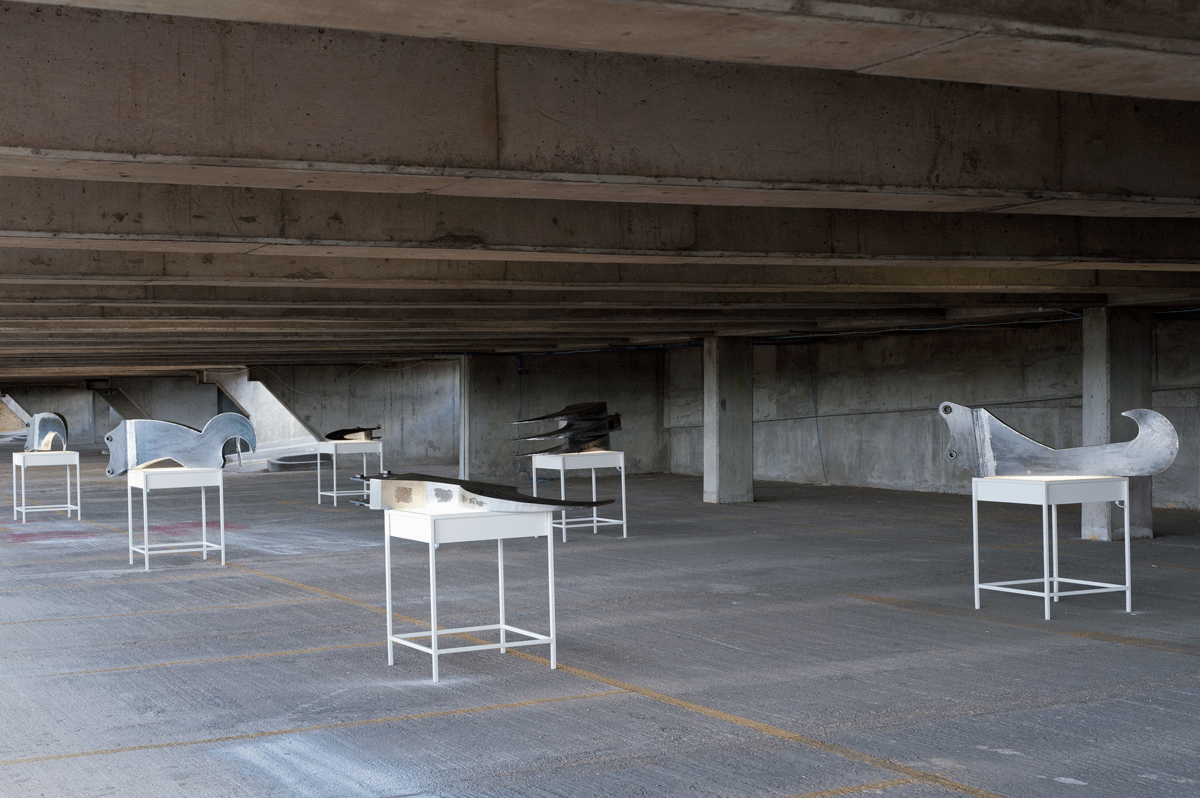
James Capper
RIPPER TEETH, 2011
Photo: Damian Griffiths

James Capper
RIPPER TEETH, 2011
Photo: Damian Griffiths
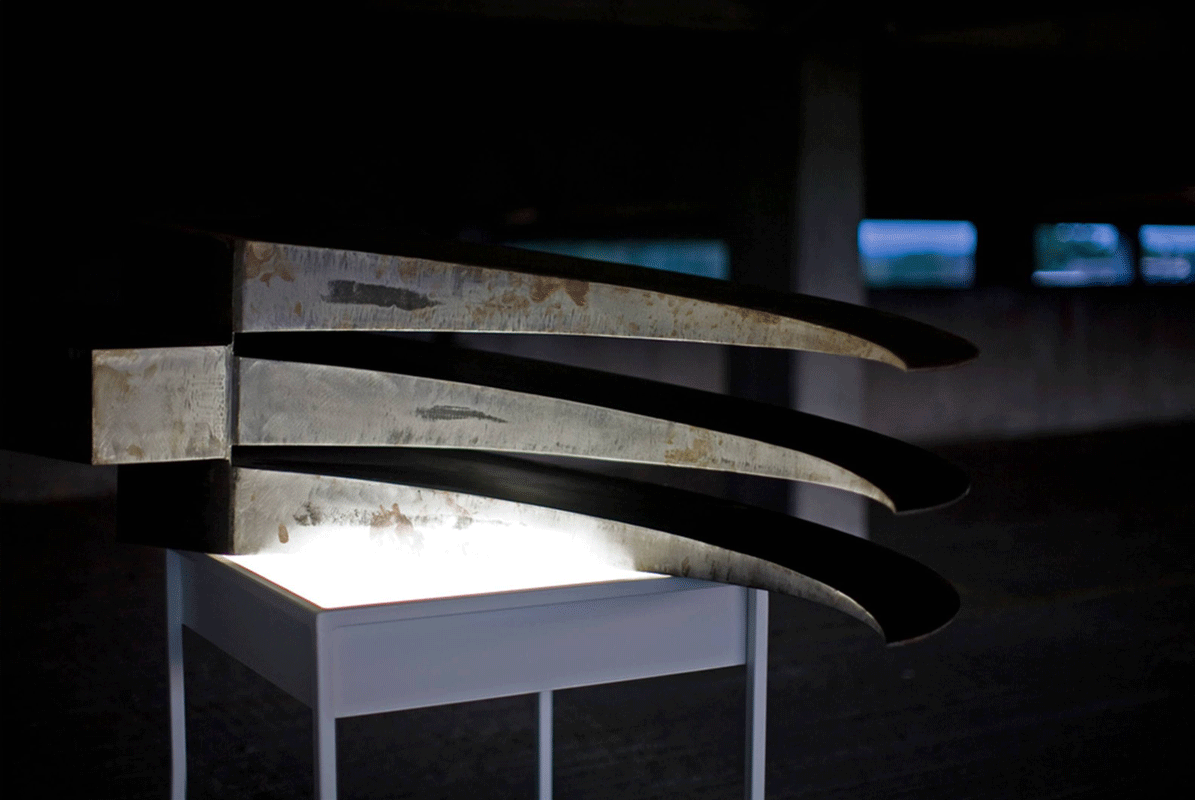
James Capper
RIPPER TEETH, 2011
Photo: Damian Griffiths

James Capper
RIPPER TEETH, 2011
Photo: Damian Griffiths
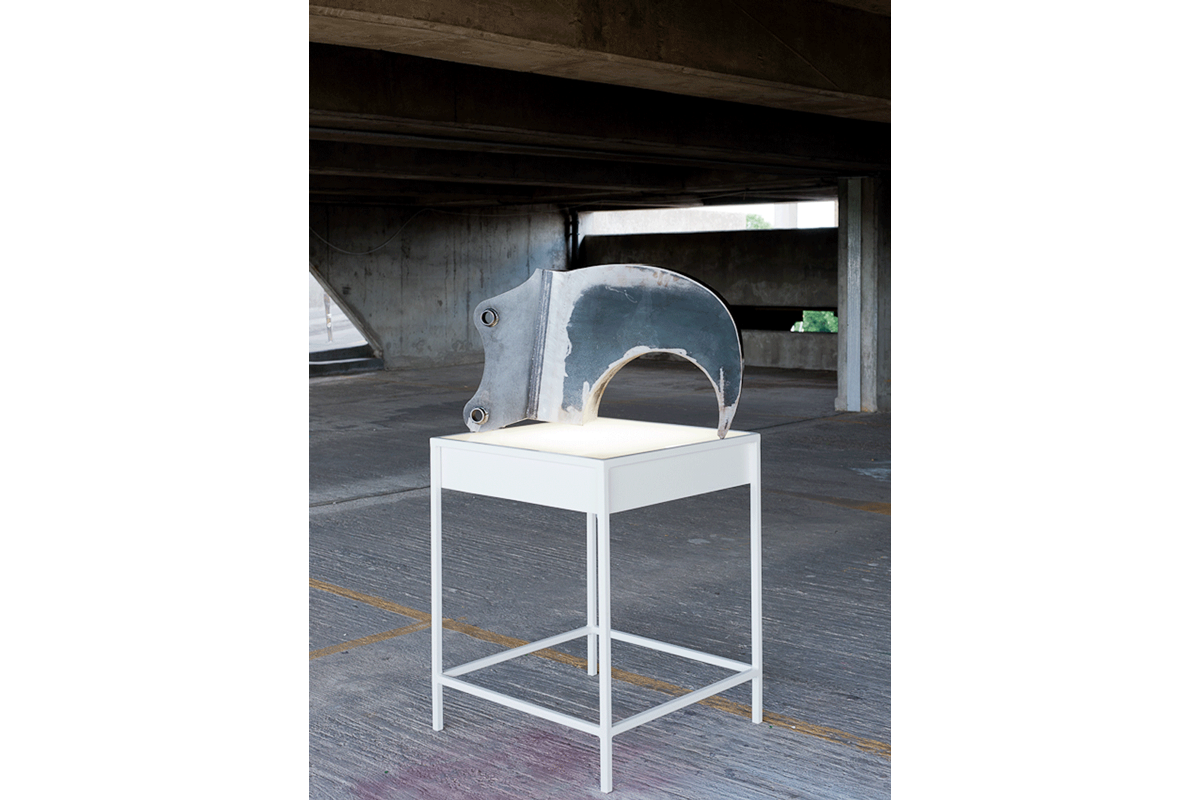
James Capper
RIPPER TEETH, 2011
Photo: Damian Griffiths
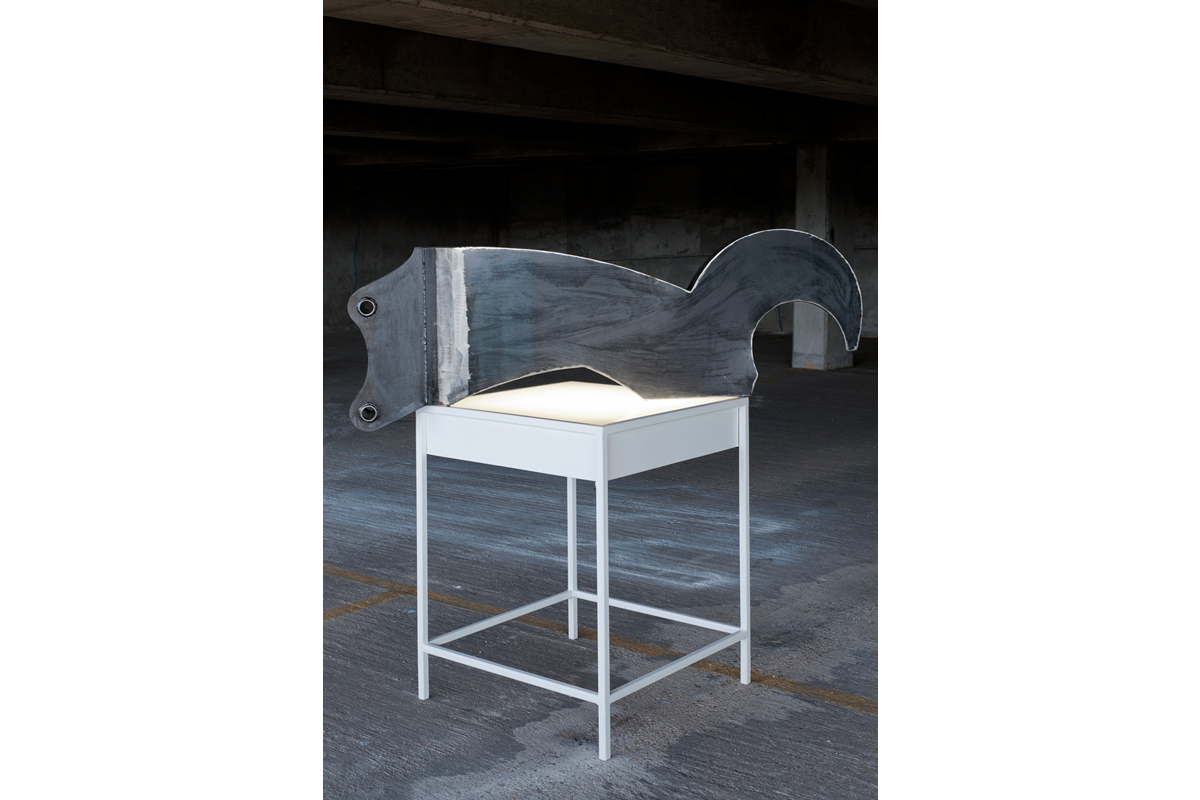
James Capper
RIPPER TEETH, 2011
Photo: Damian Griffiths

Rachael Champion
Economies of Scale, 2011
Photo: Damian Griffiths
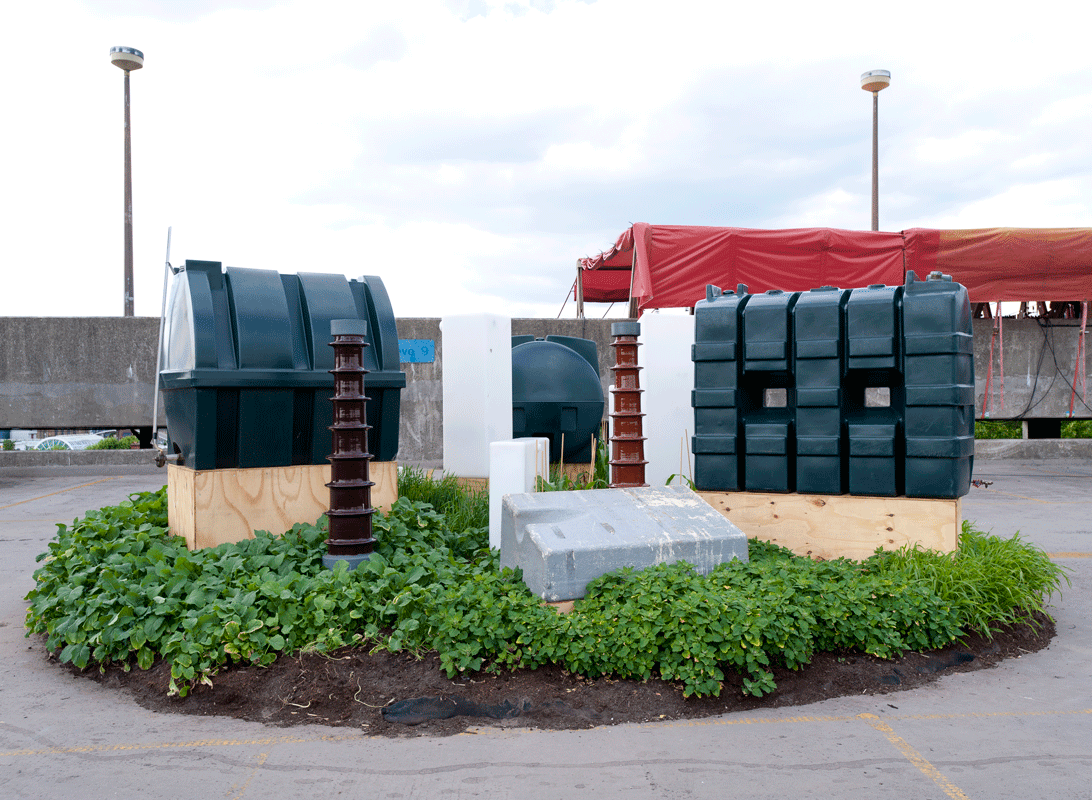
Rachael Champion
Economies of Scale, 2011
Photo: Damian Griffiths
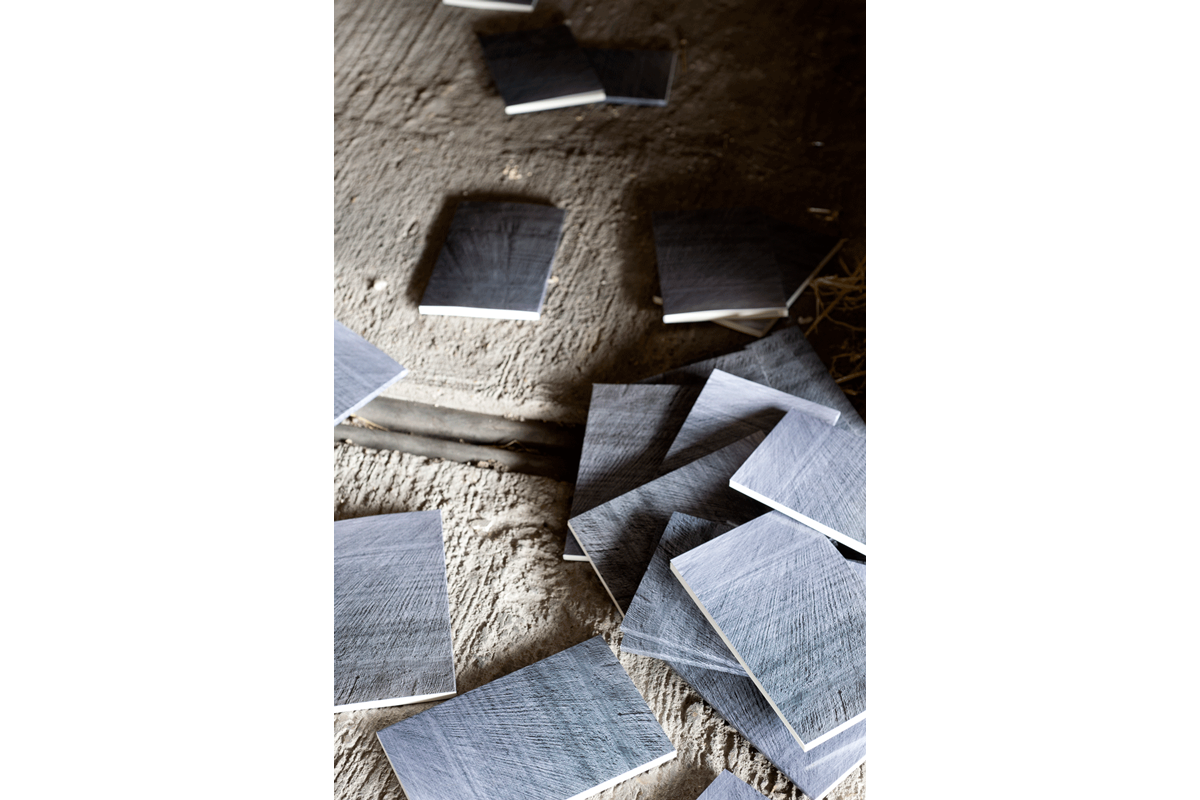
Michael Dean
Harvest and Architecture, 2011
Photo: Damian Griffiths
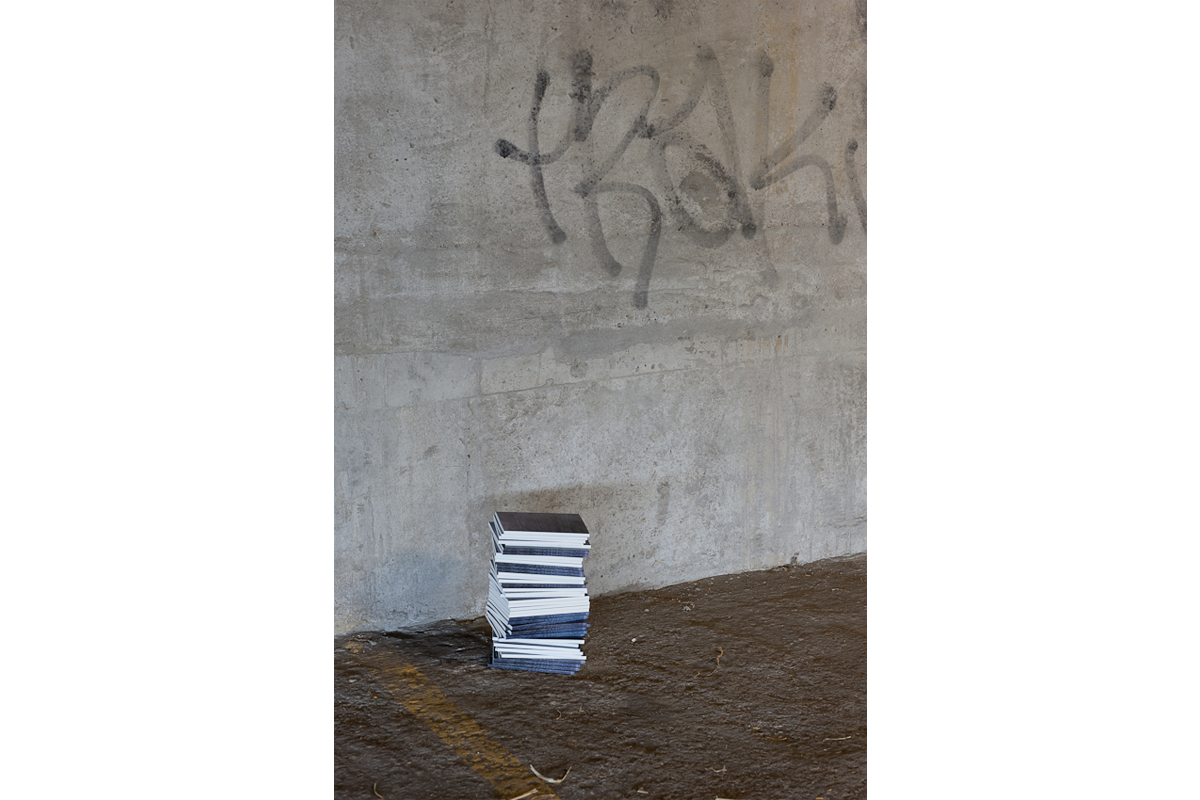
Michael Dean
Harvest and Architecture, 2011
Photo: Damian Griffiths

Jess Flood Paddock
New York – Paris – Peckham, 2011
Photo: Damian Griffiths
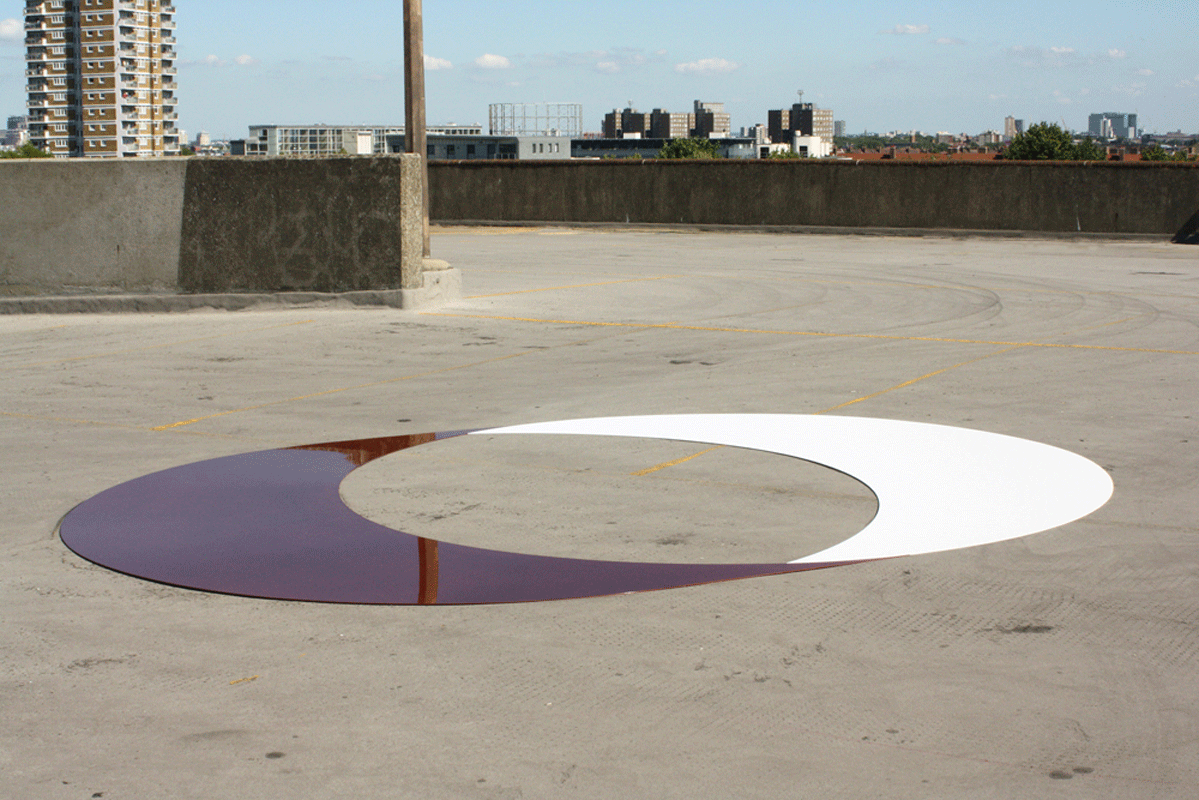
Lilah Fowler
Tube: Fencing, 2011
Photo: Damian Griffiths
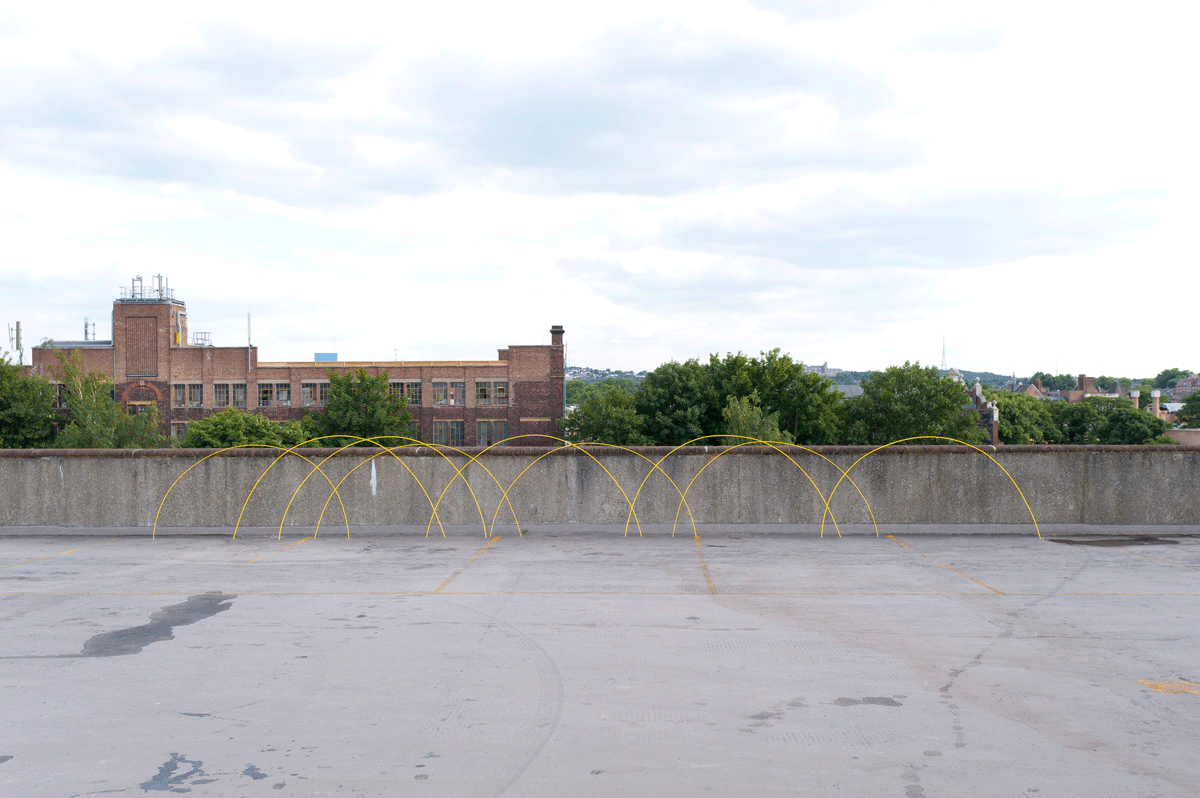
Lilah Fowler
Tube: Fencing, 2011
Photo: Damian Griffiths
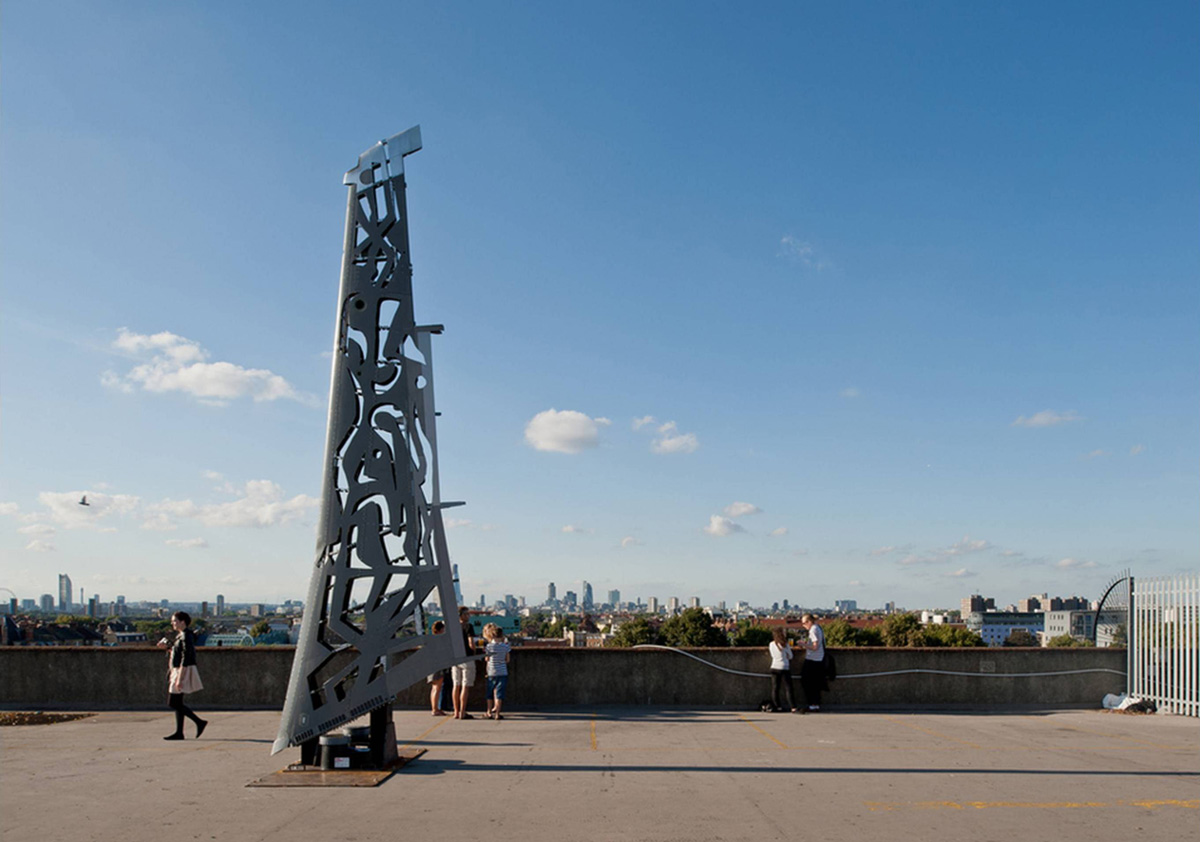
Camille Henrot
The Price of Danger, 2011
Photo: Teddy Fitzhugh